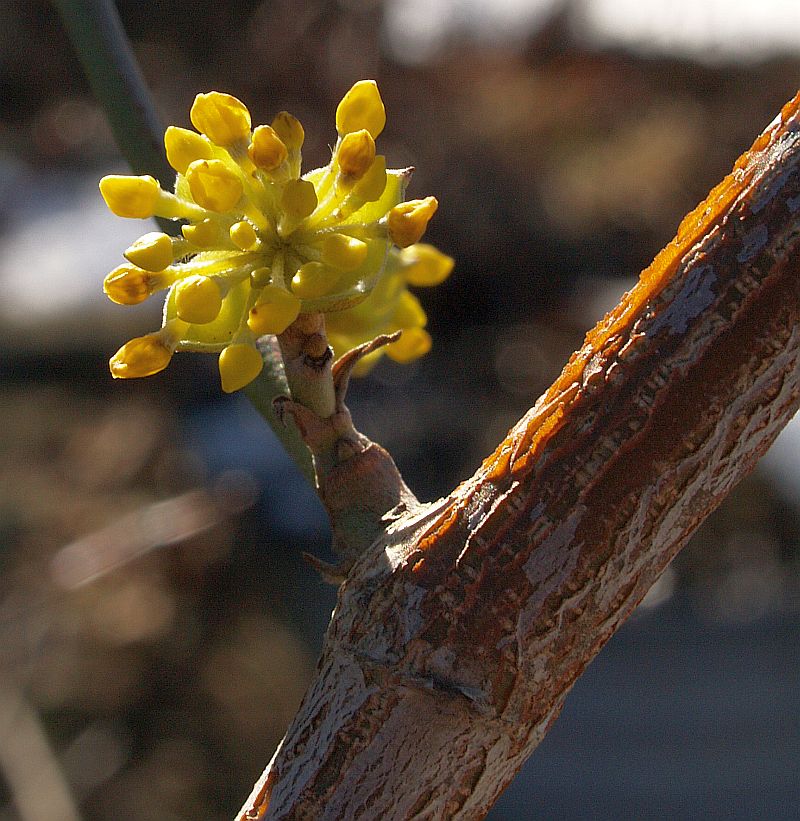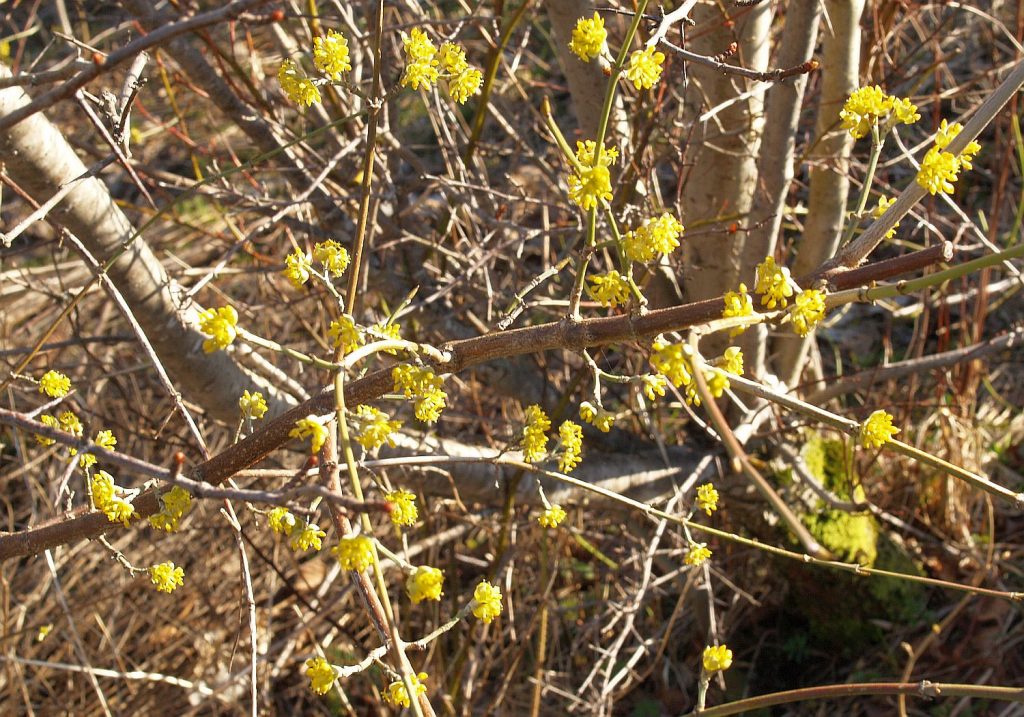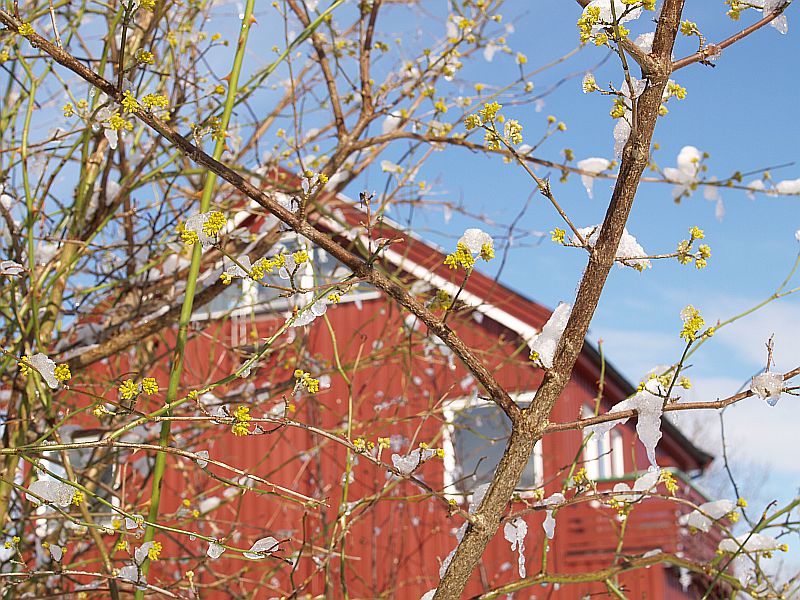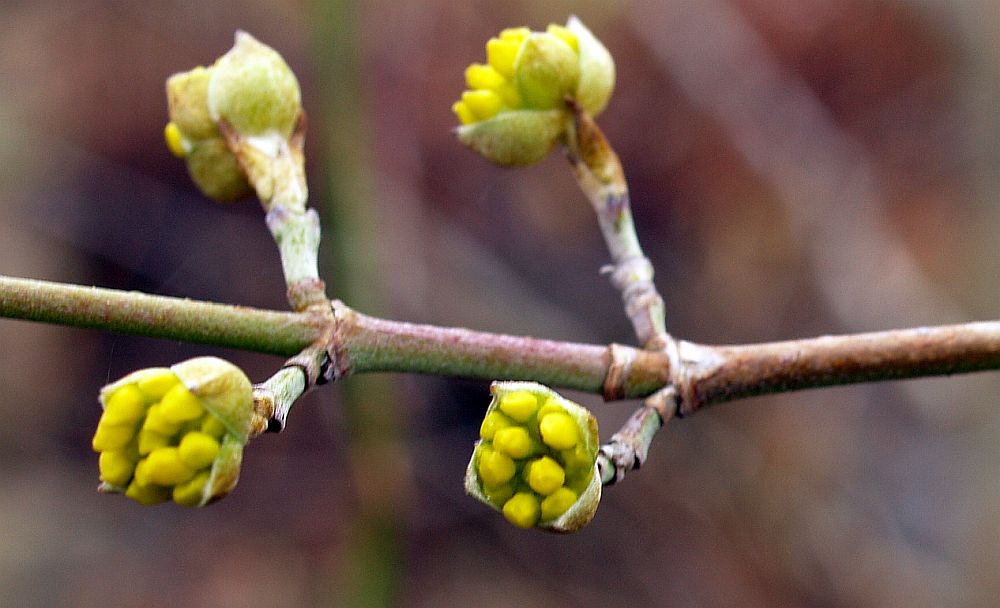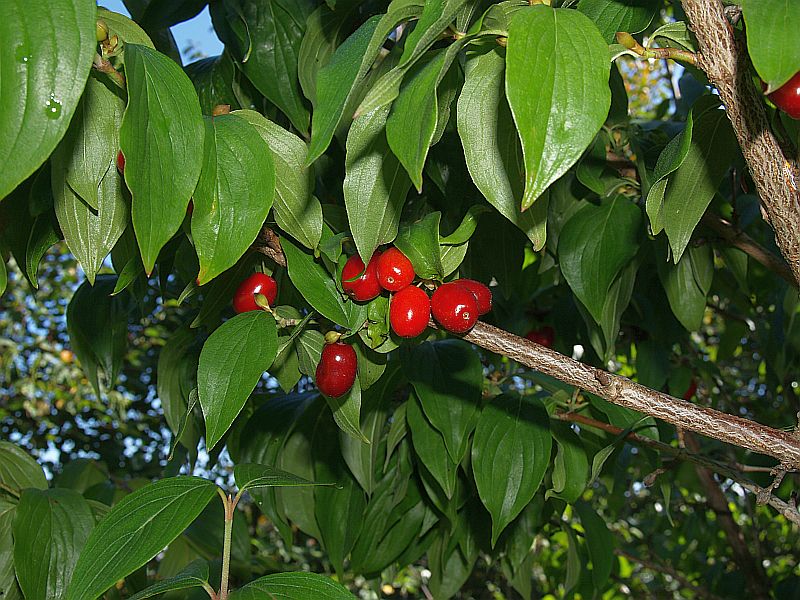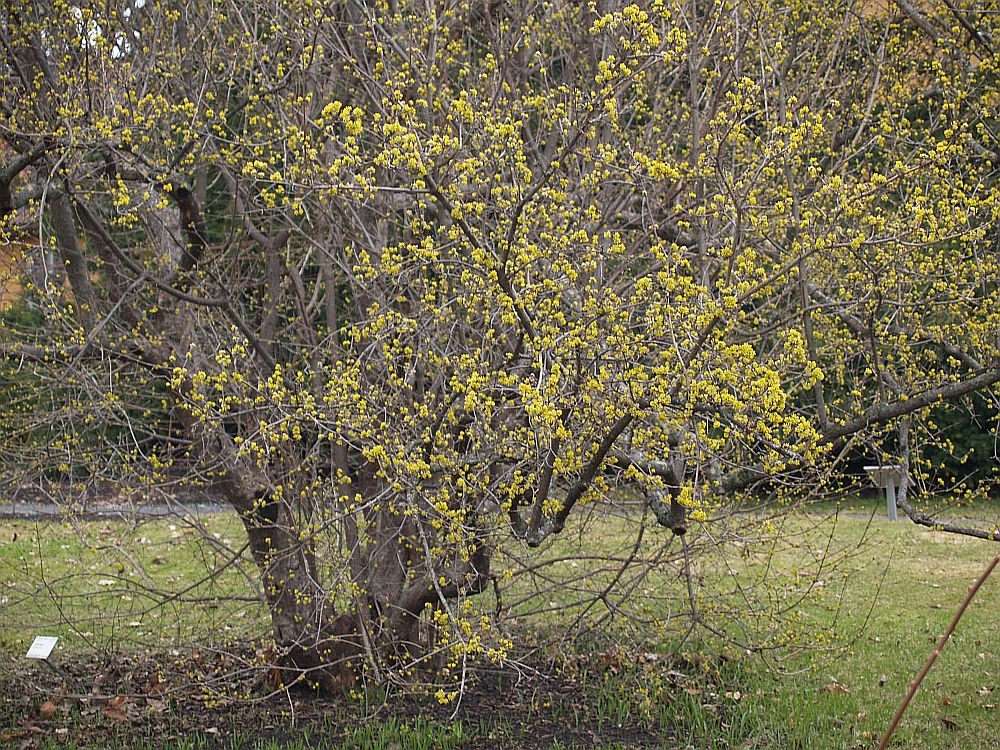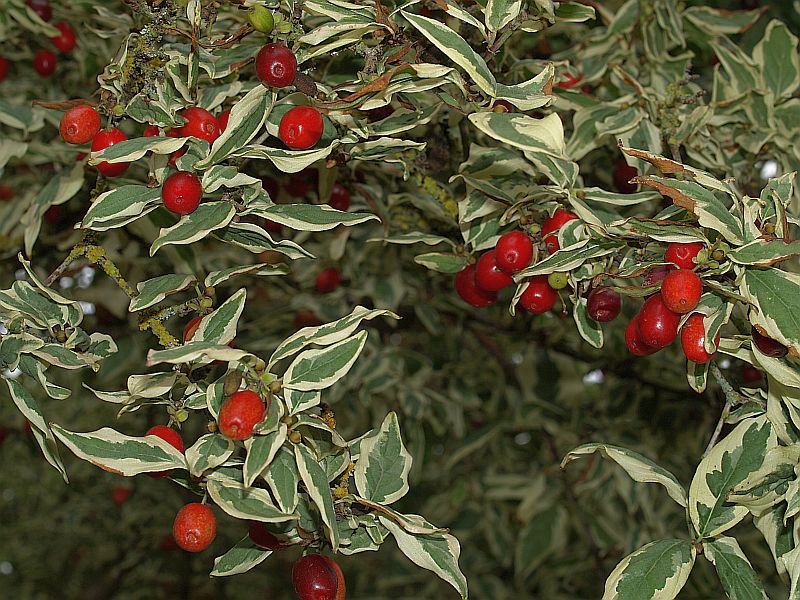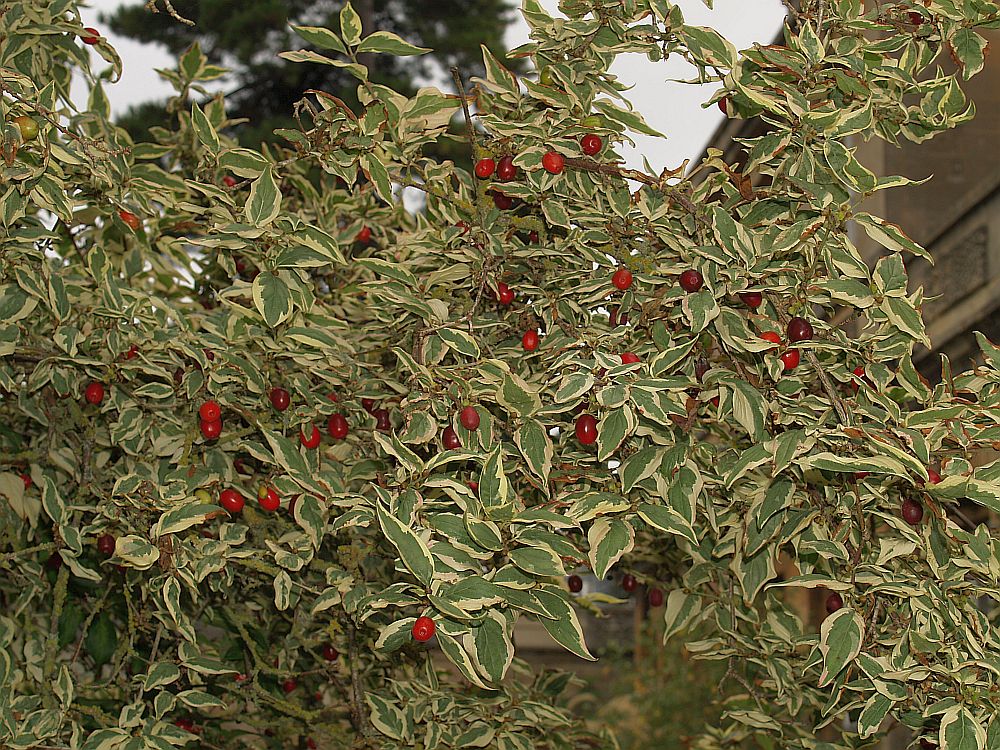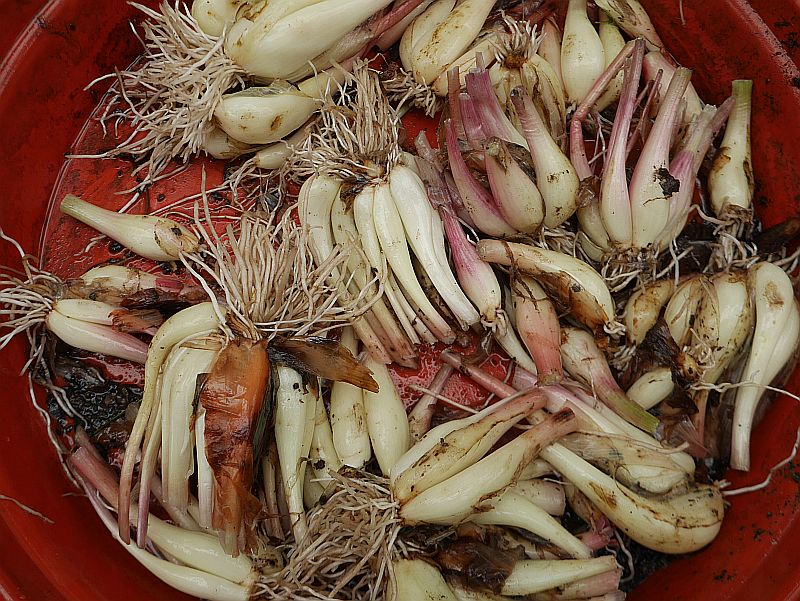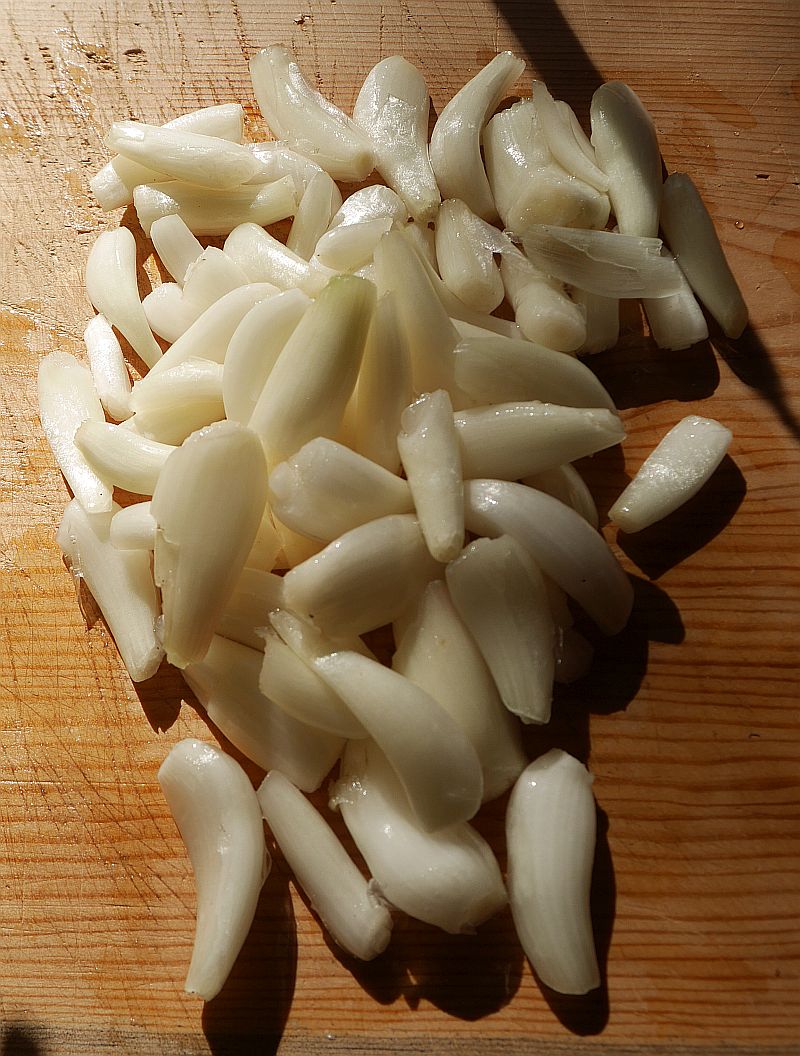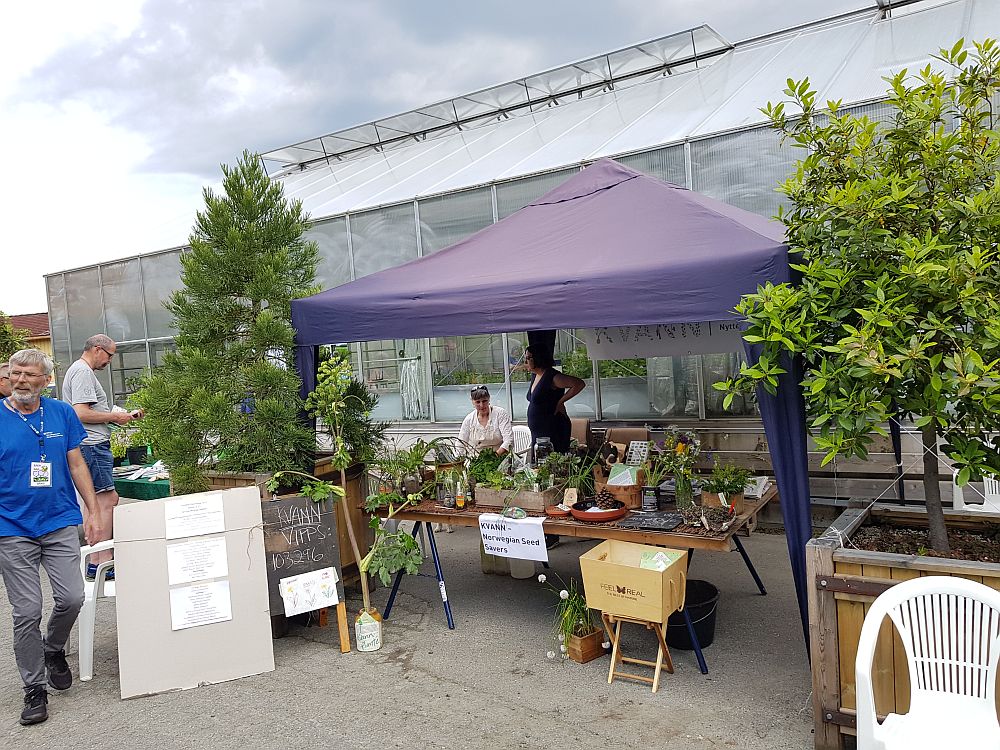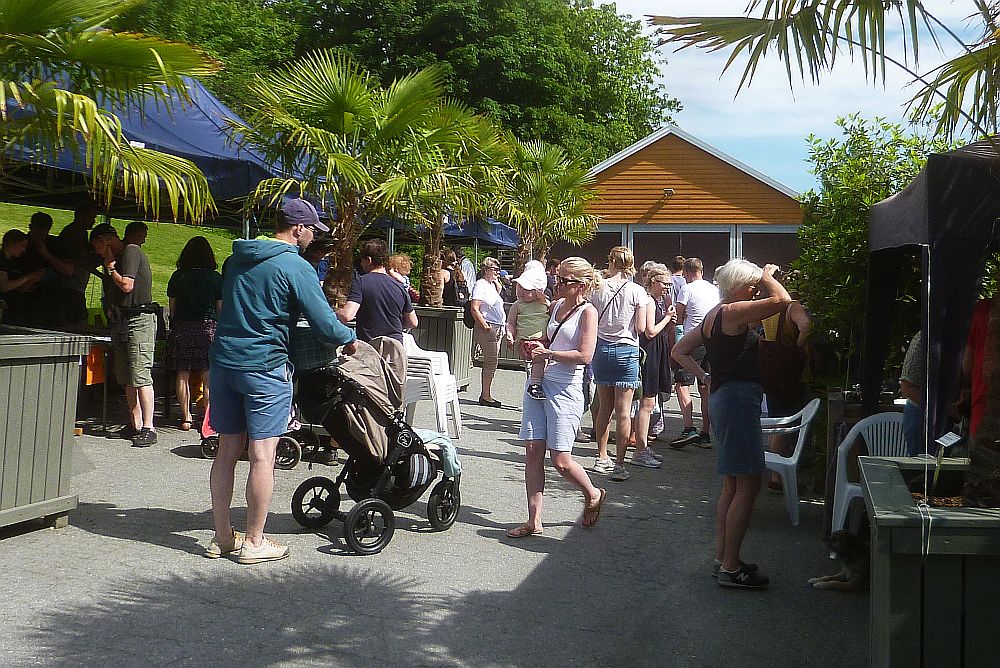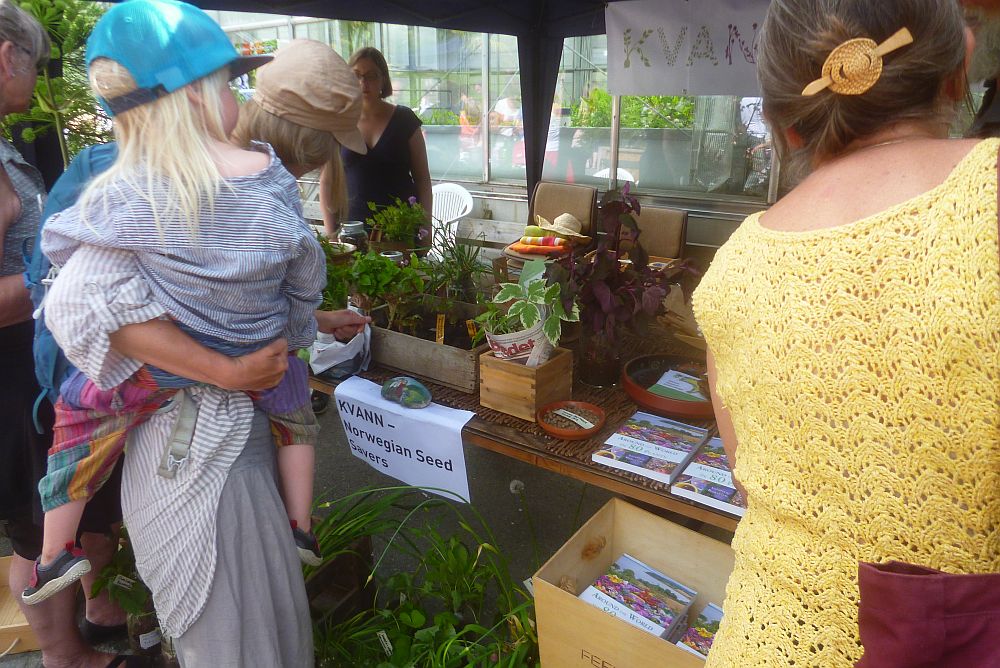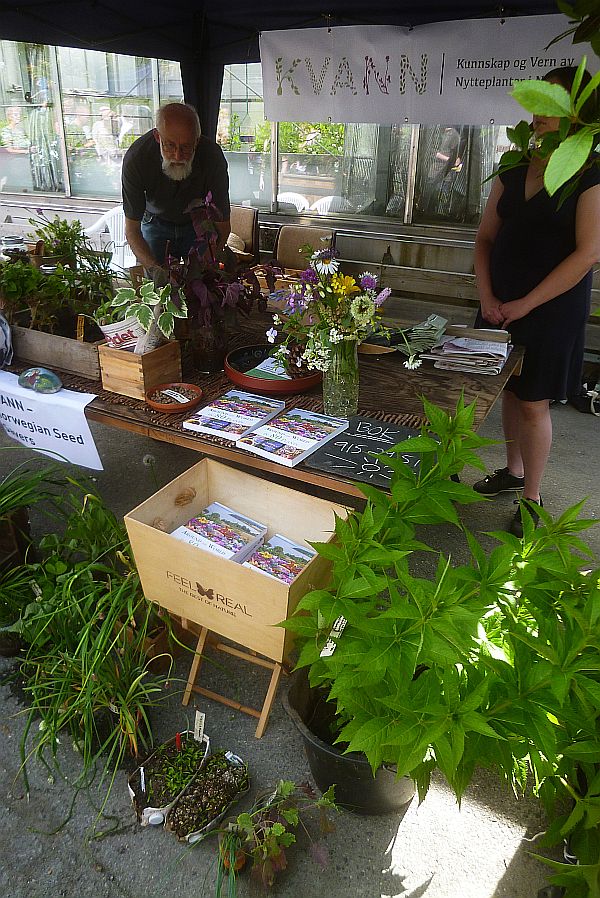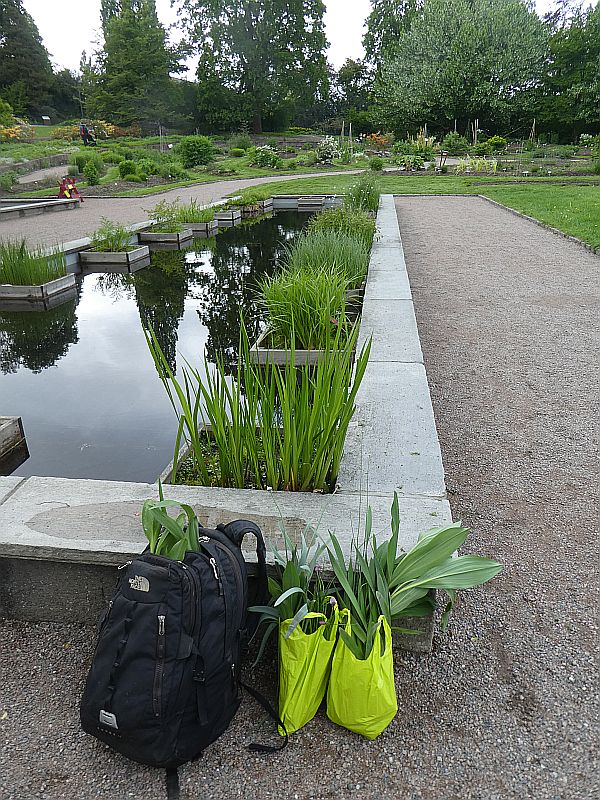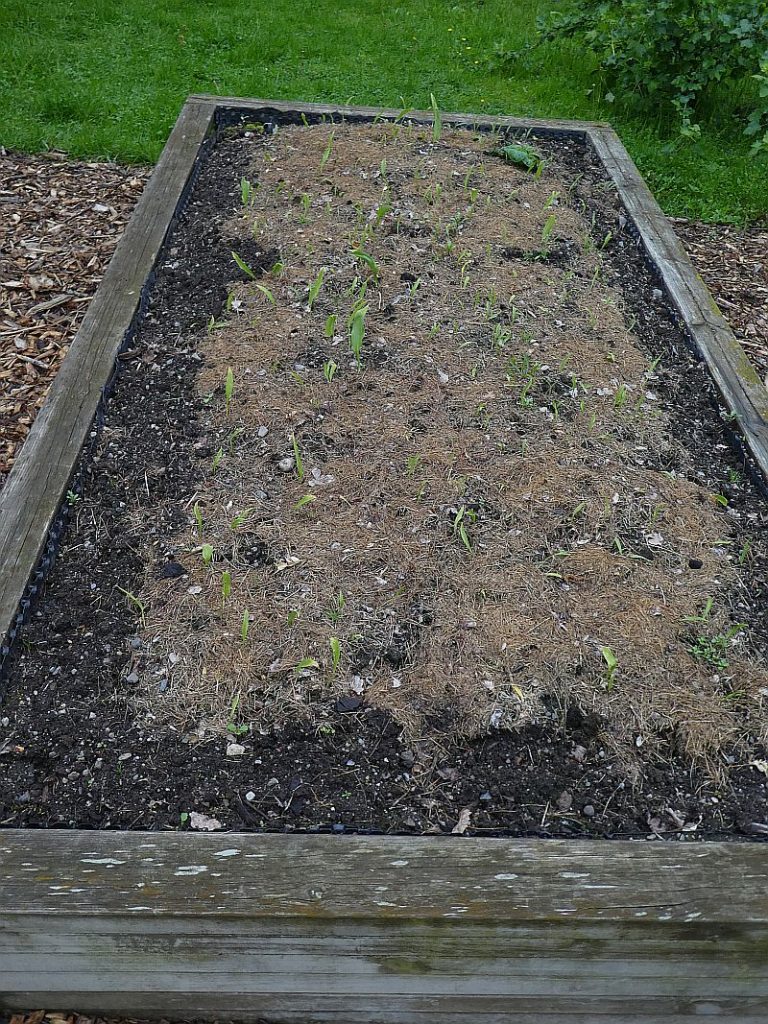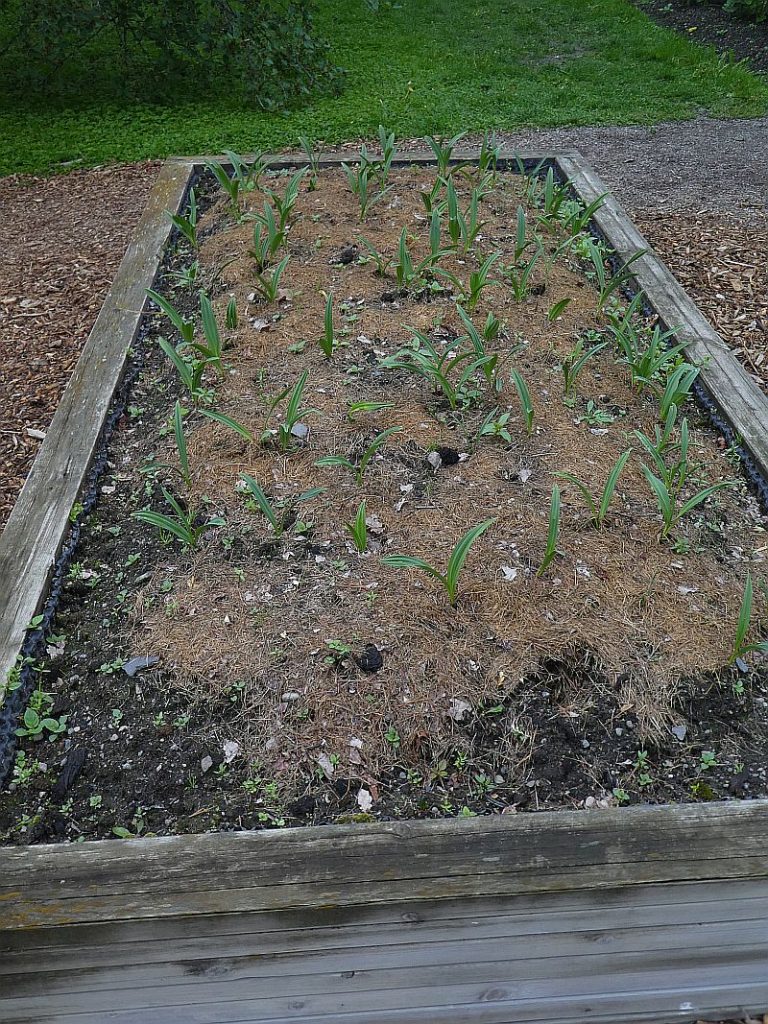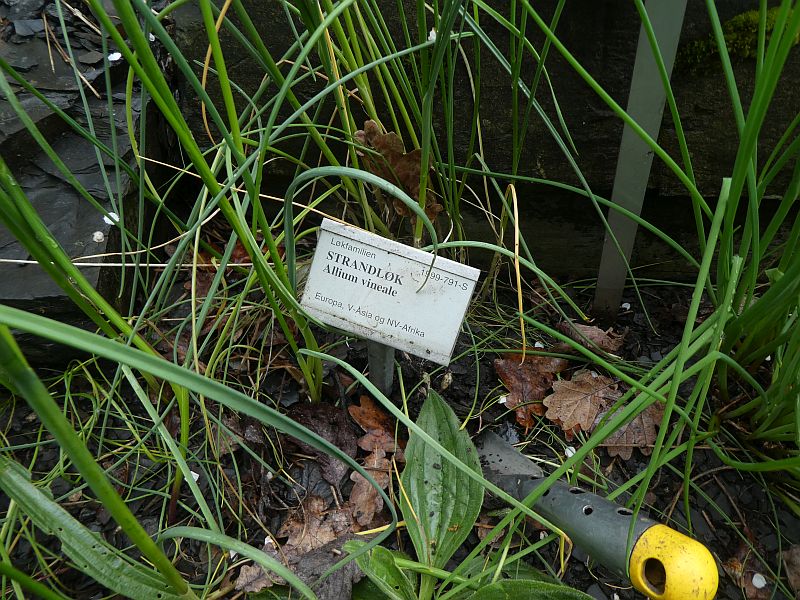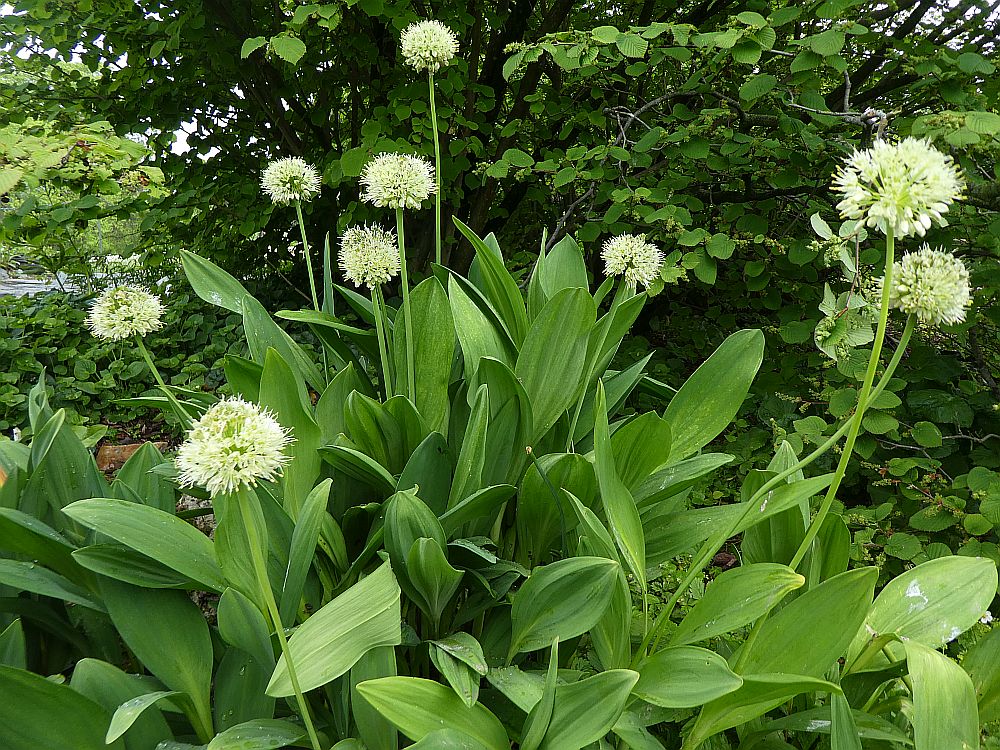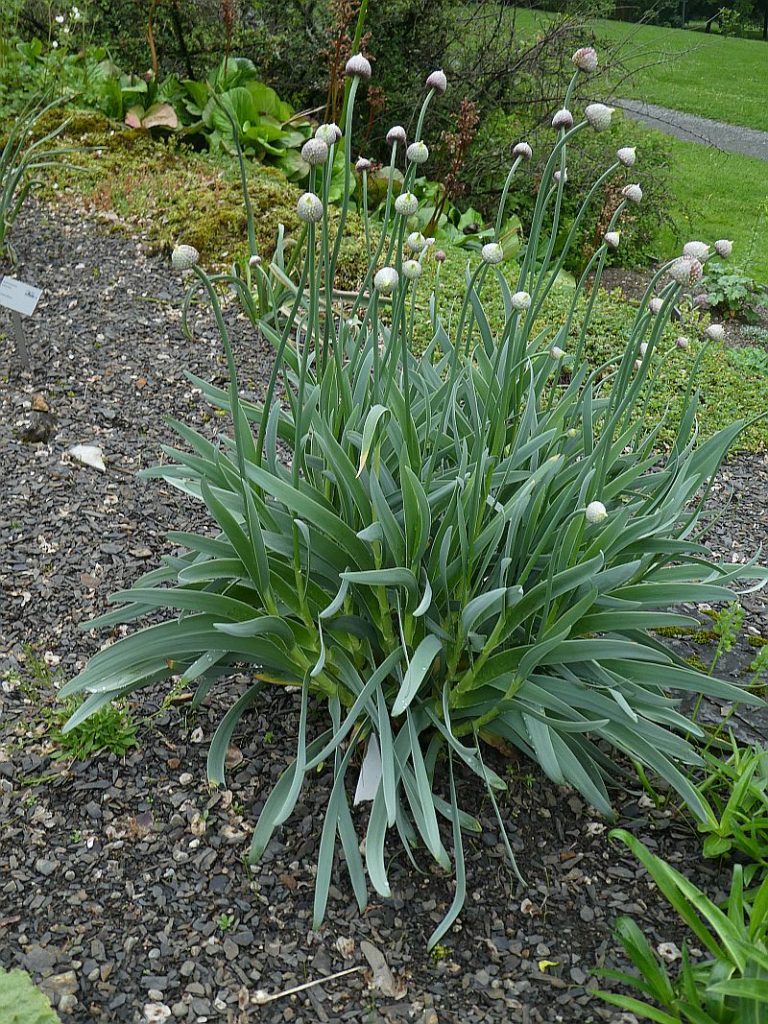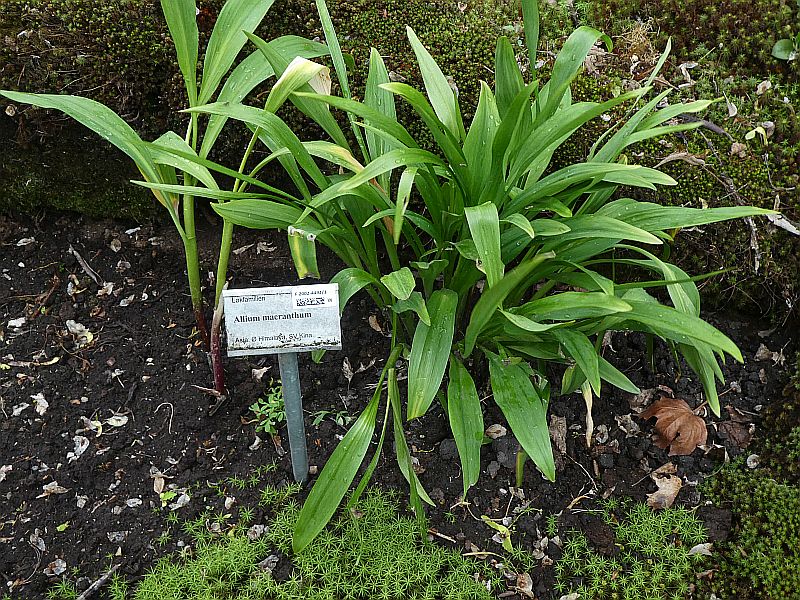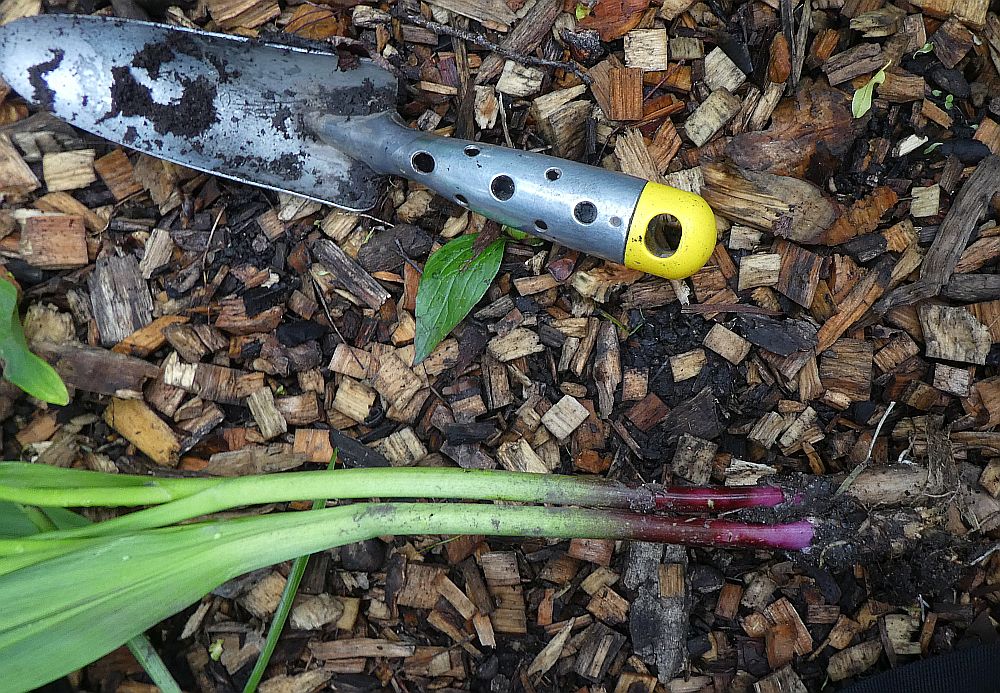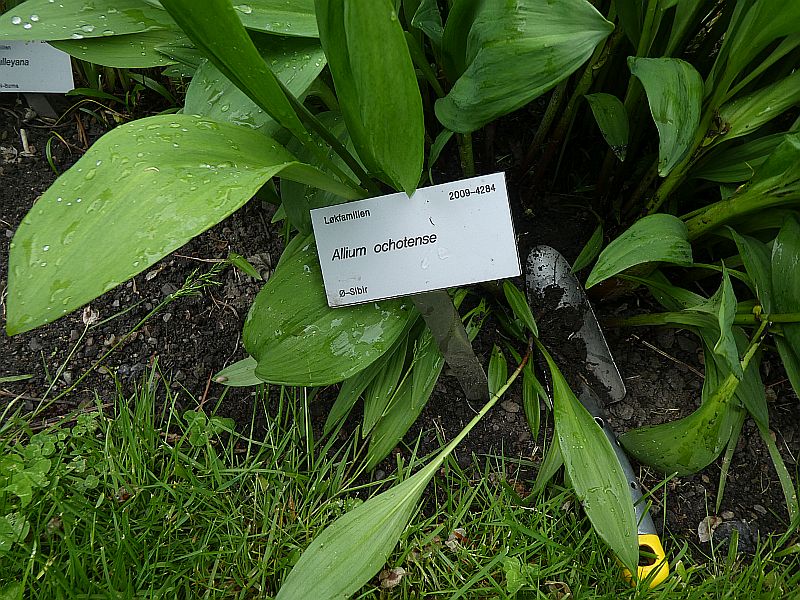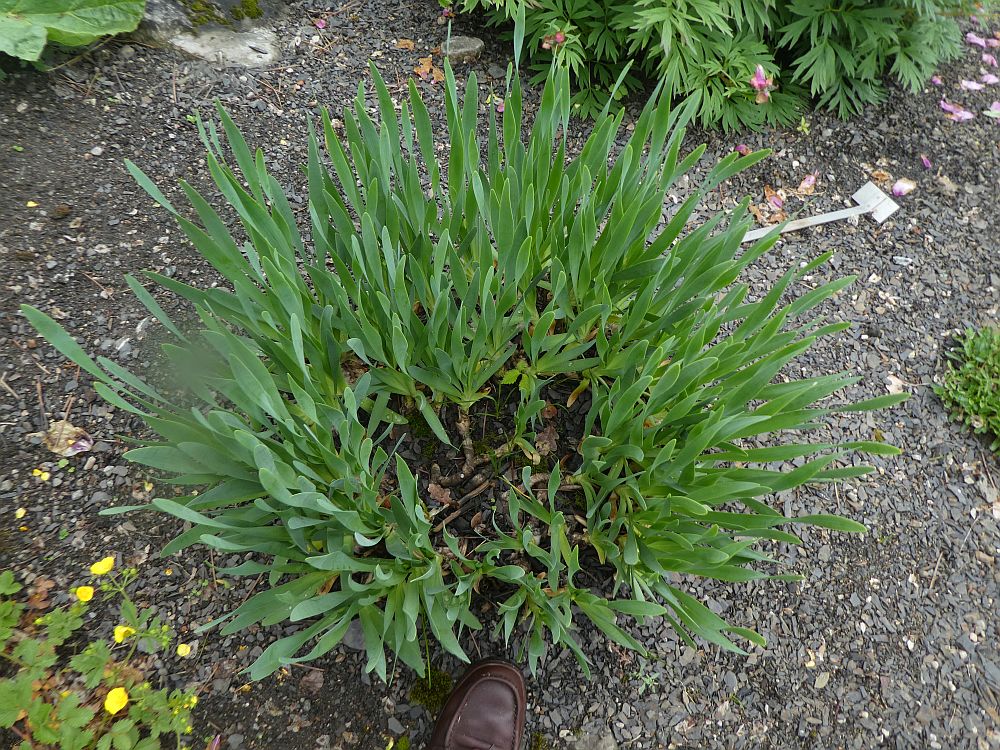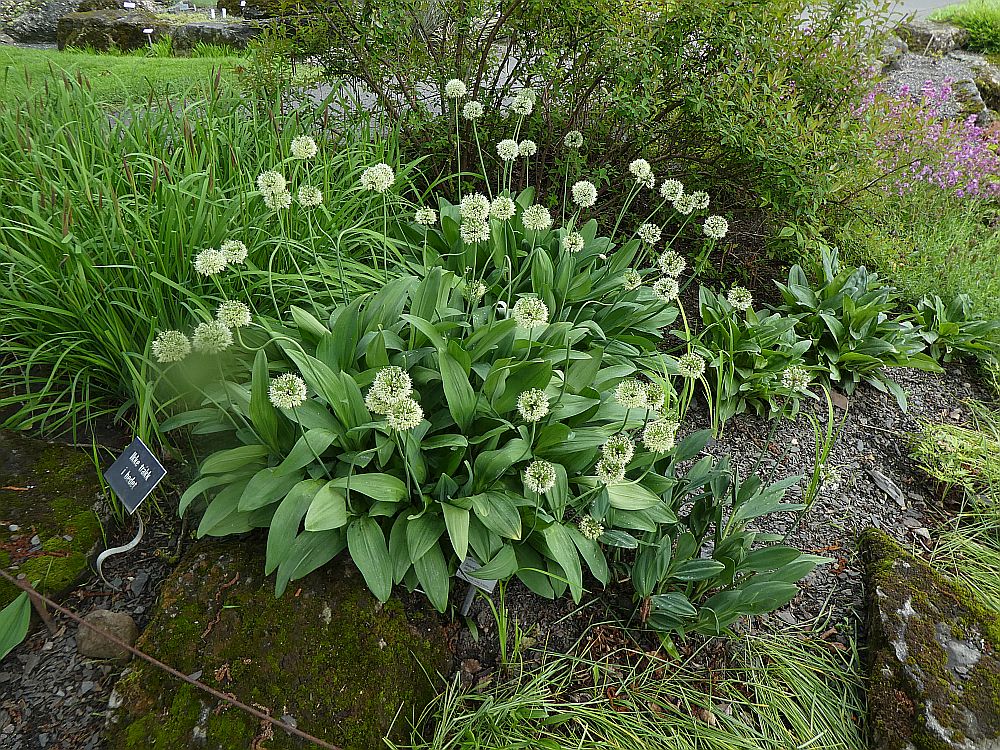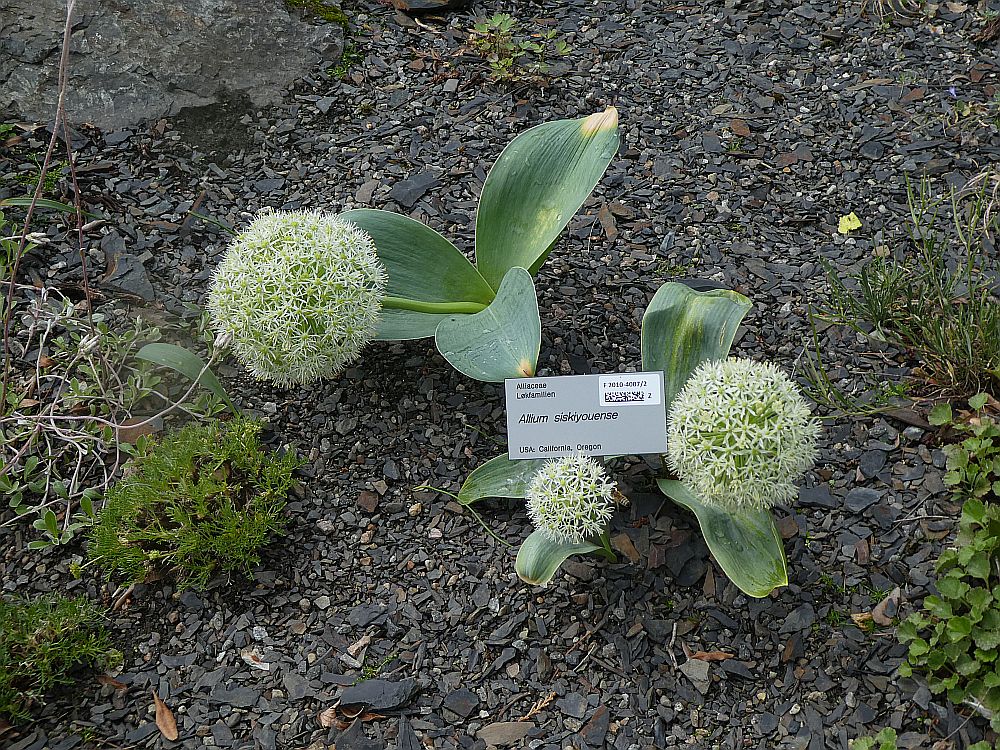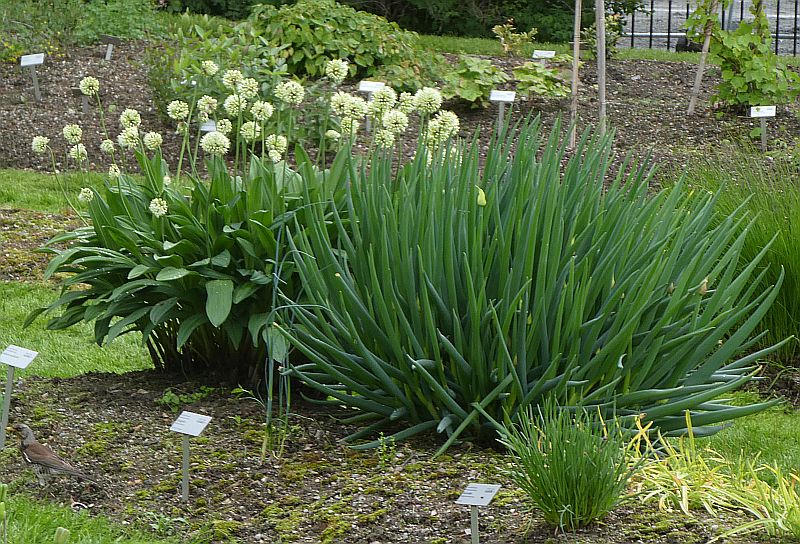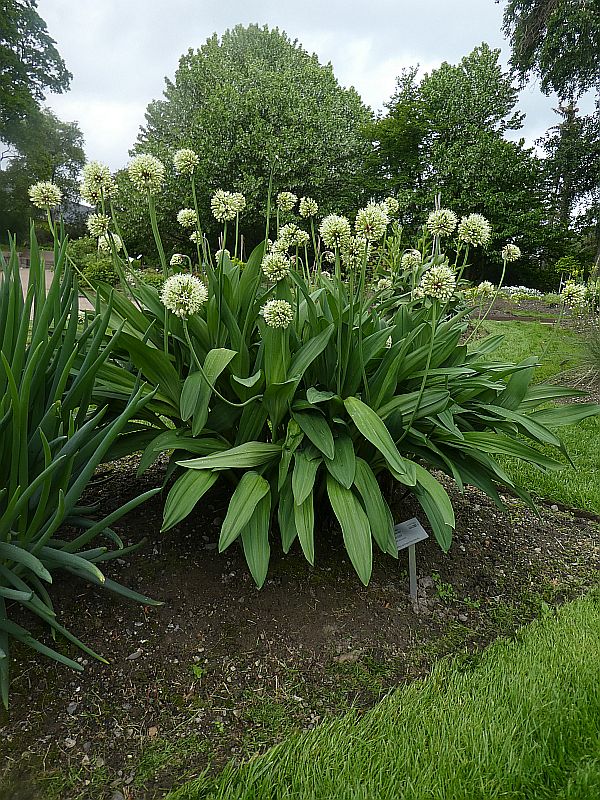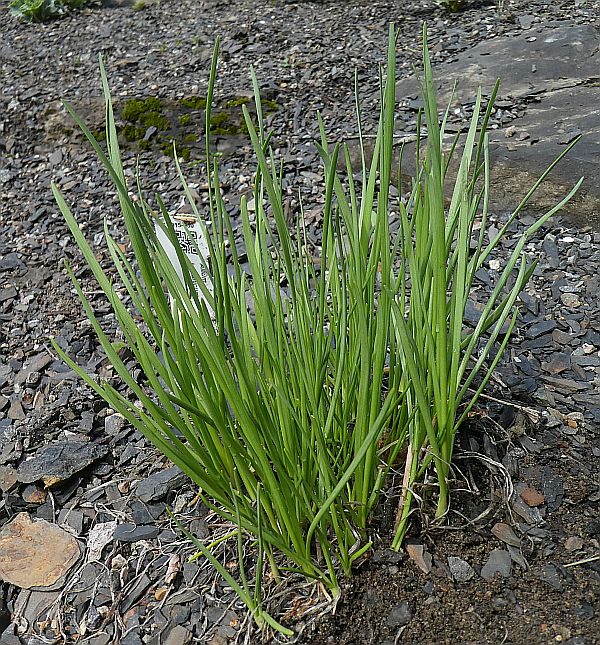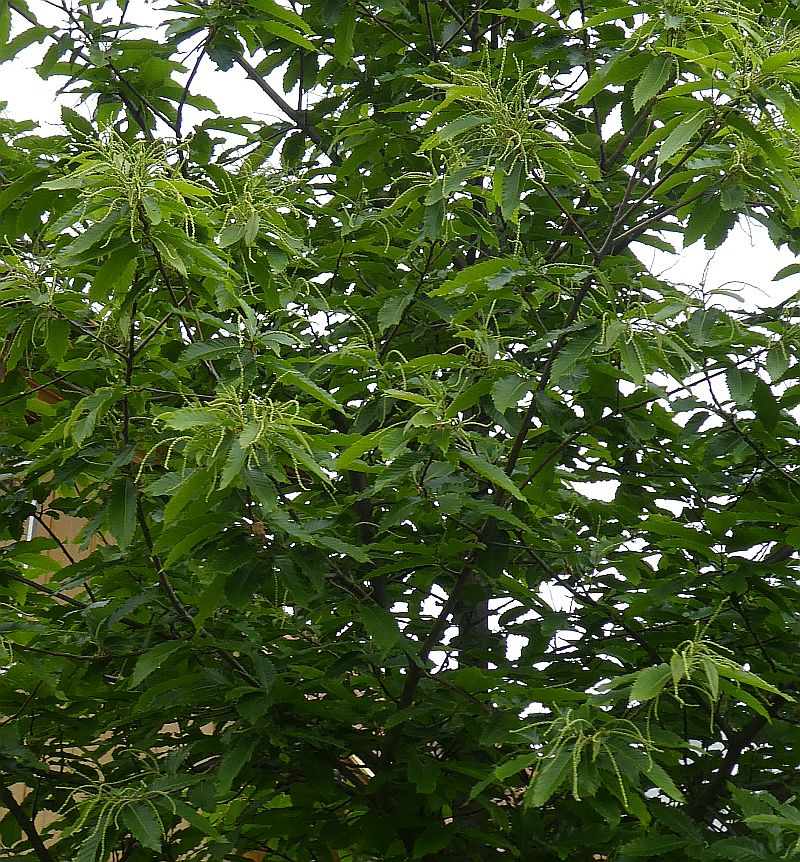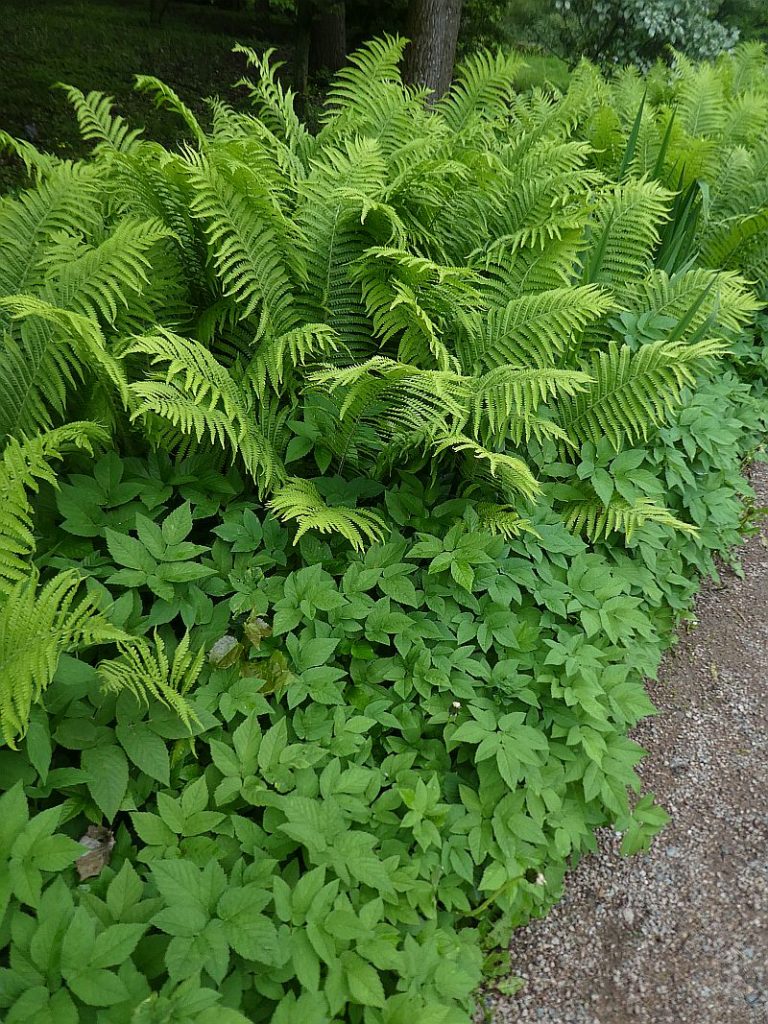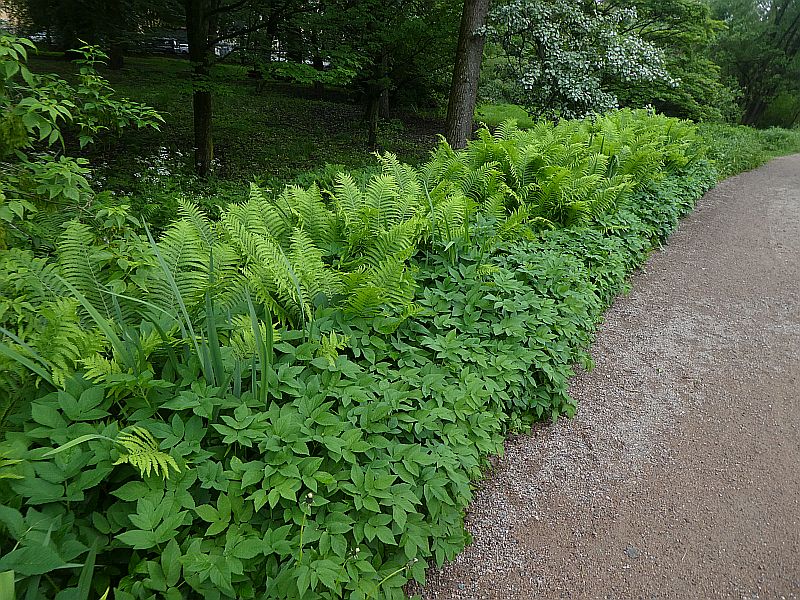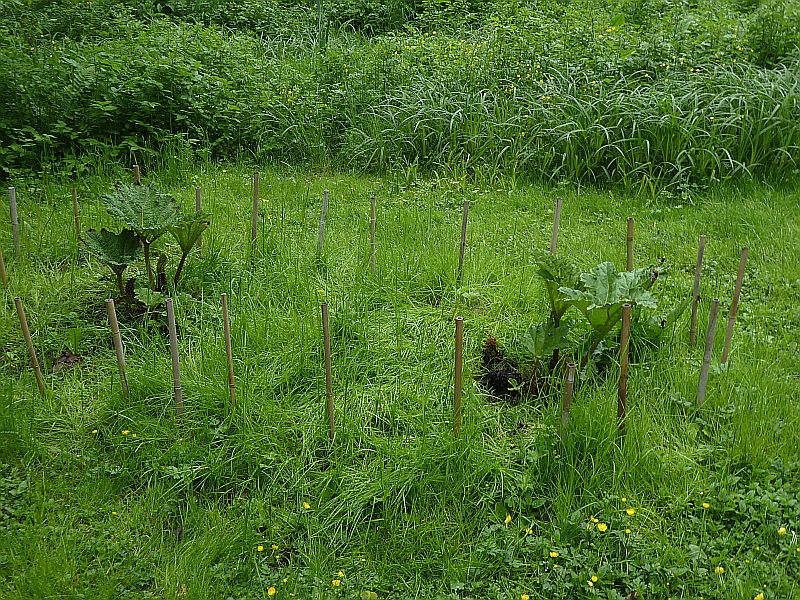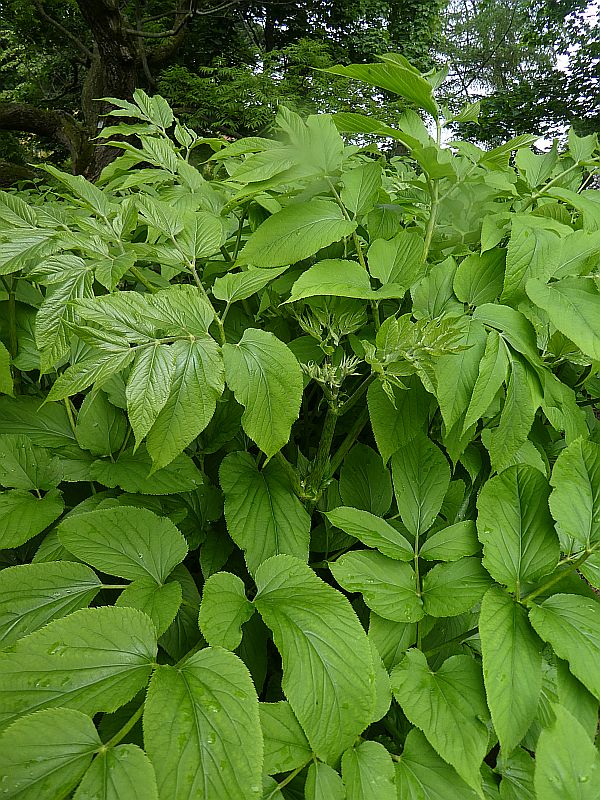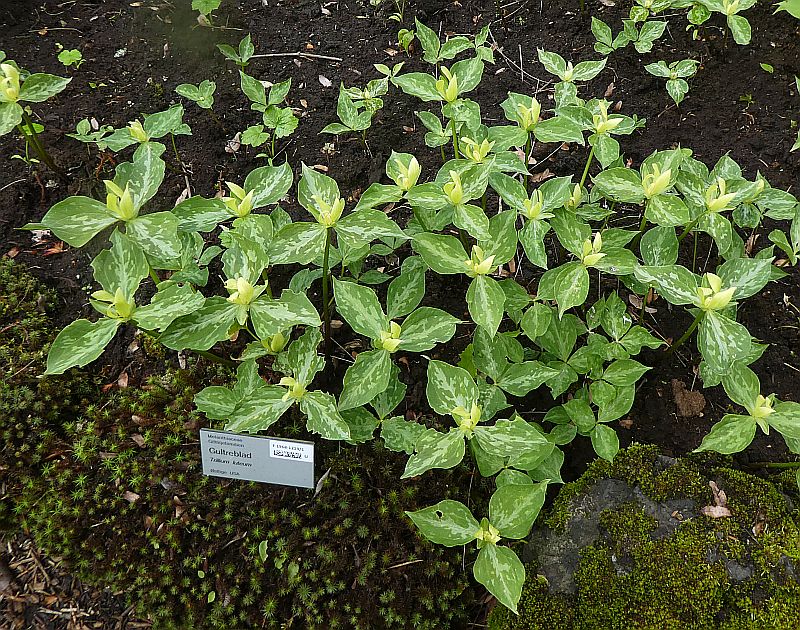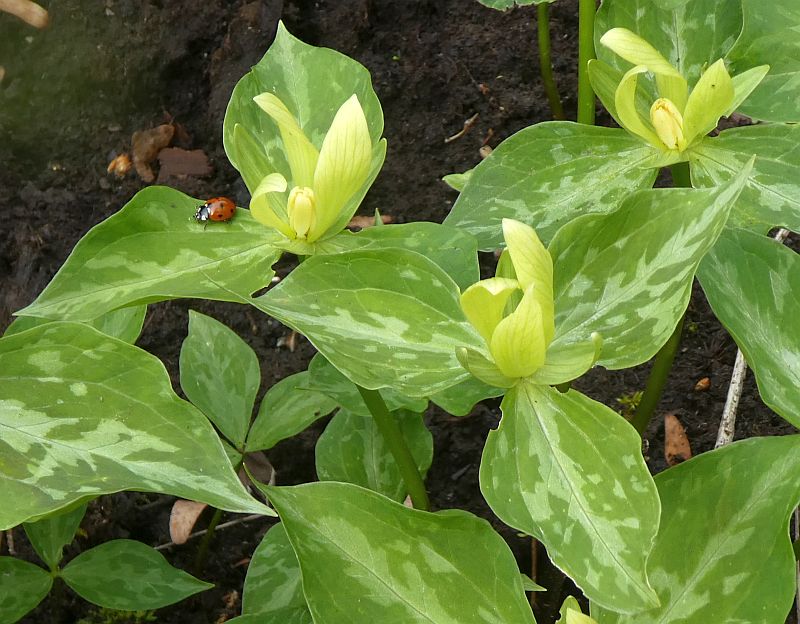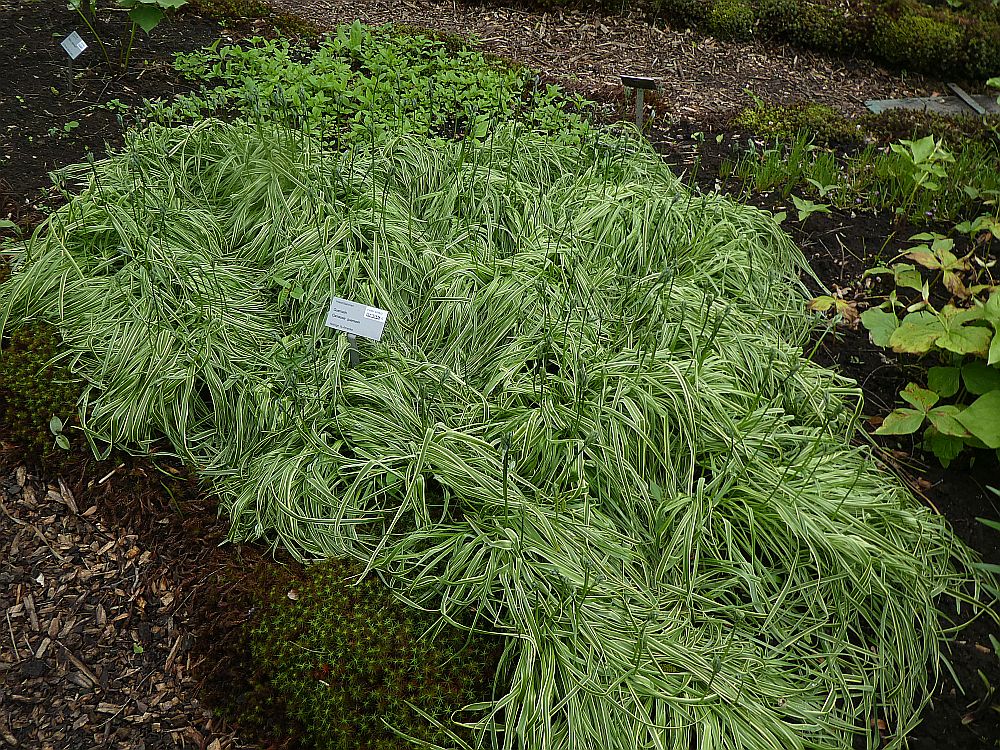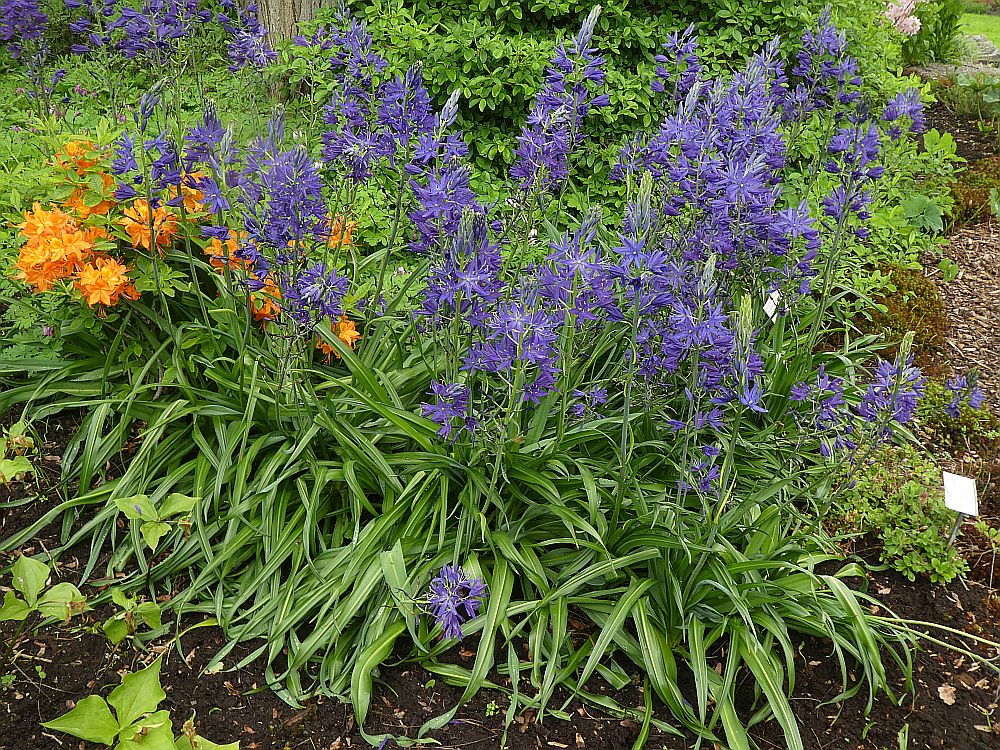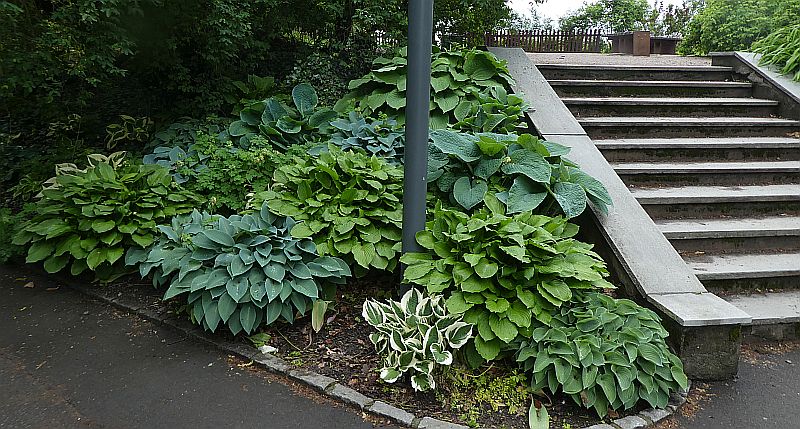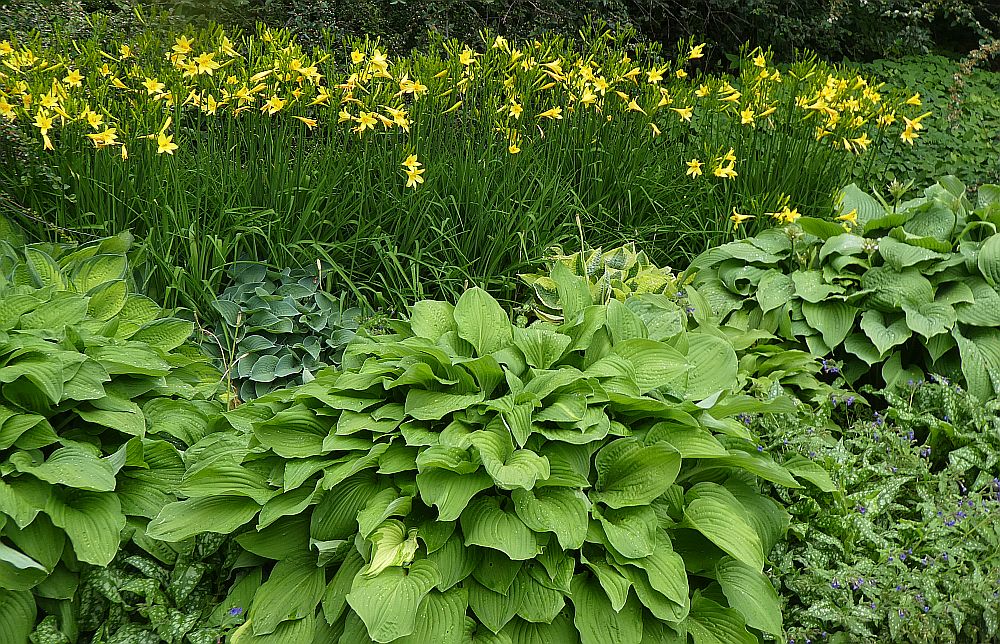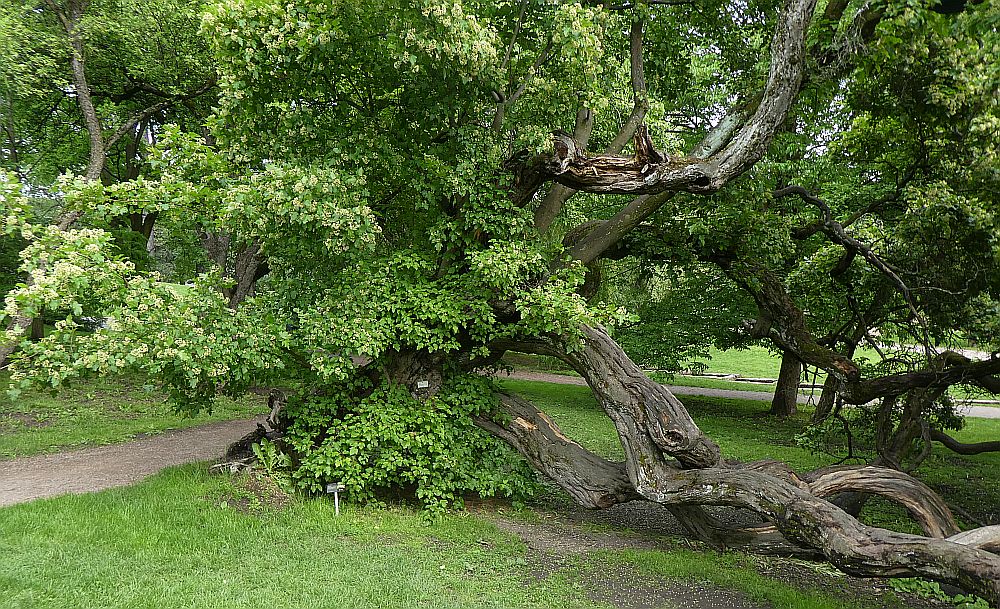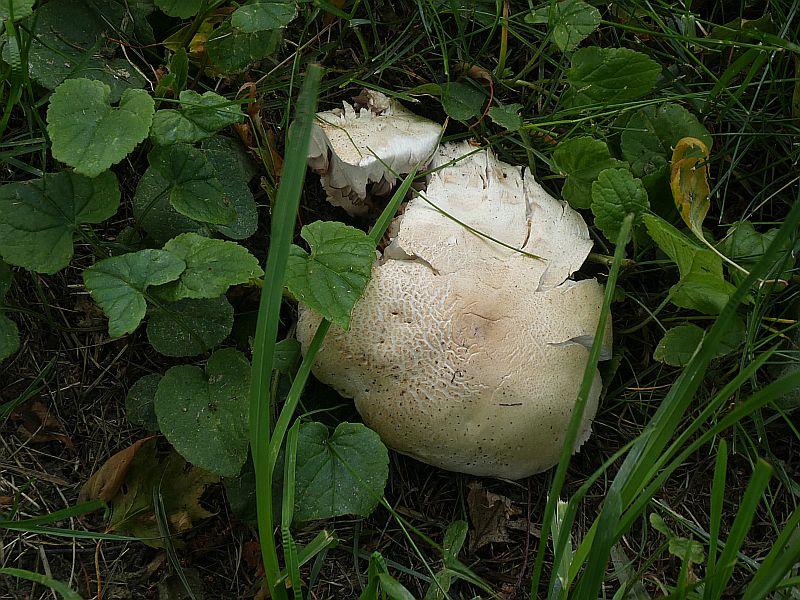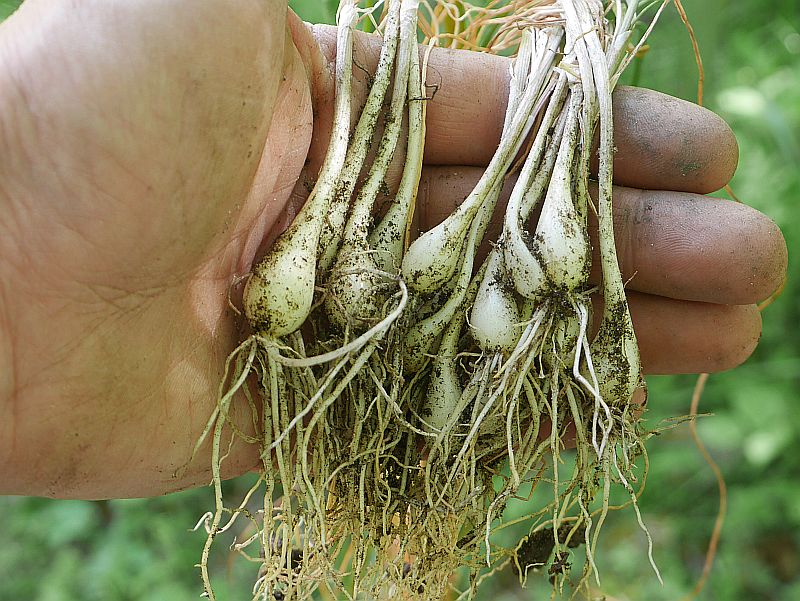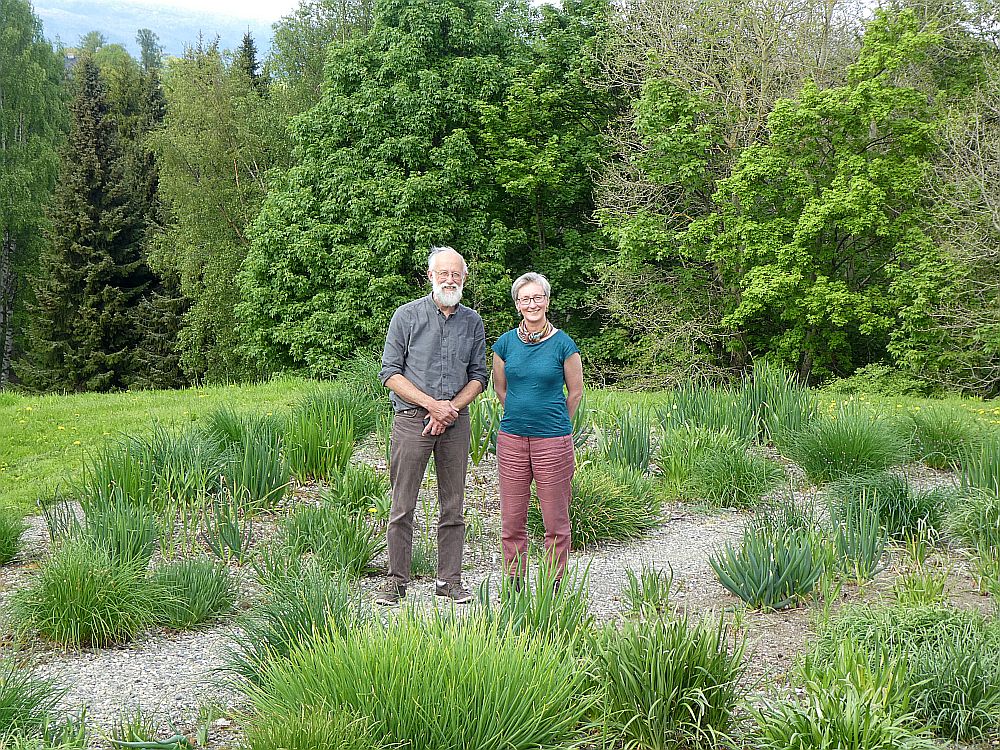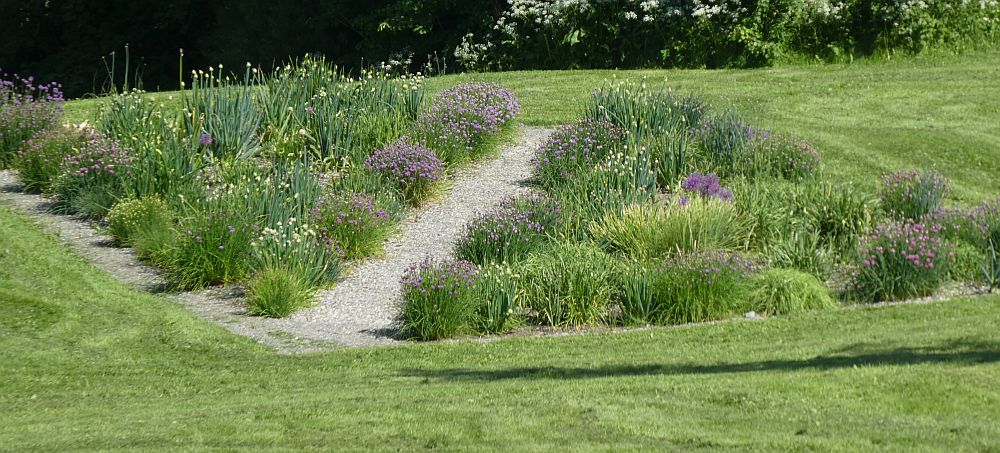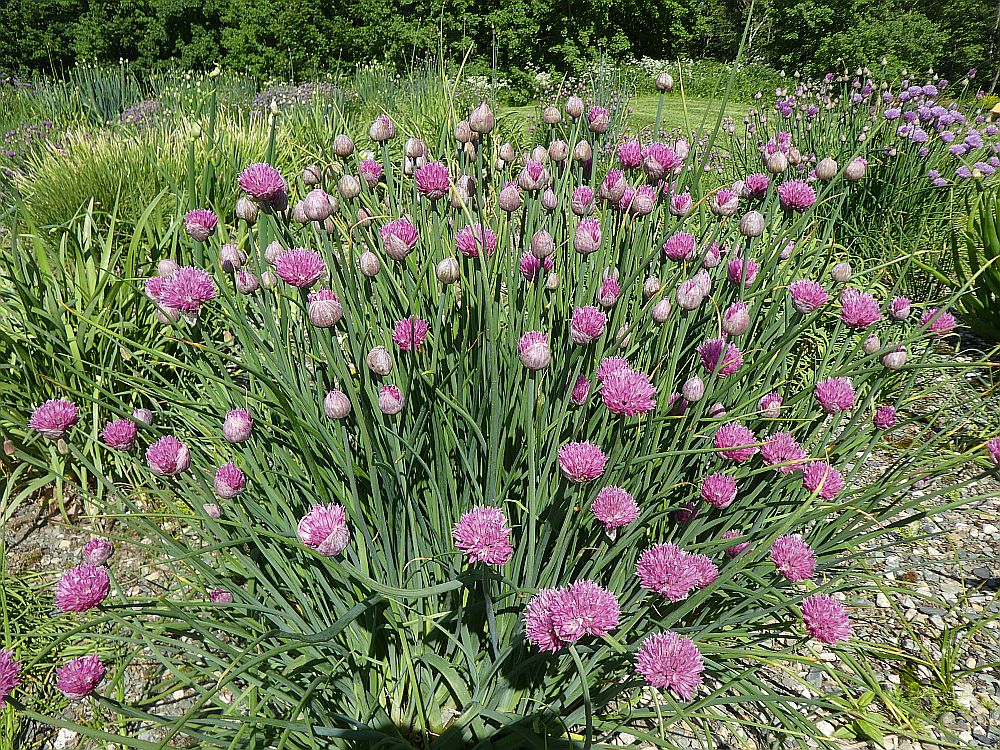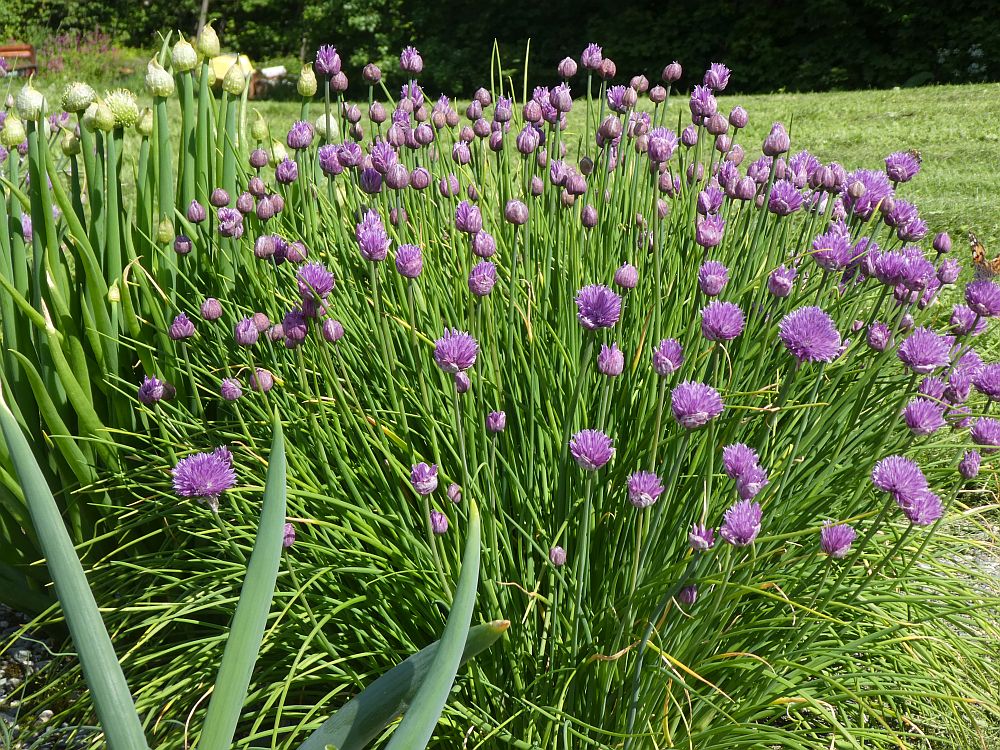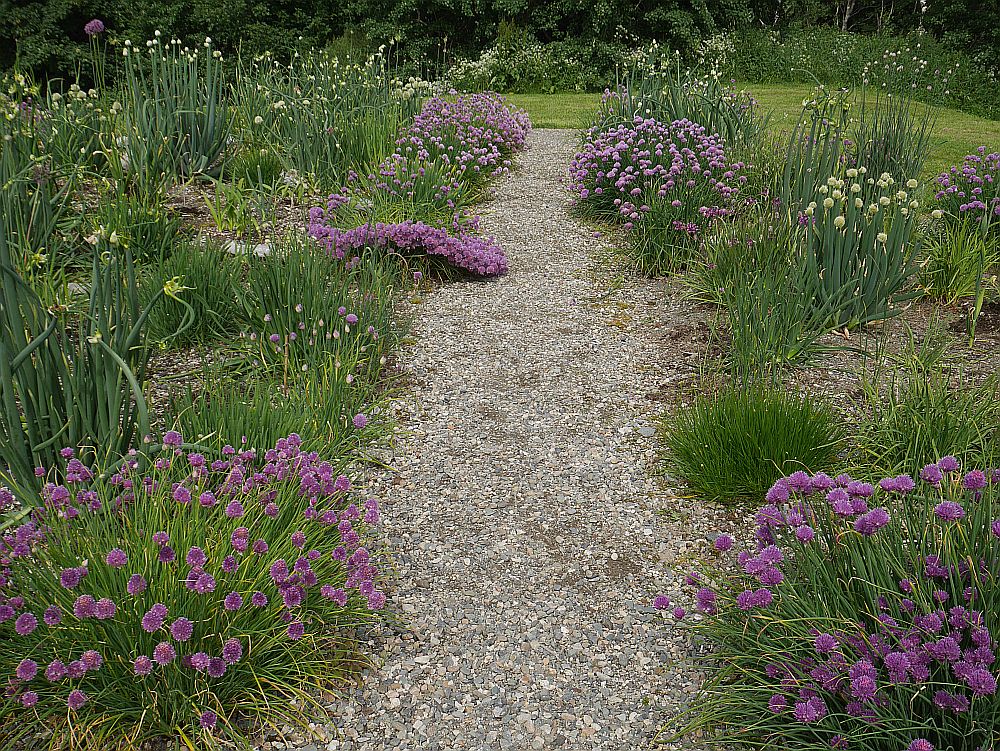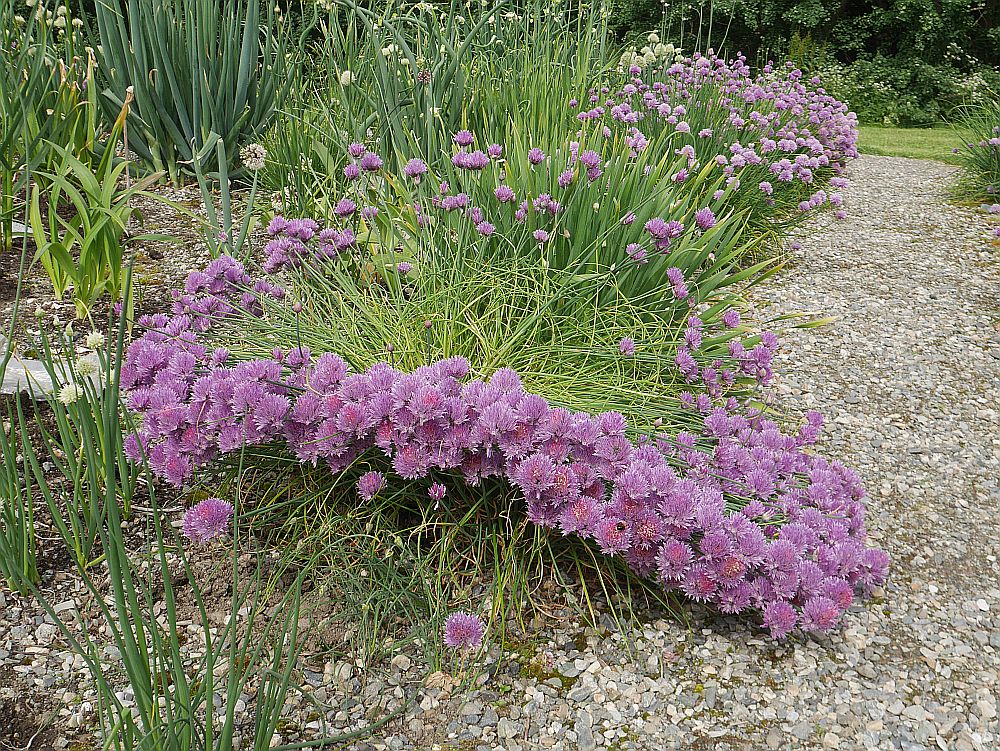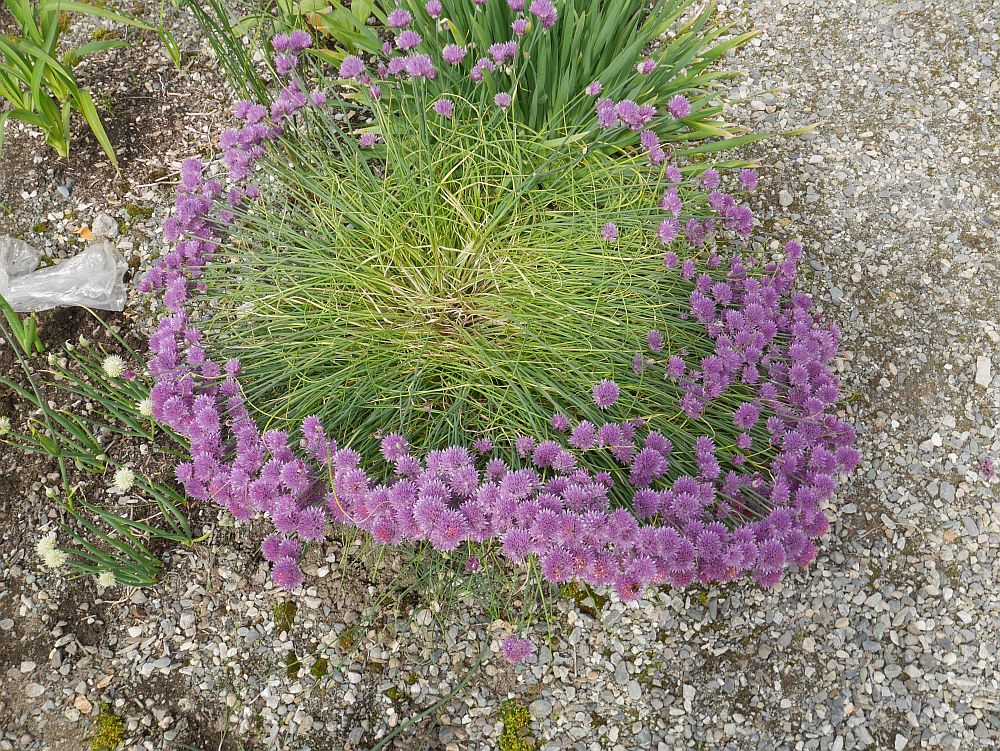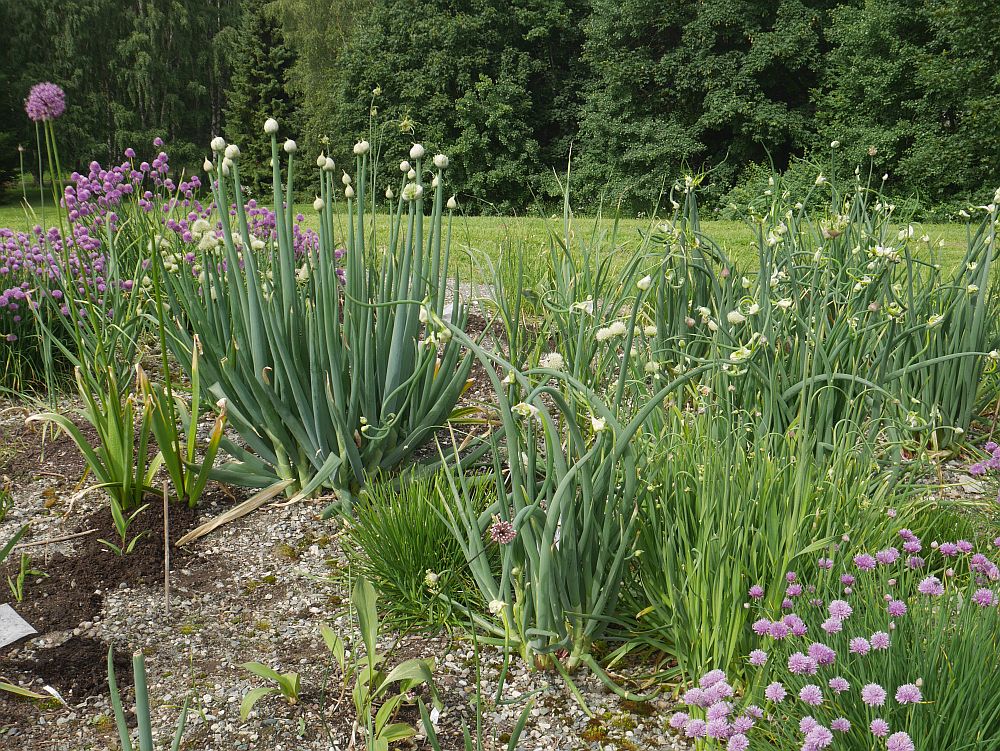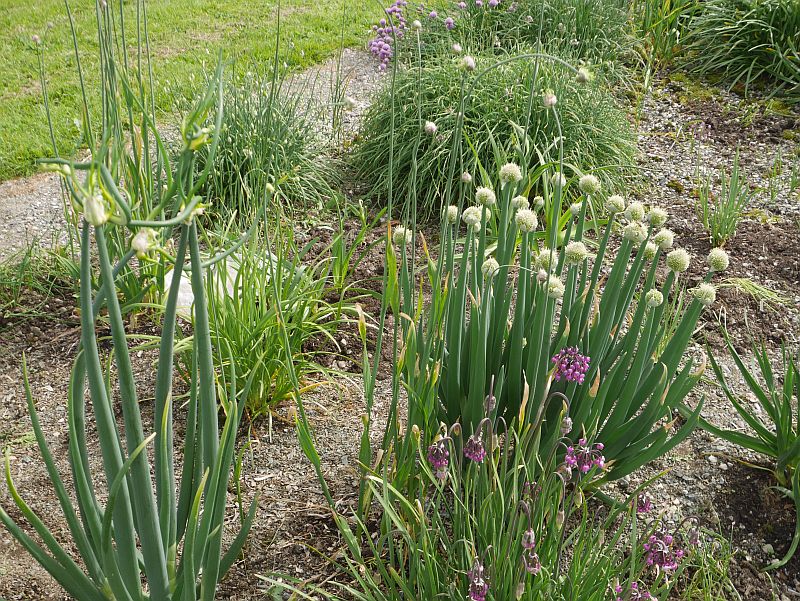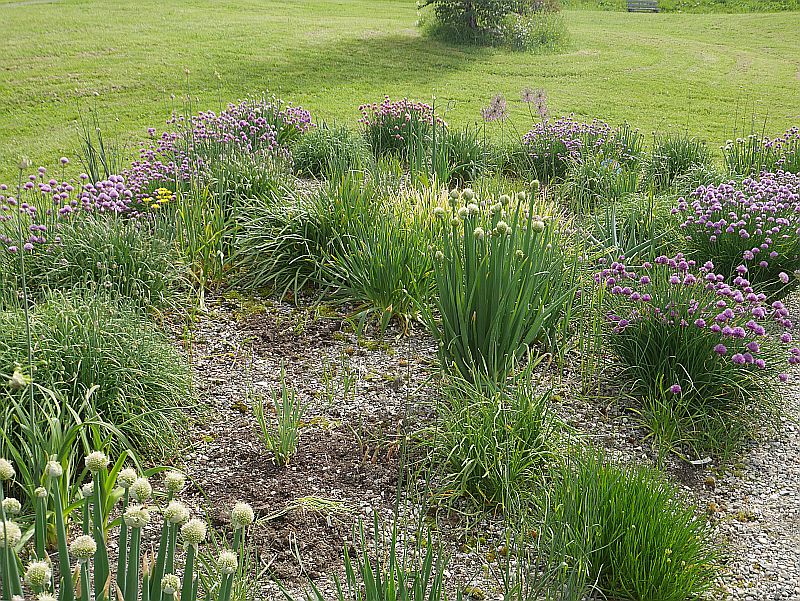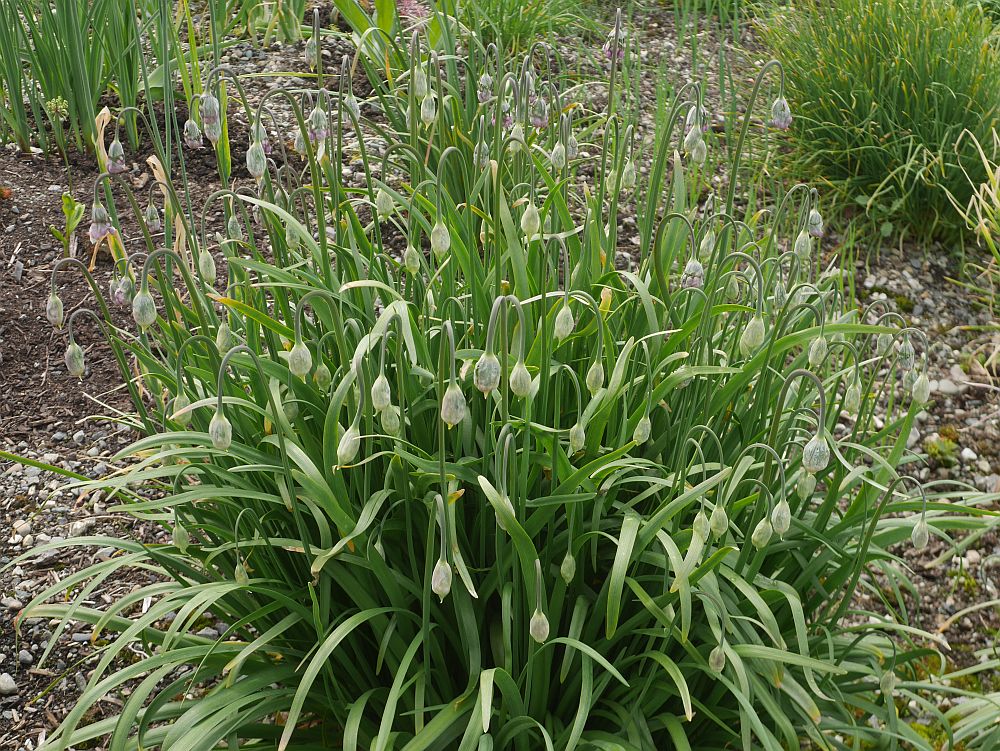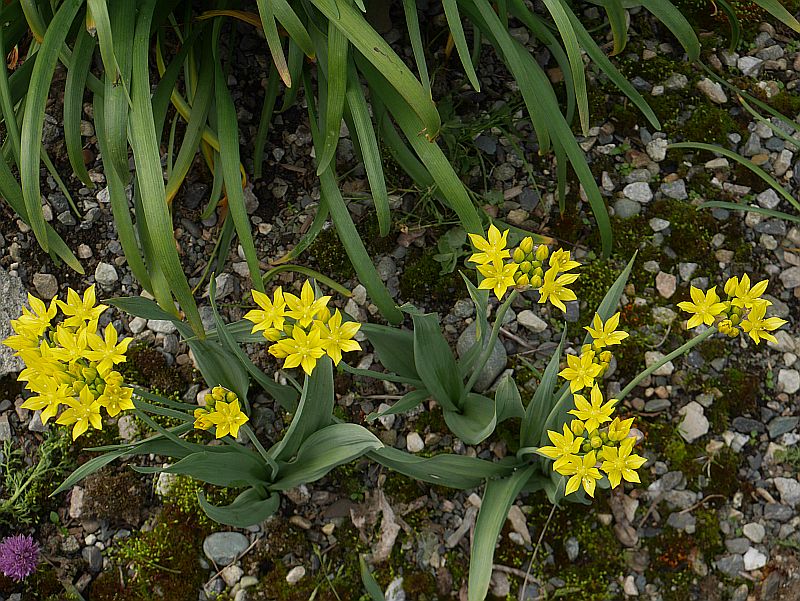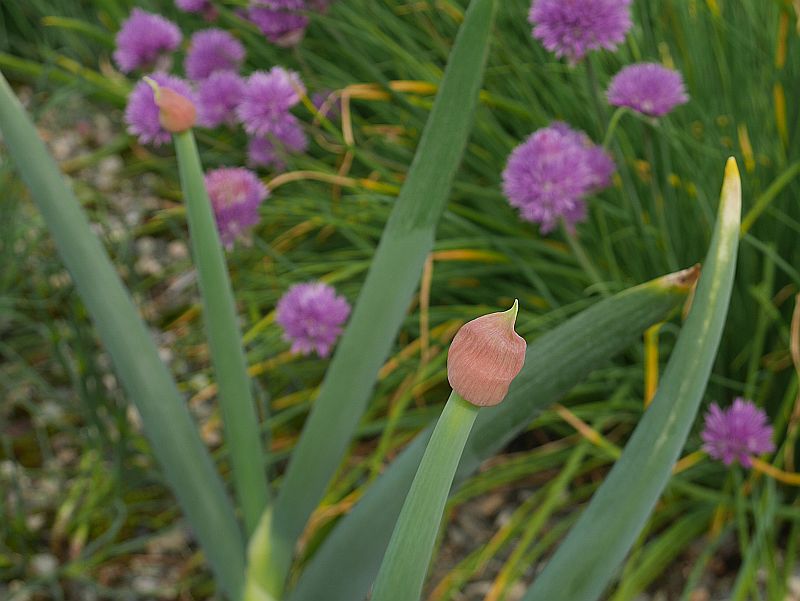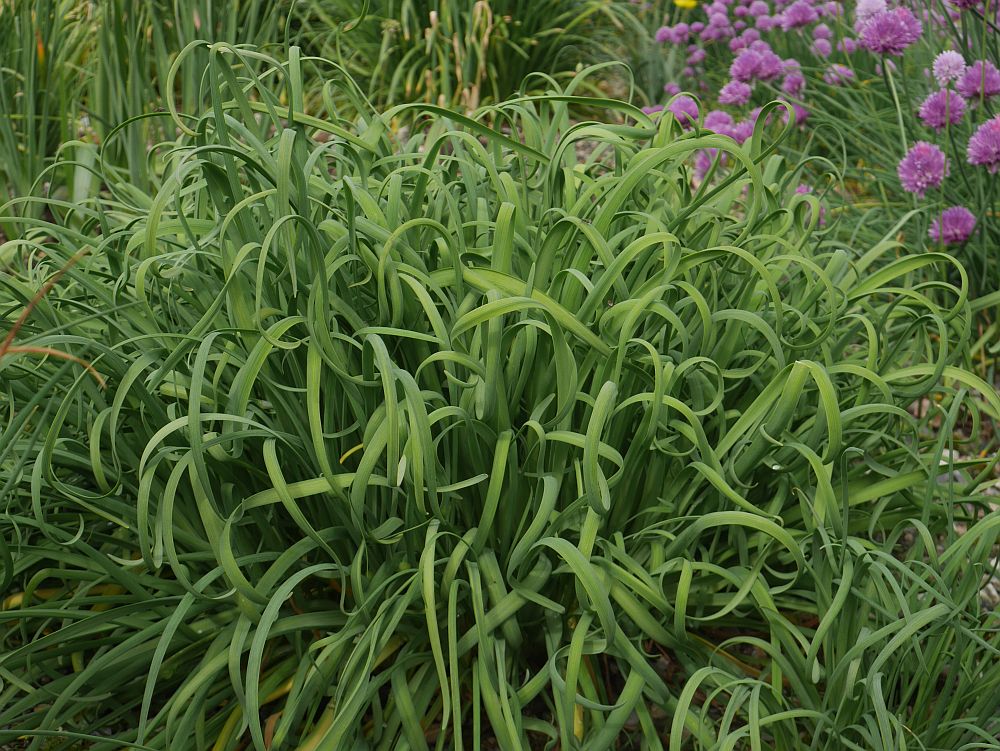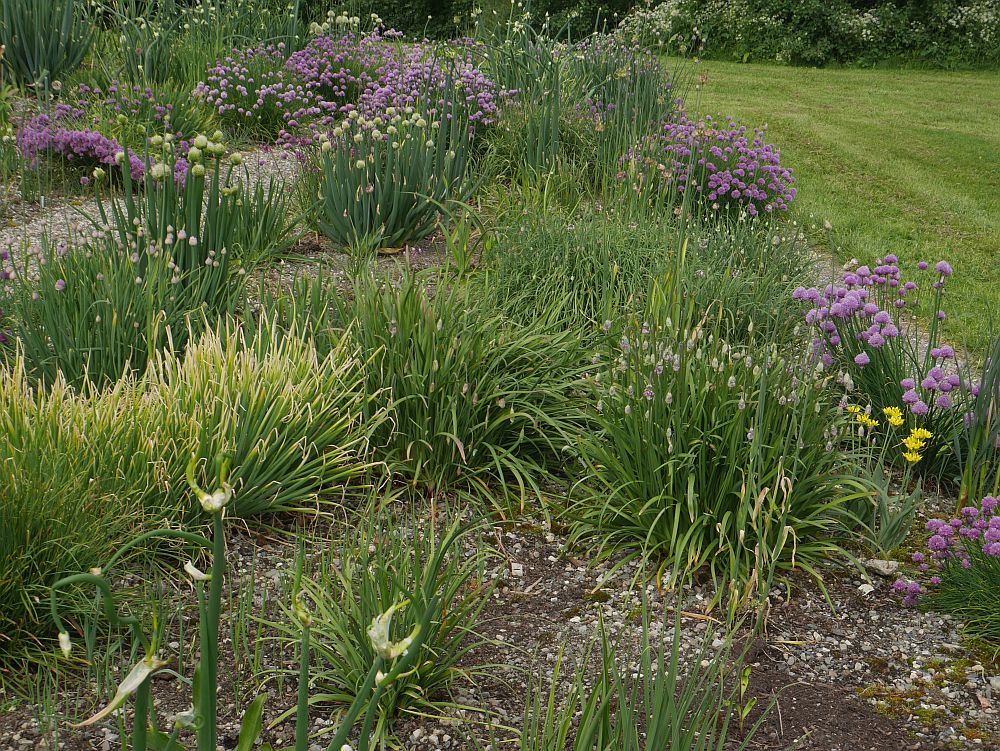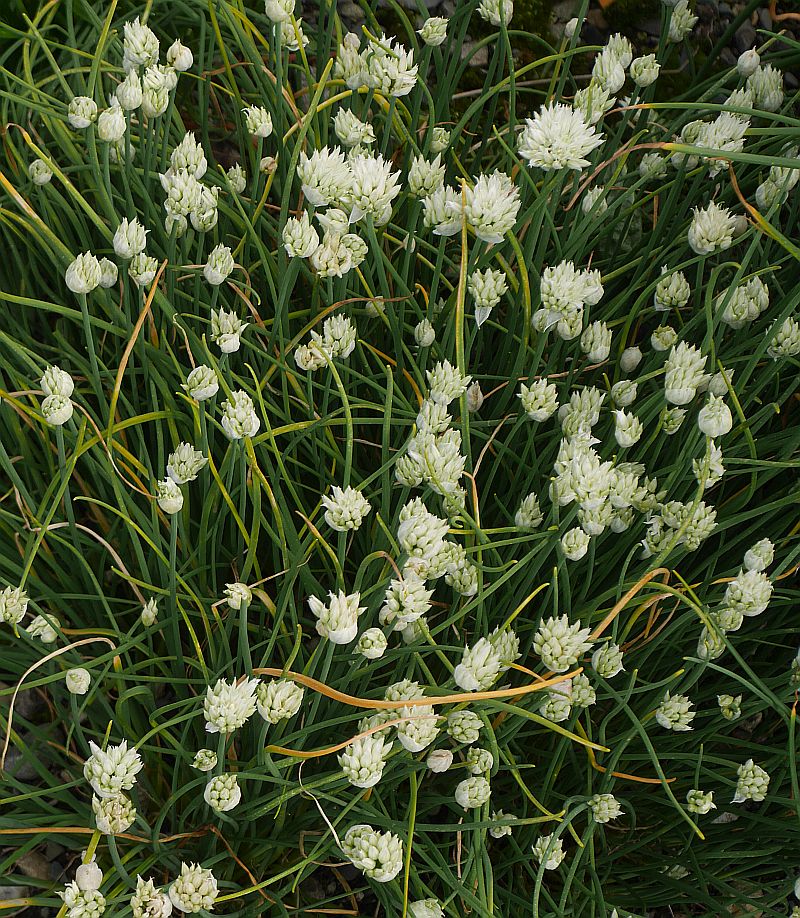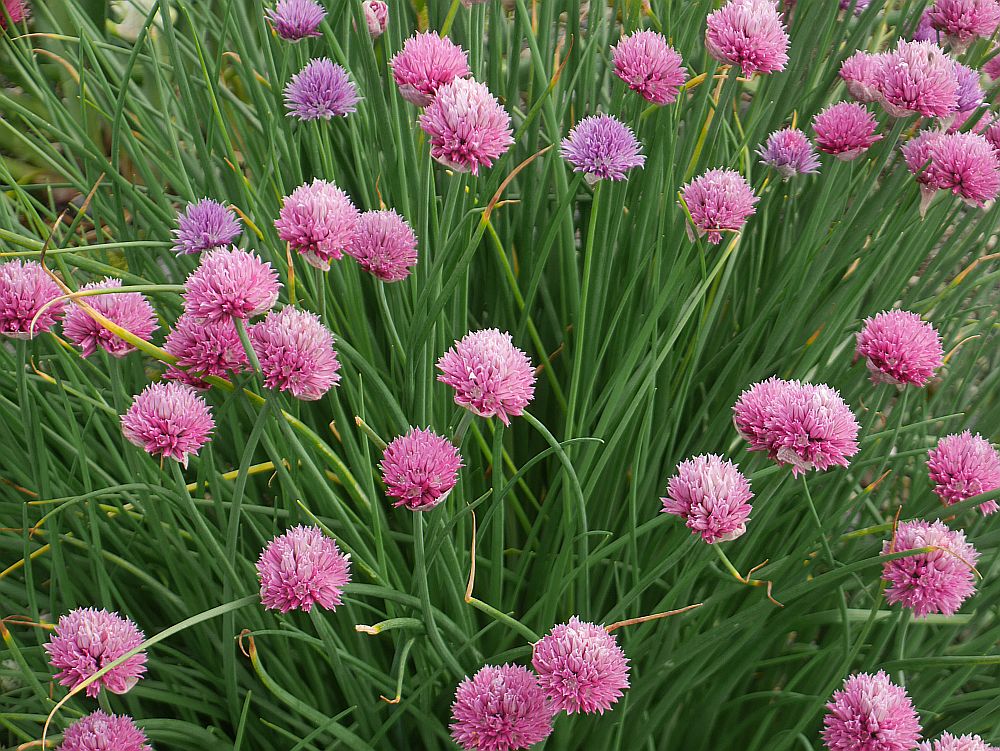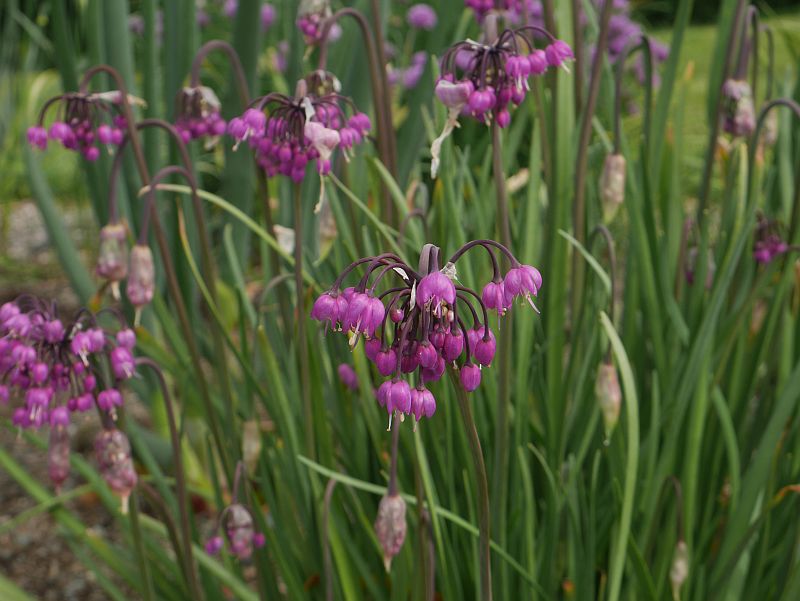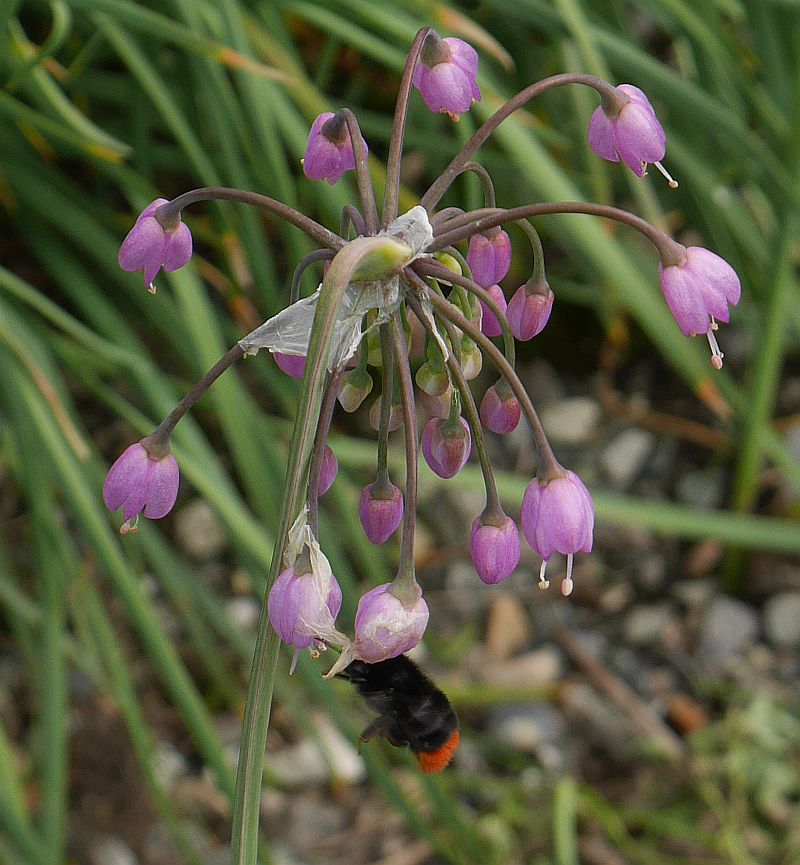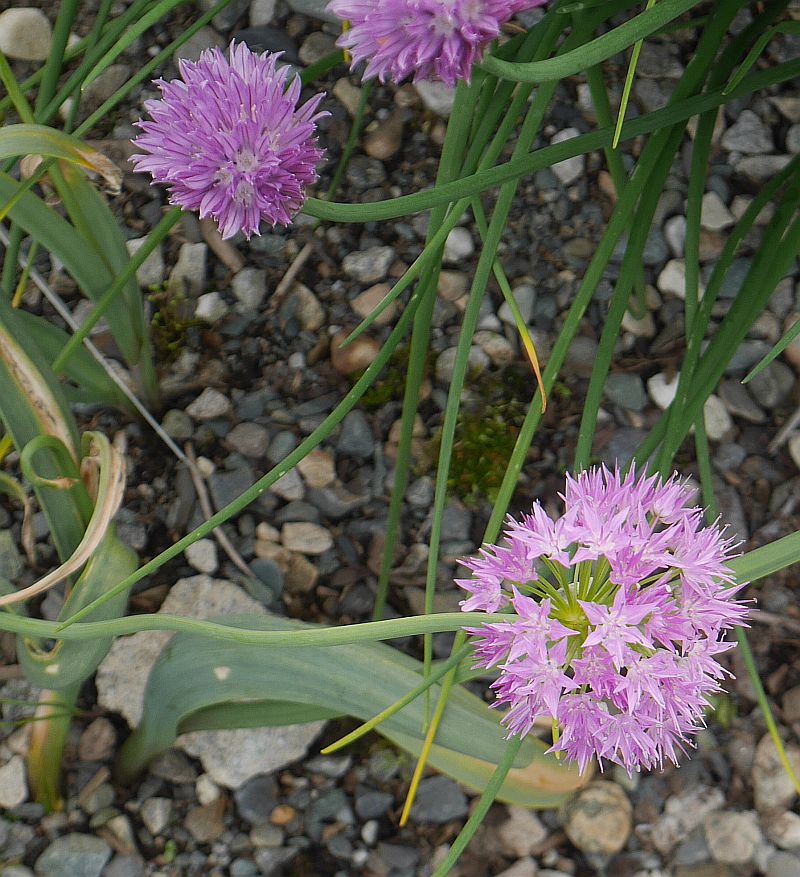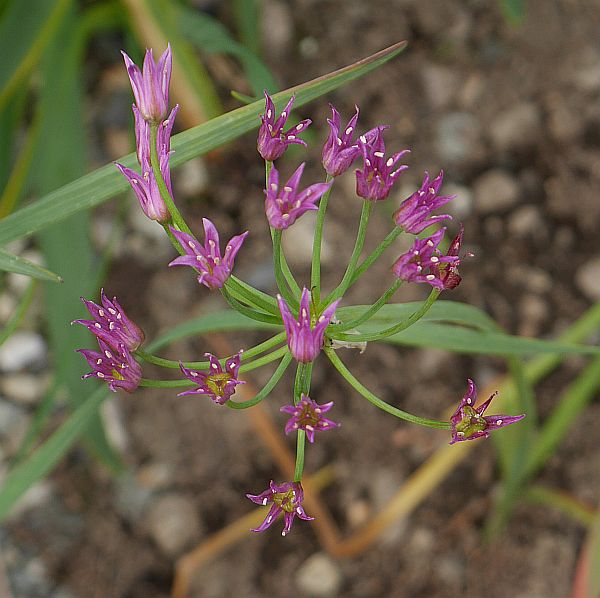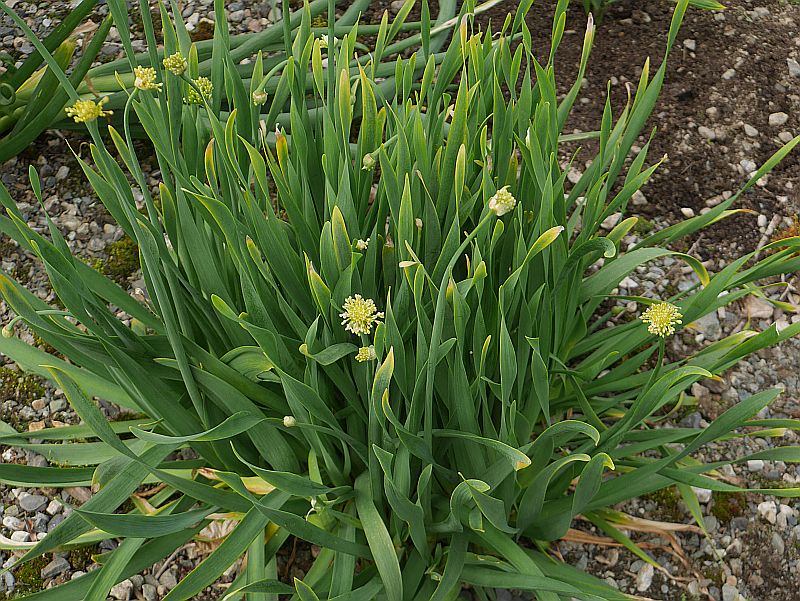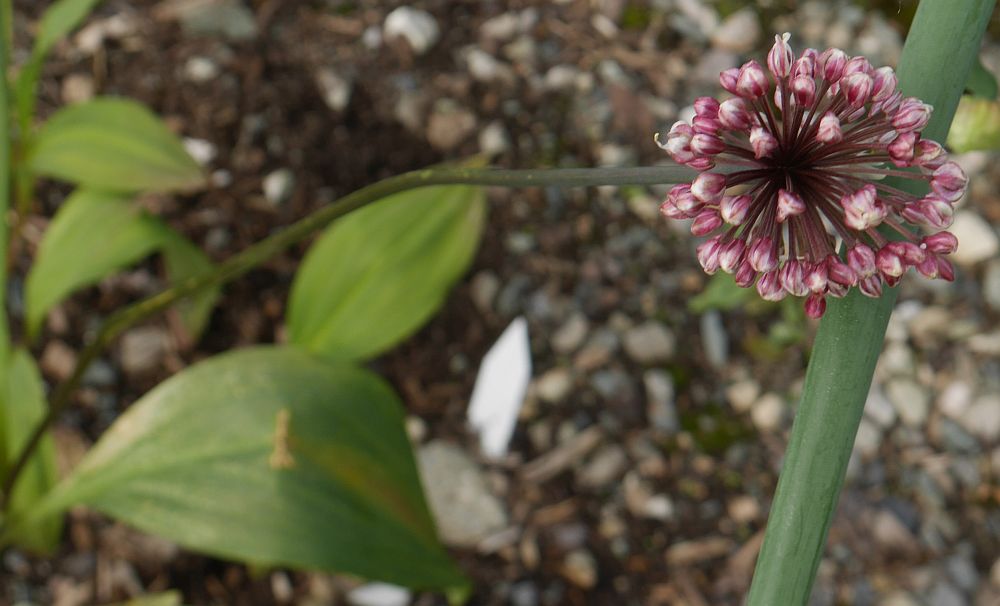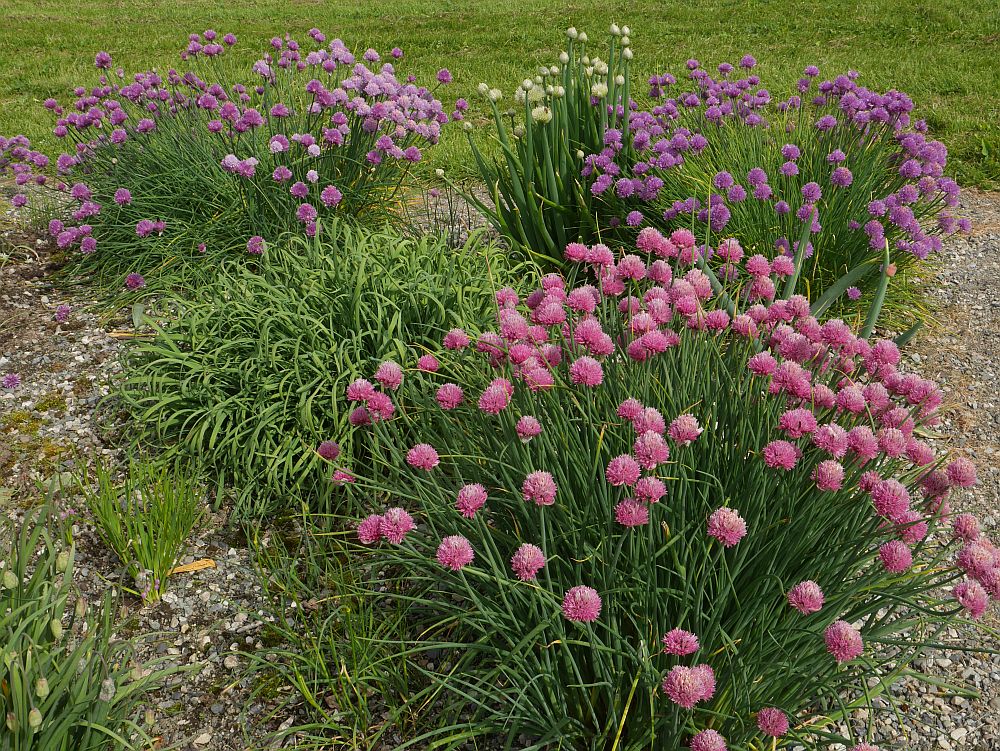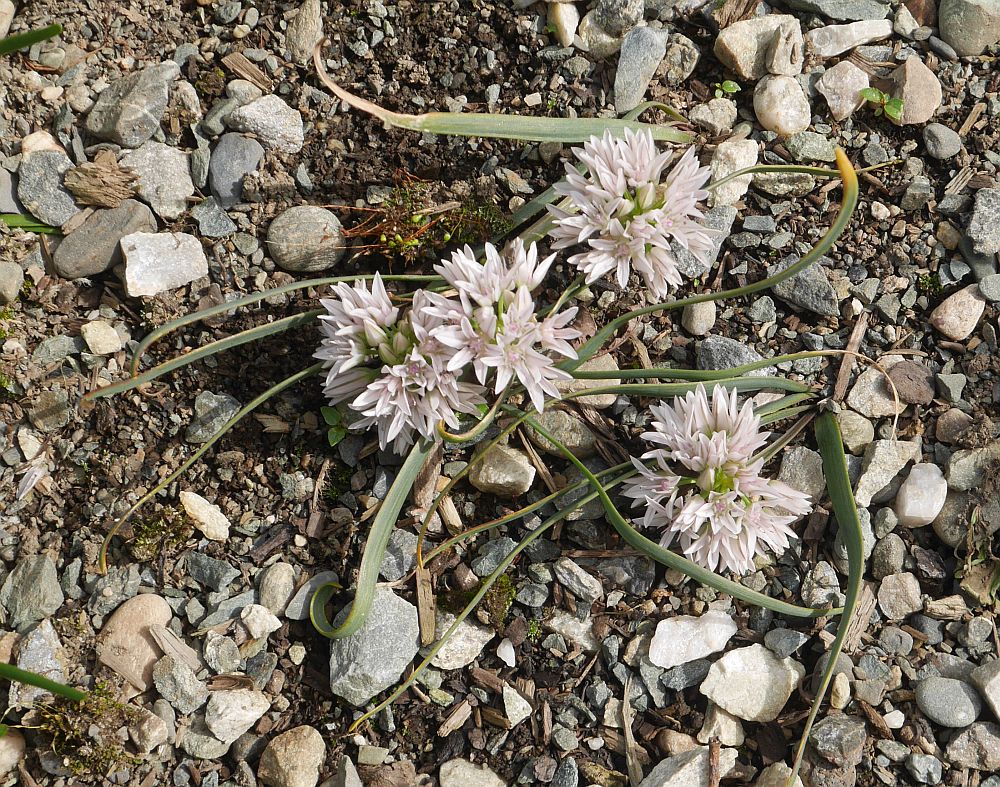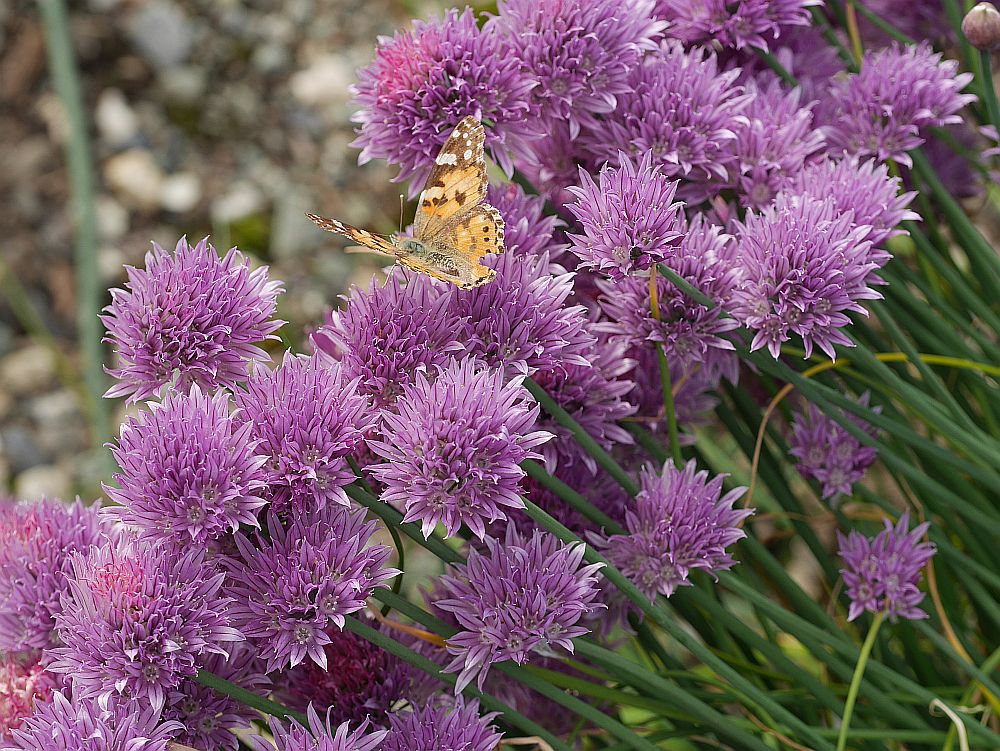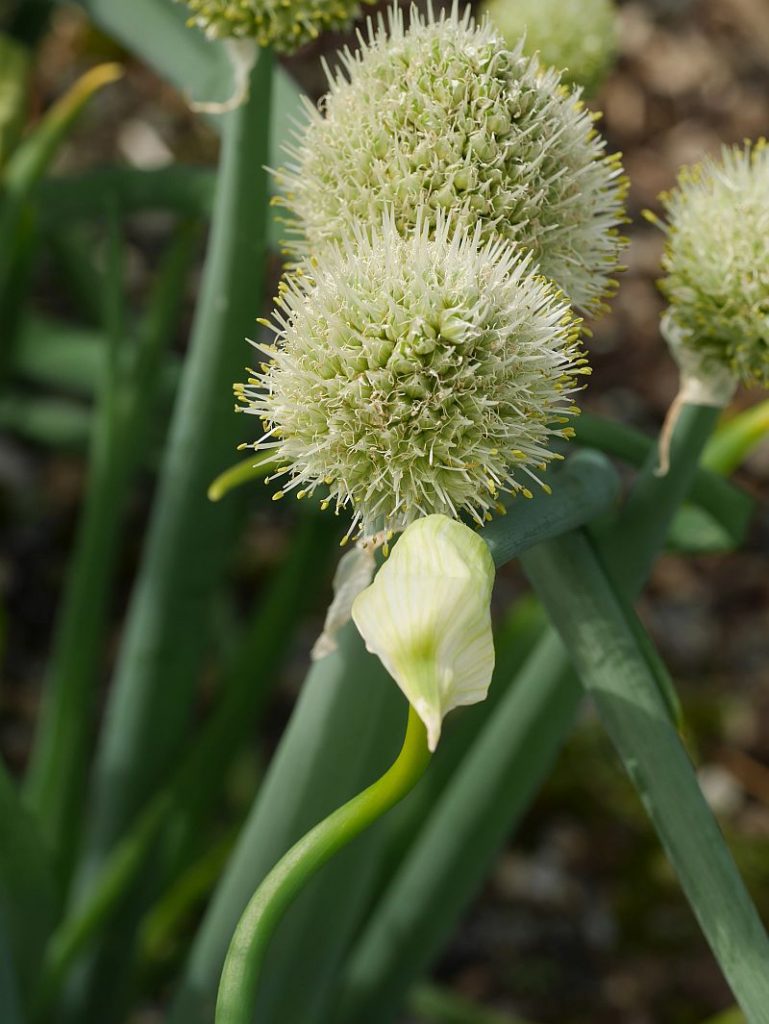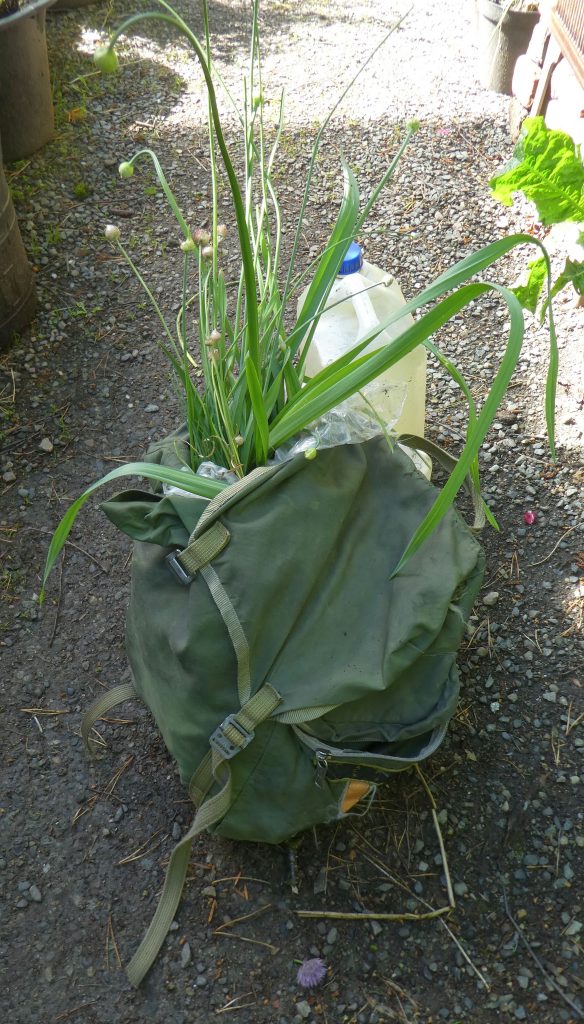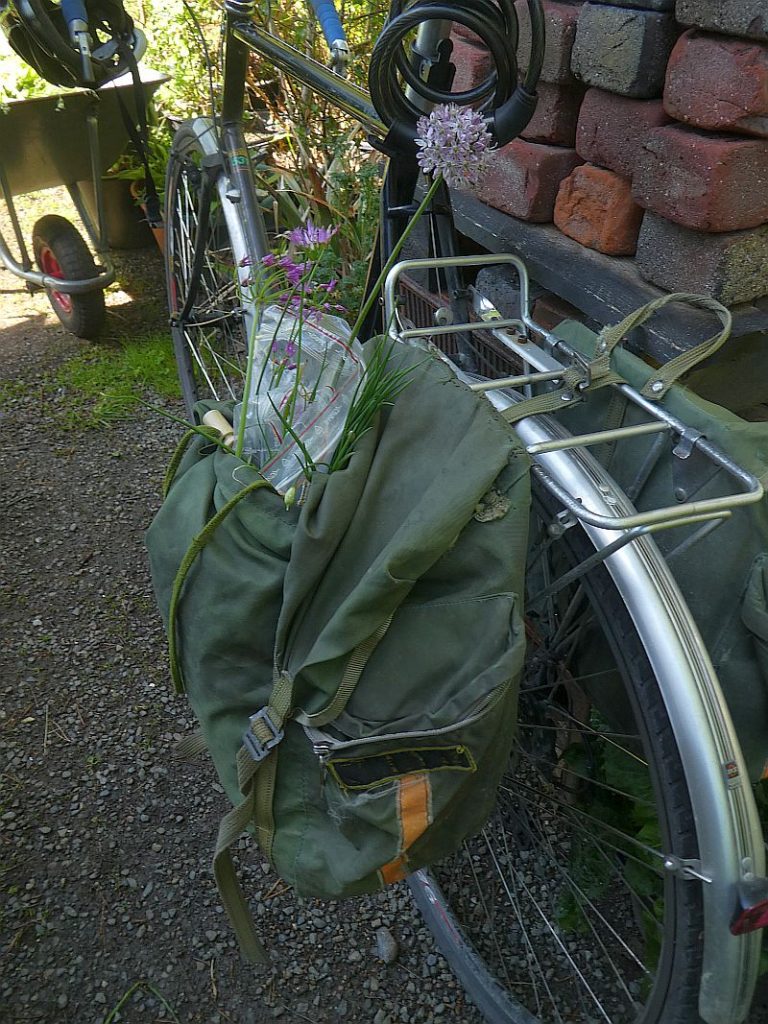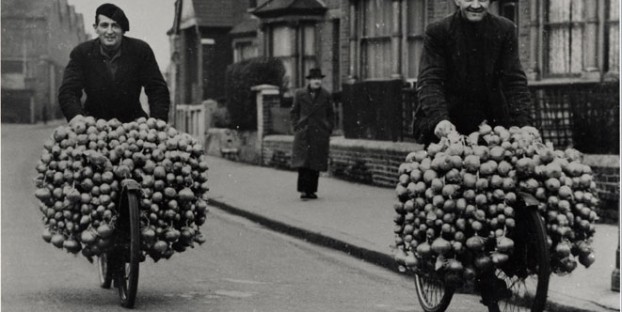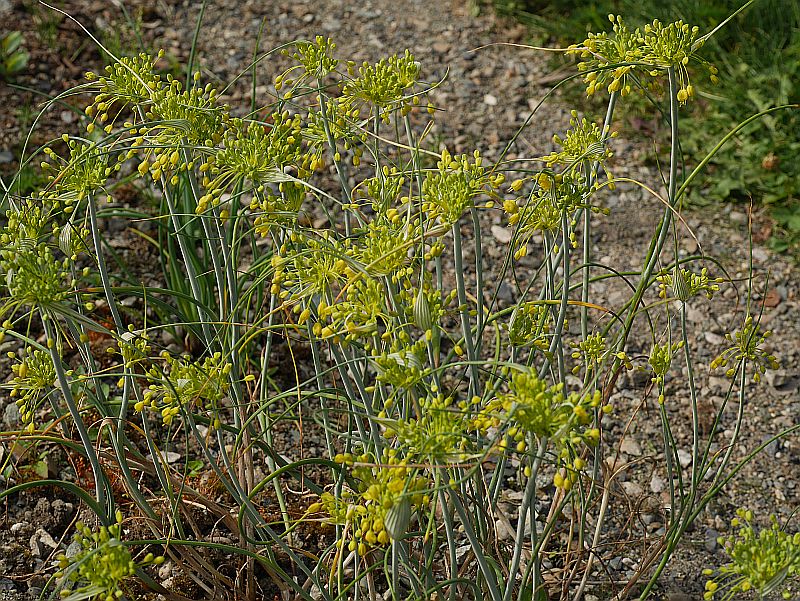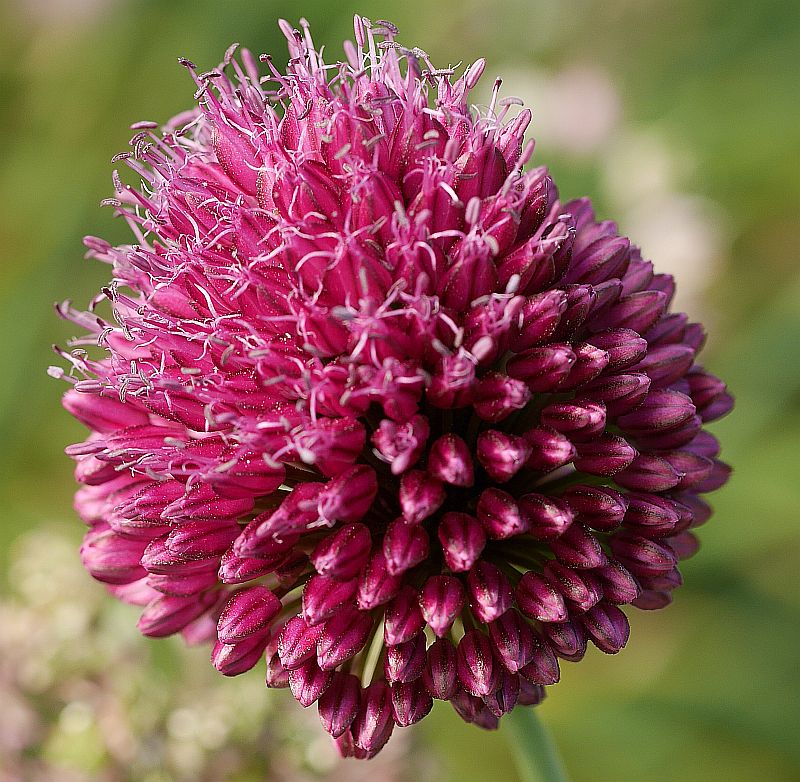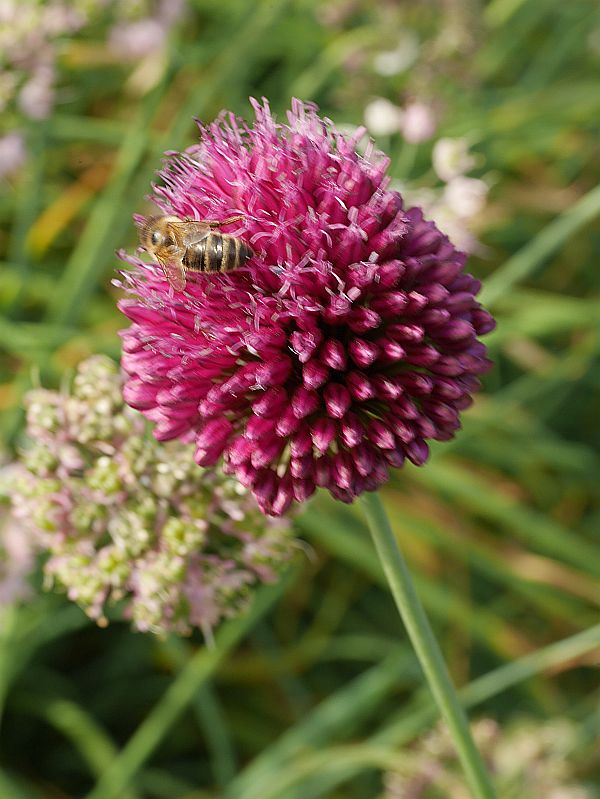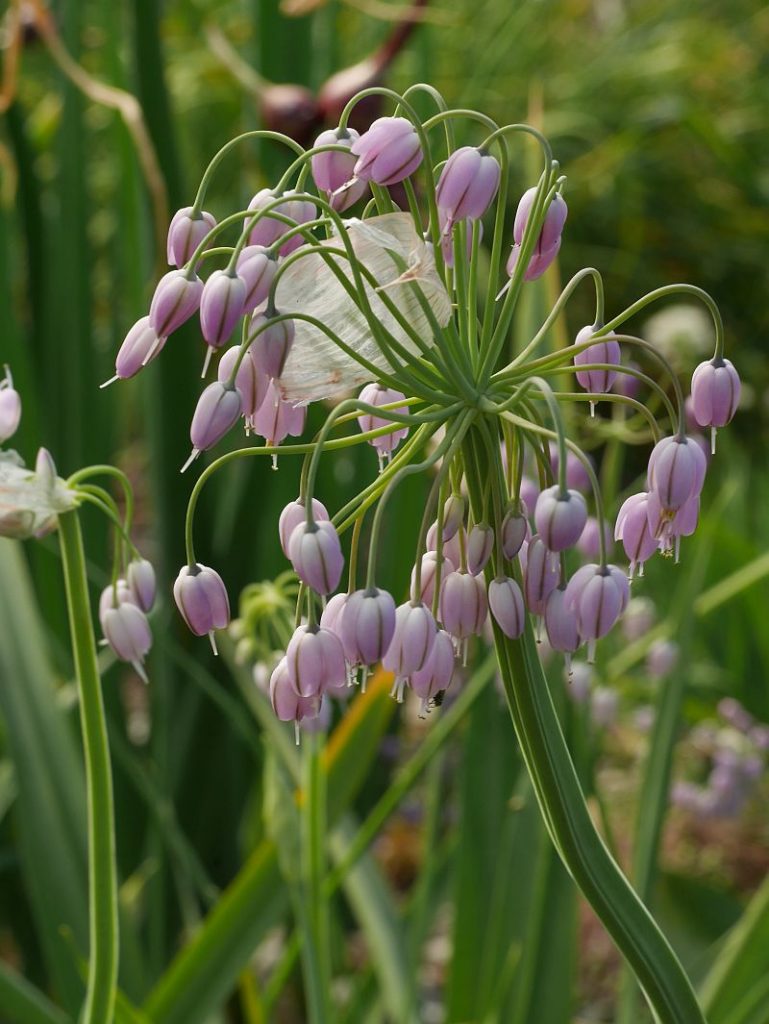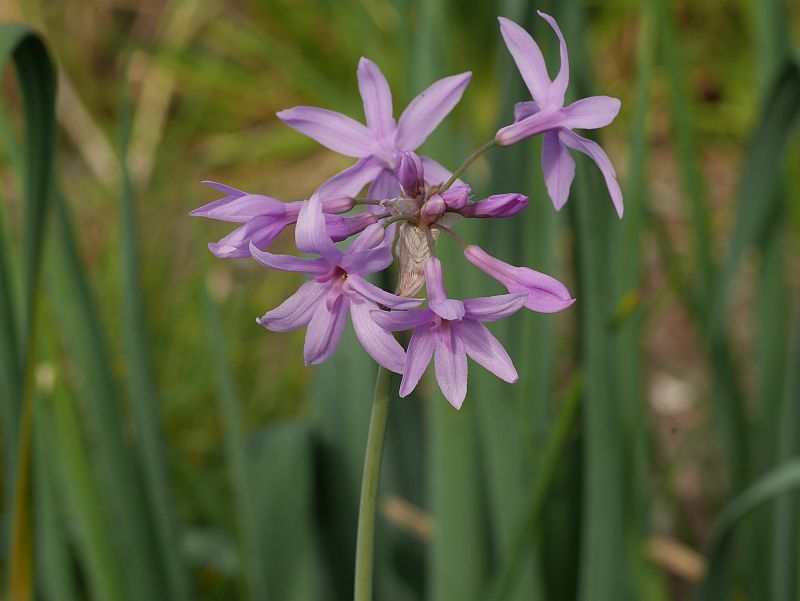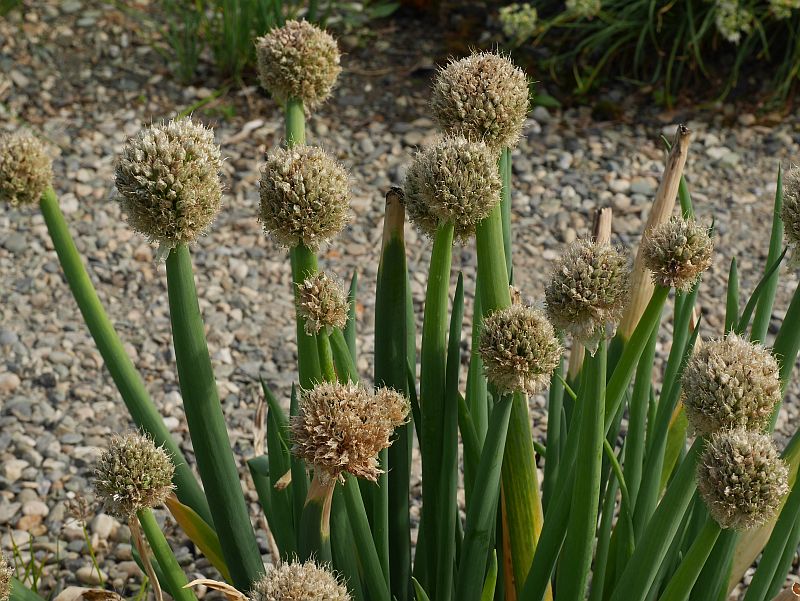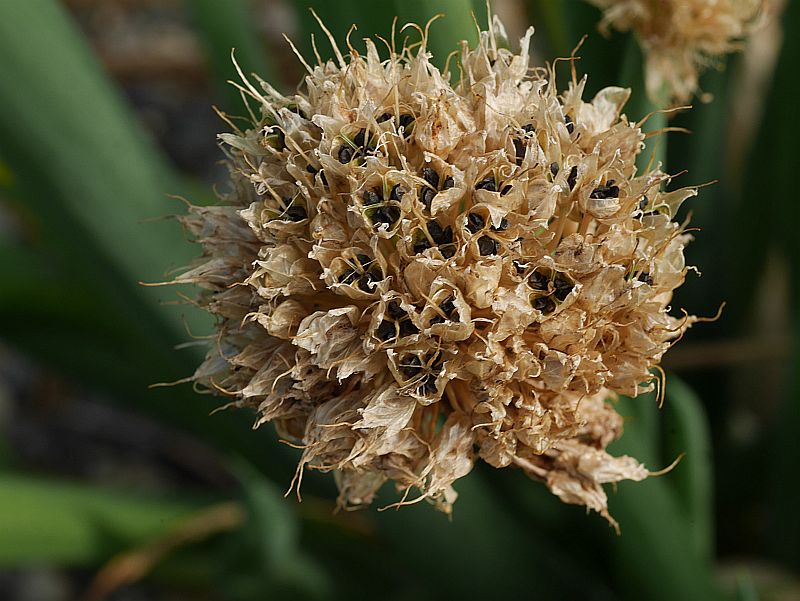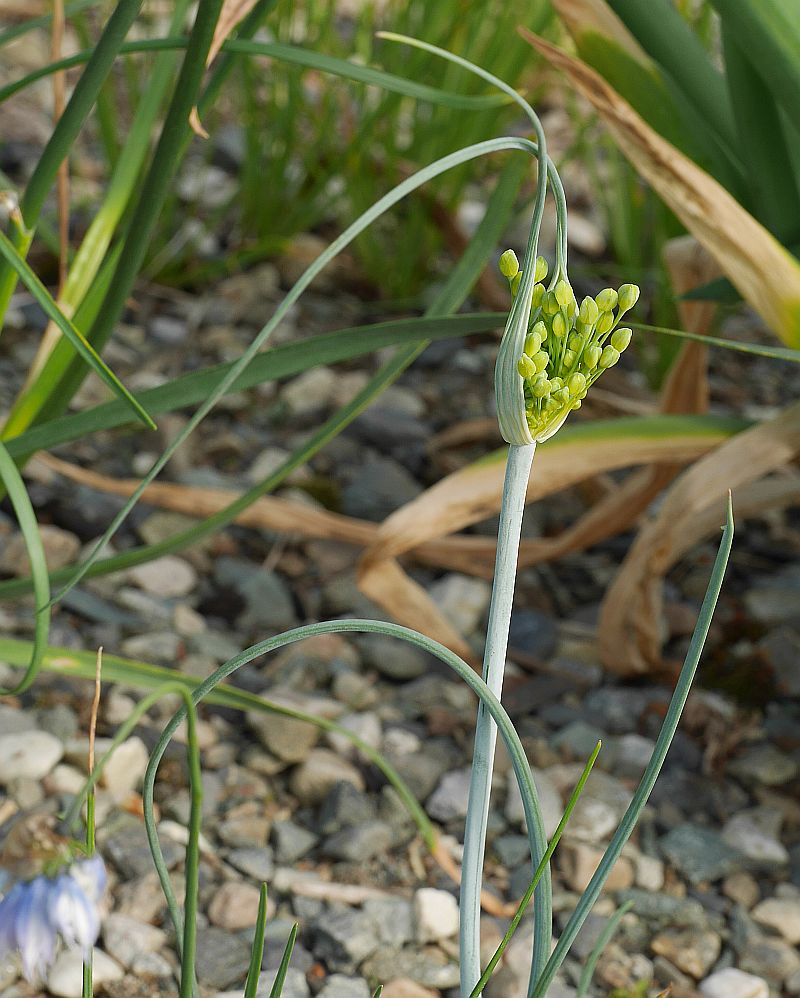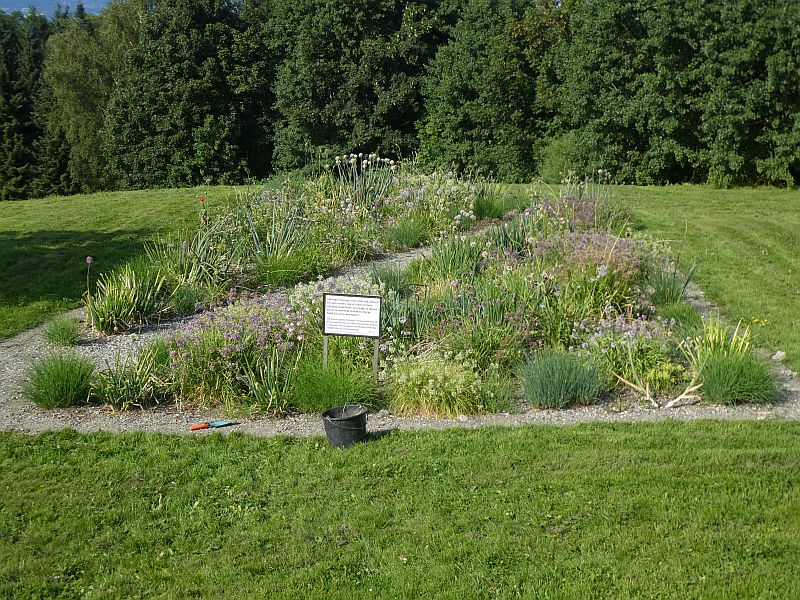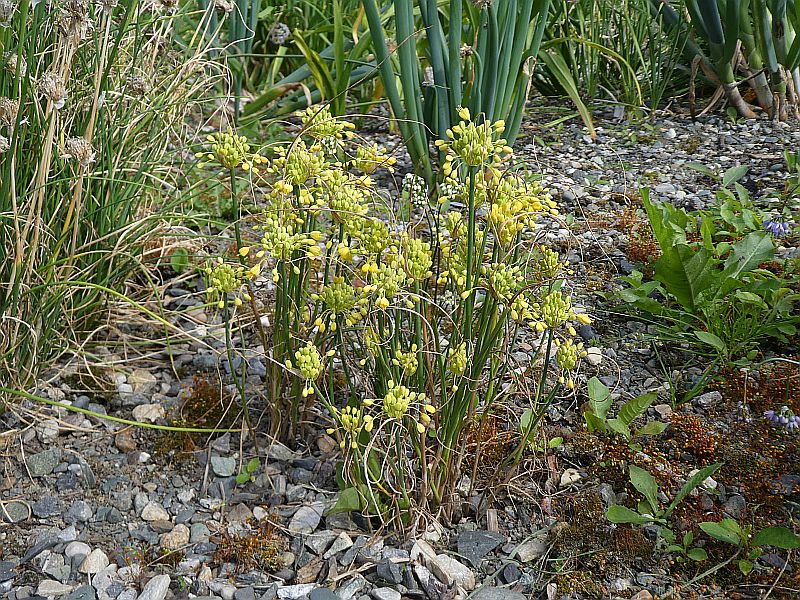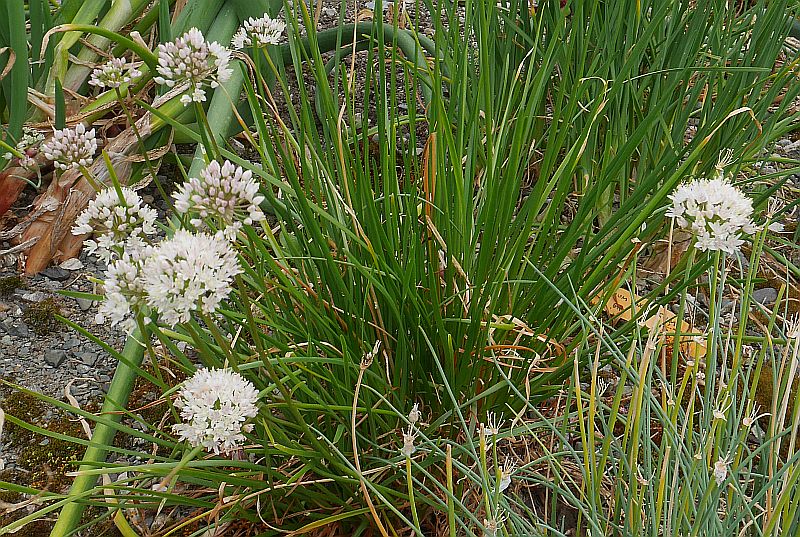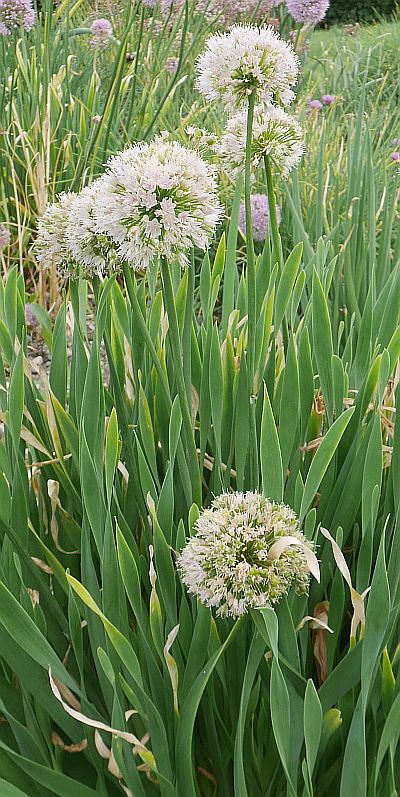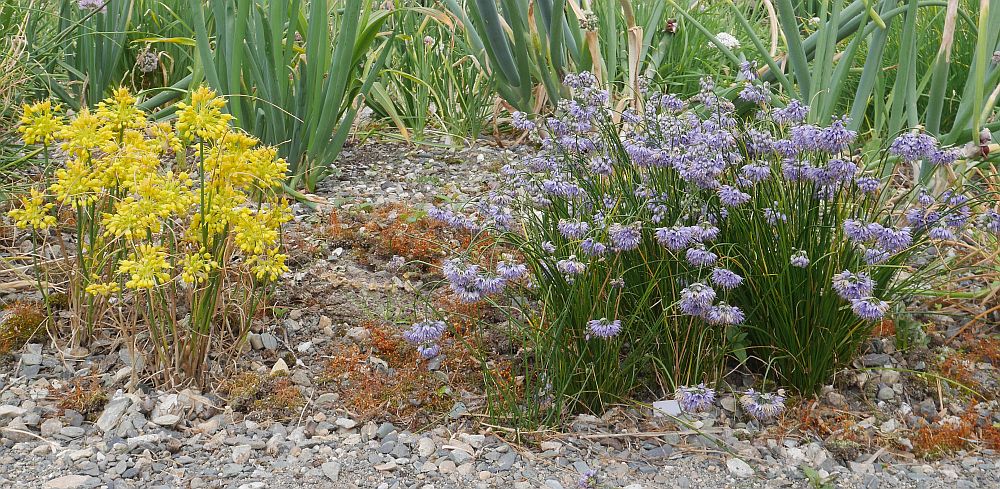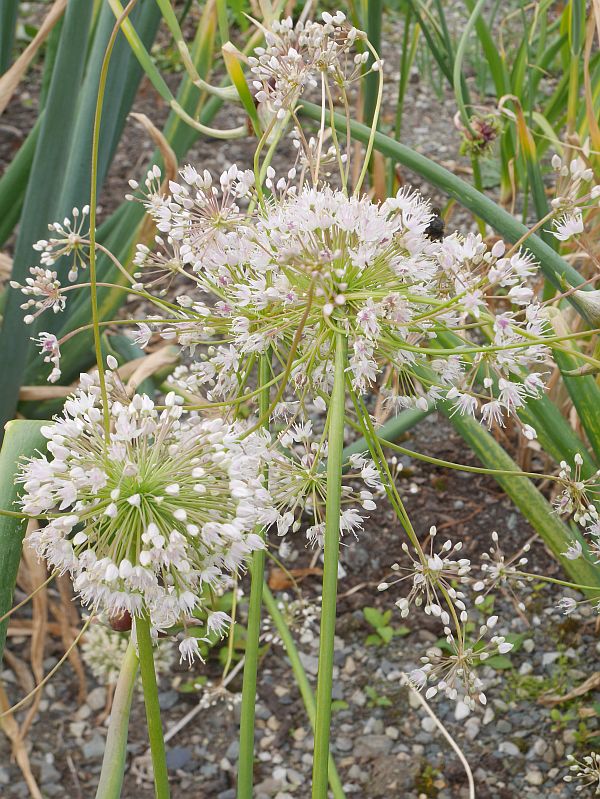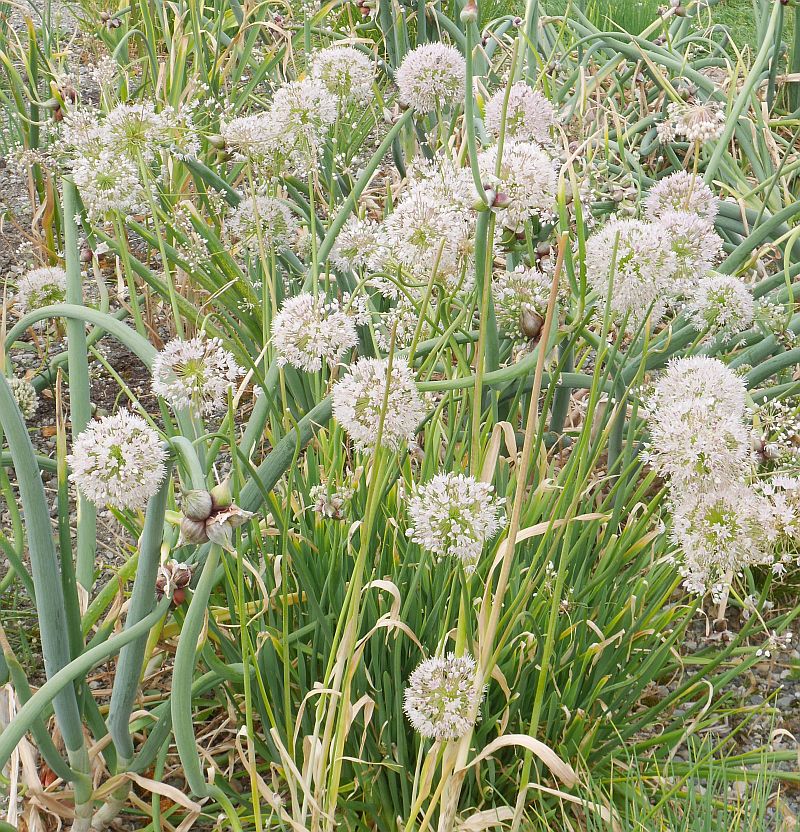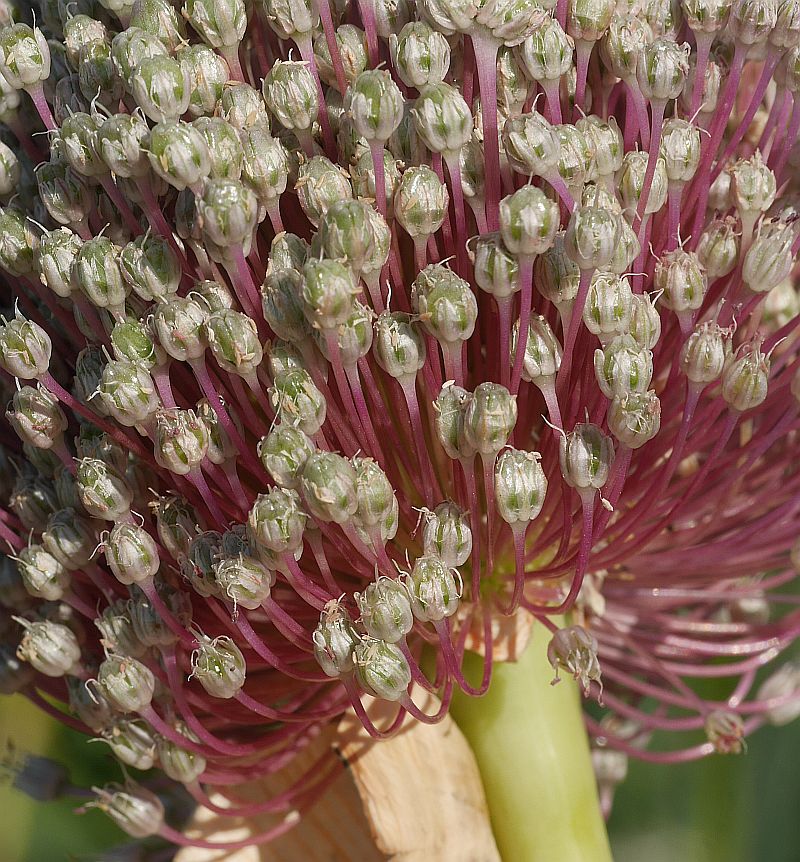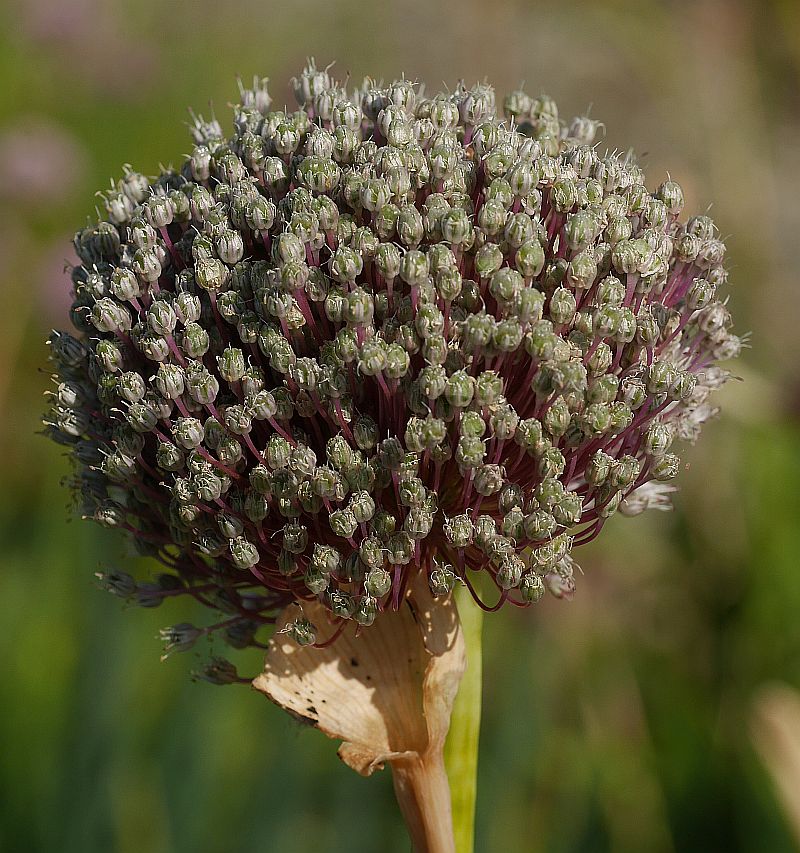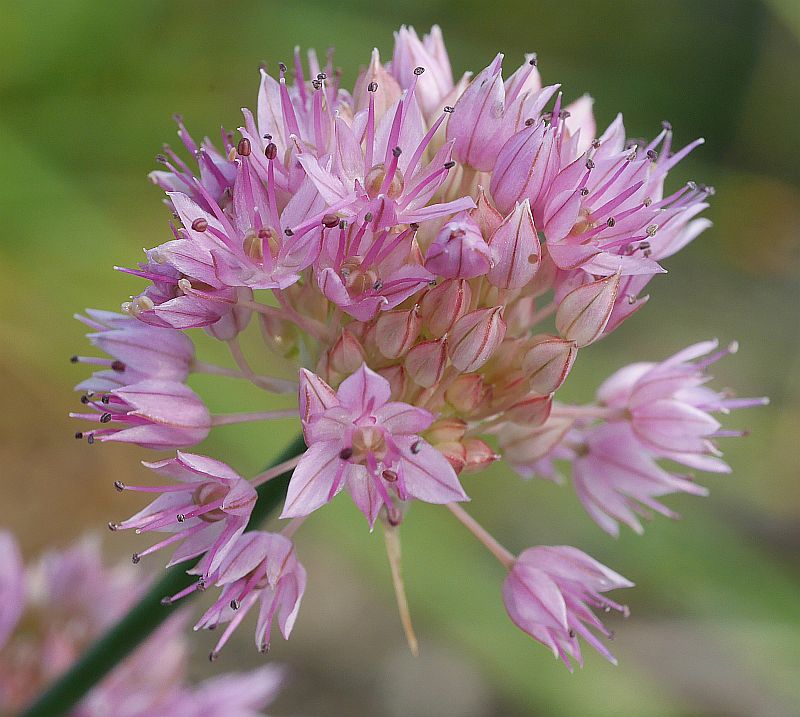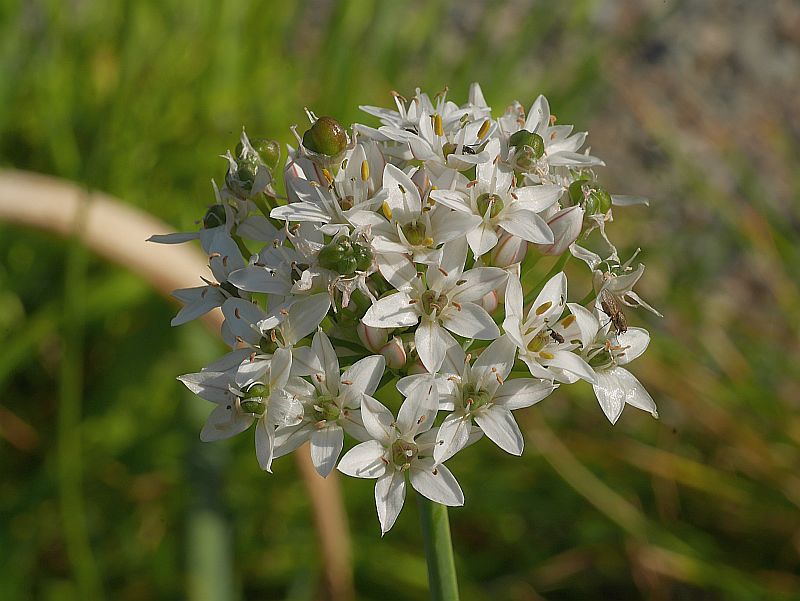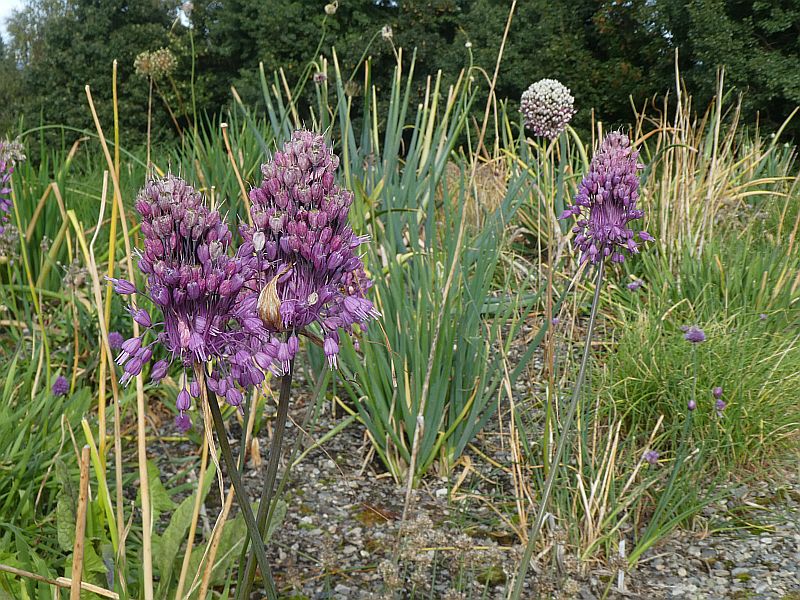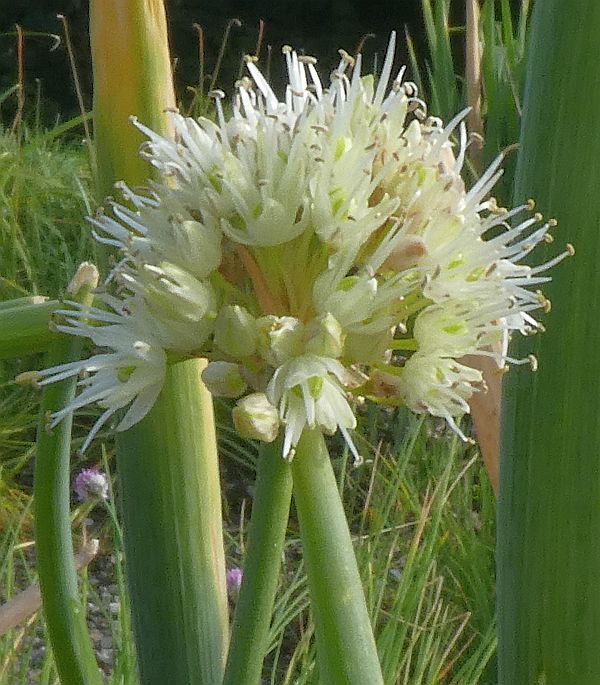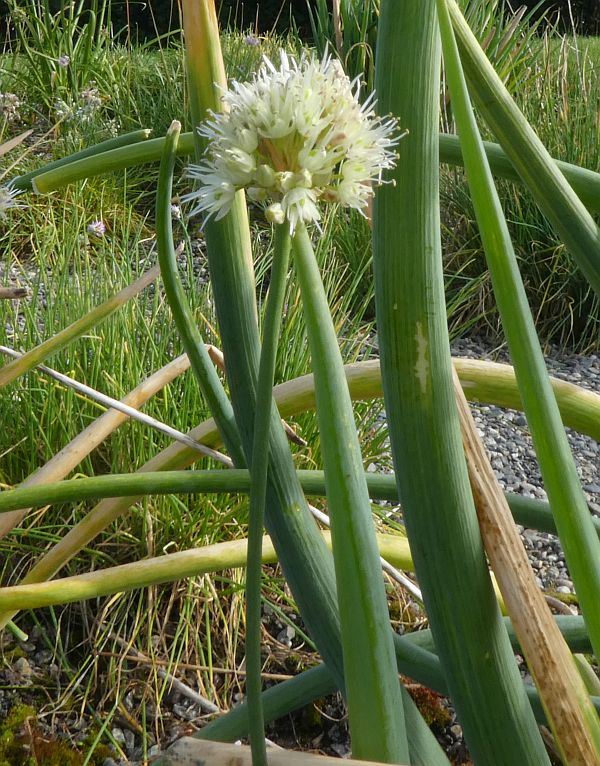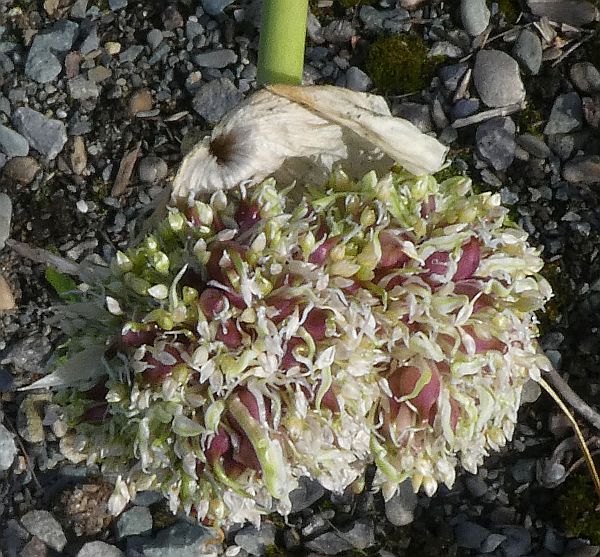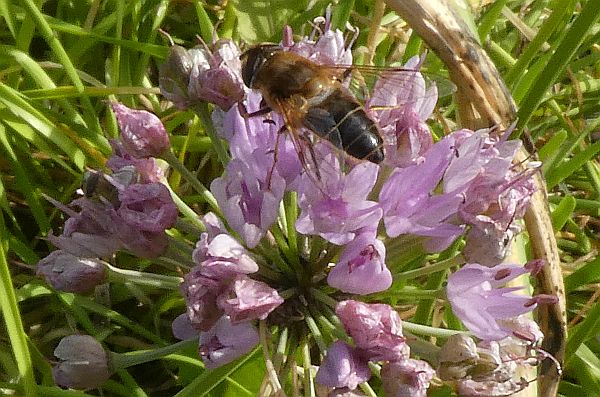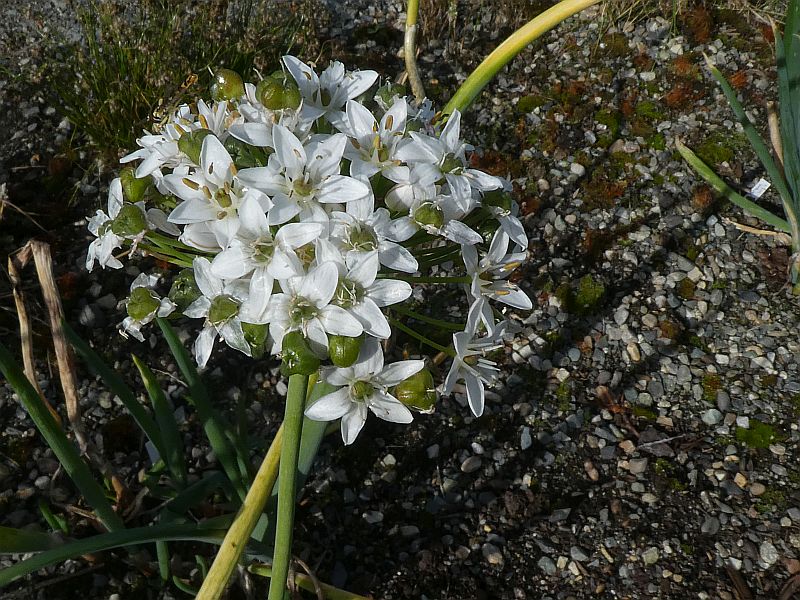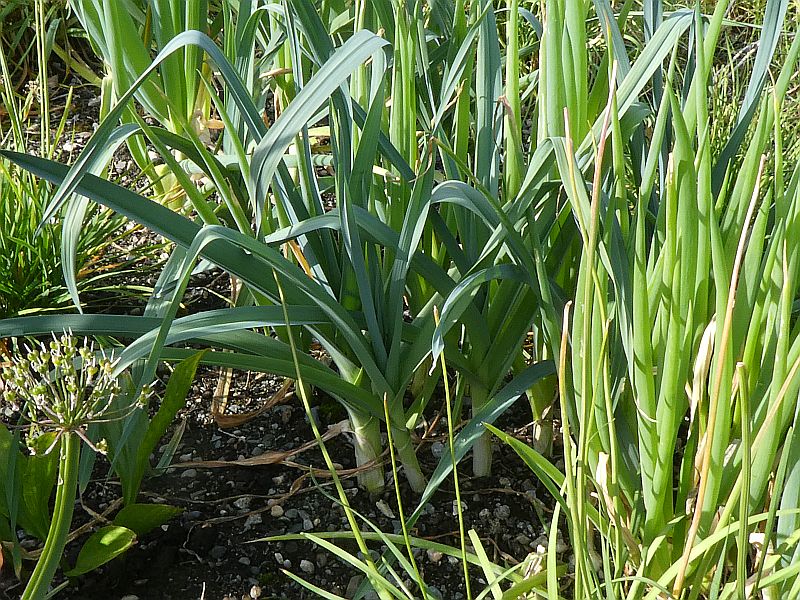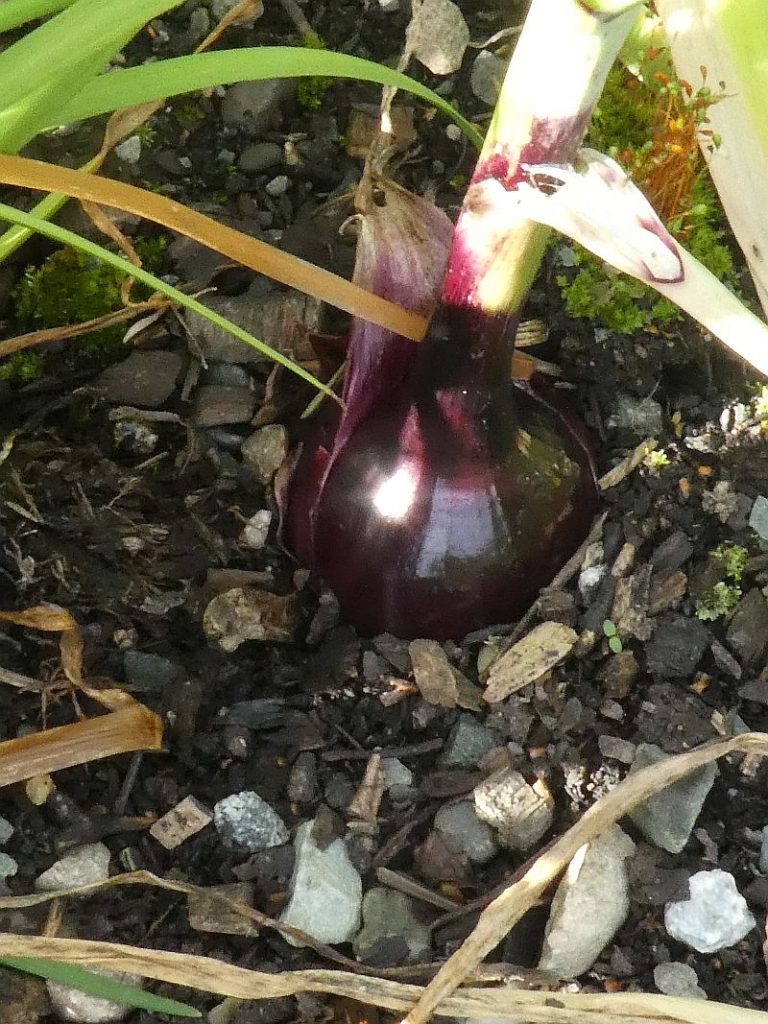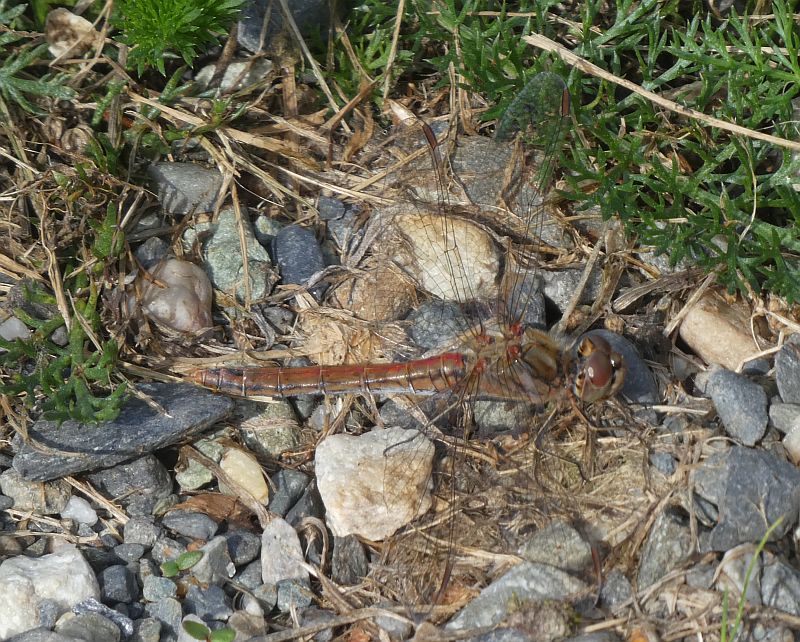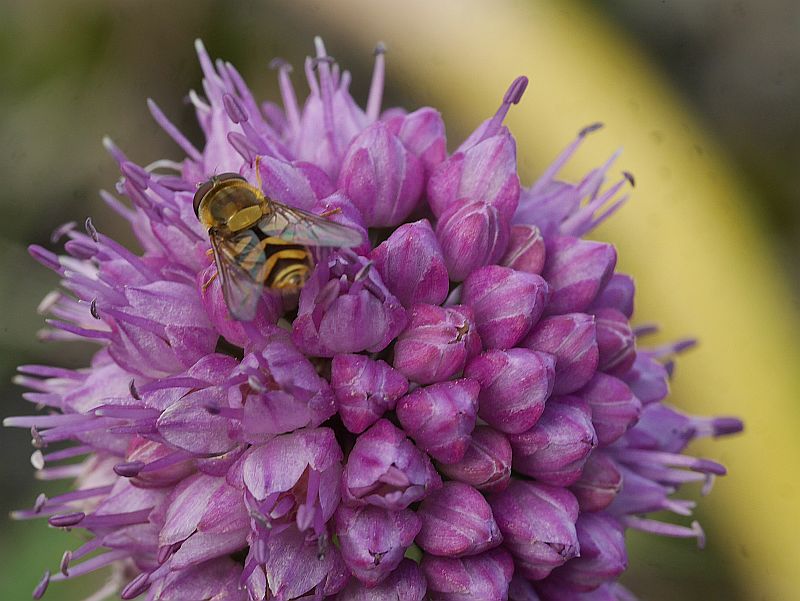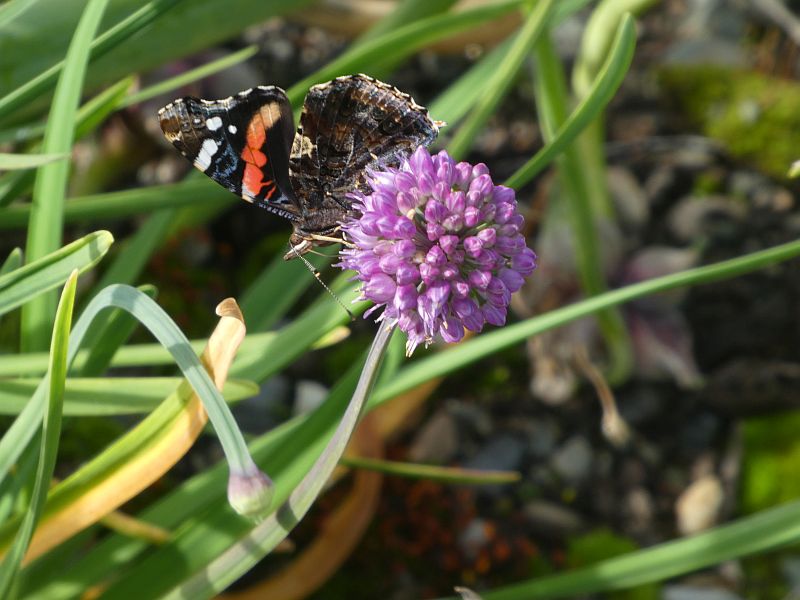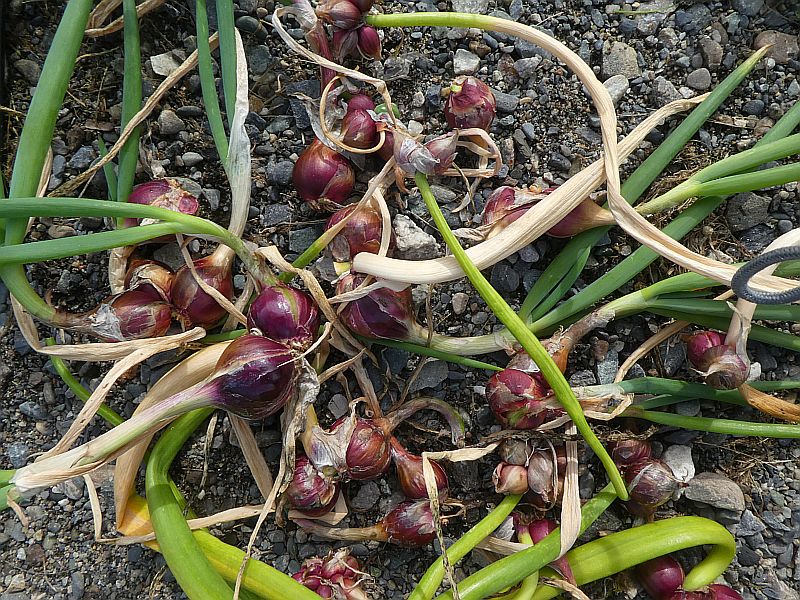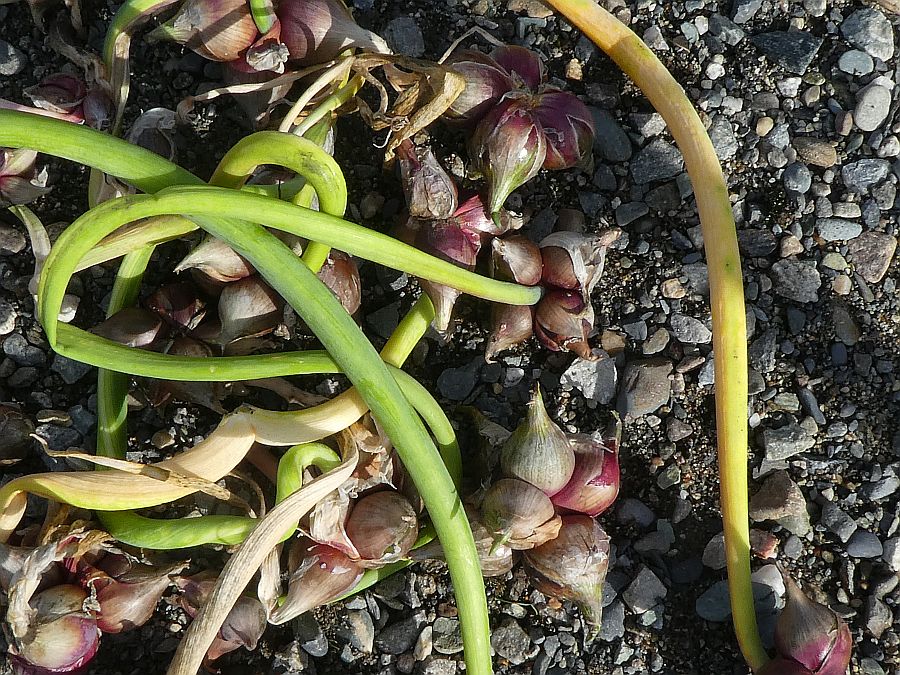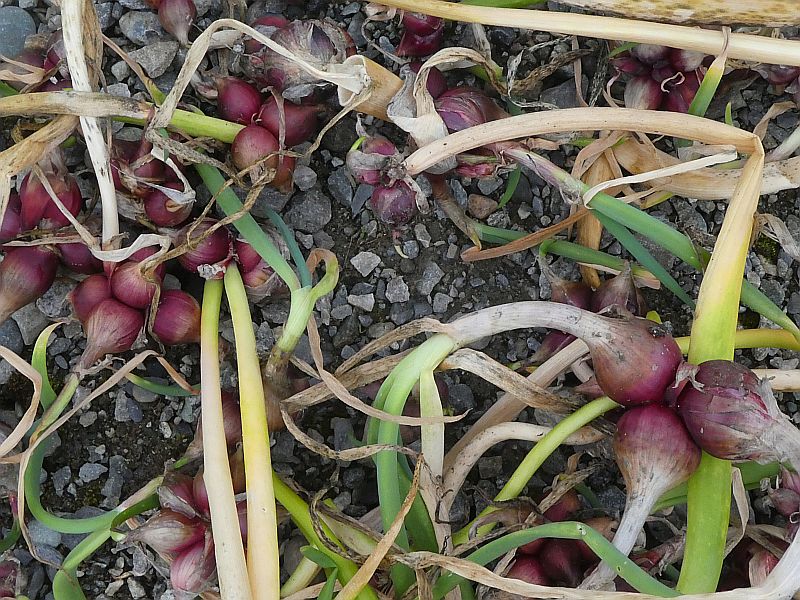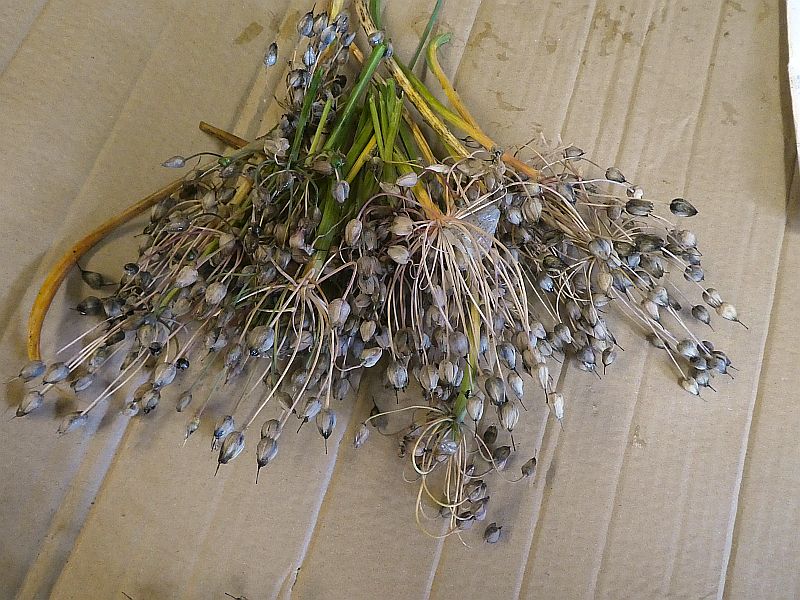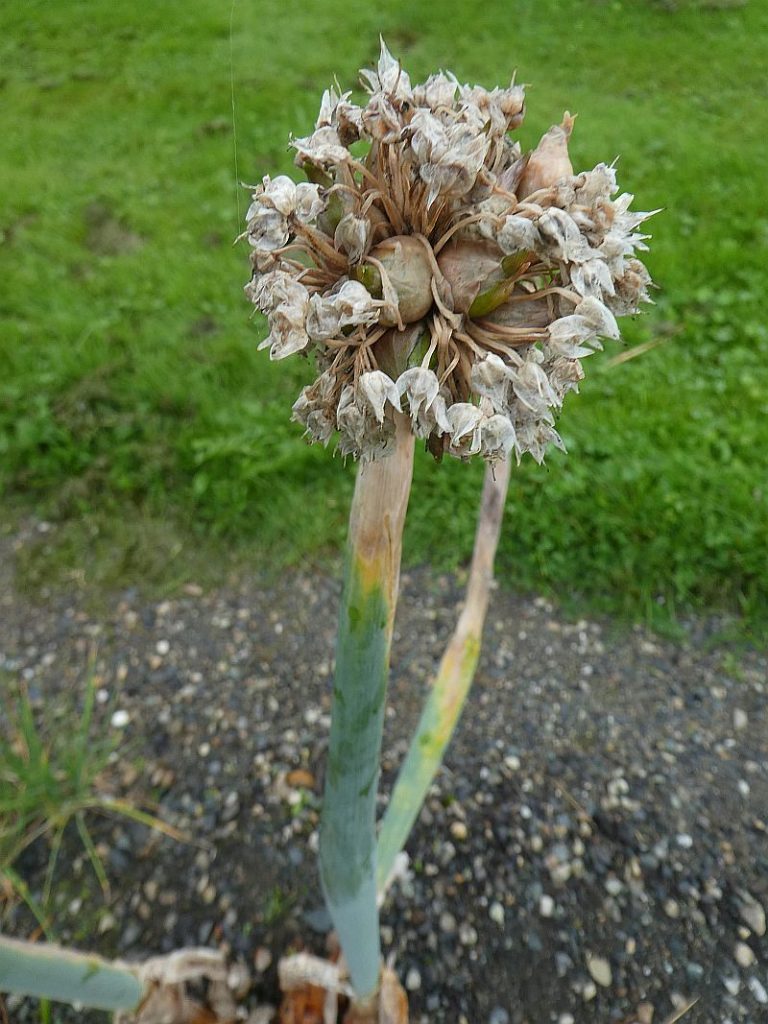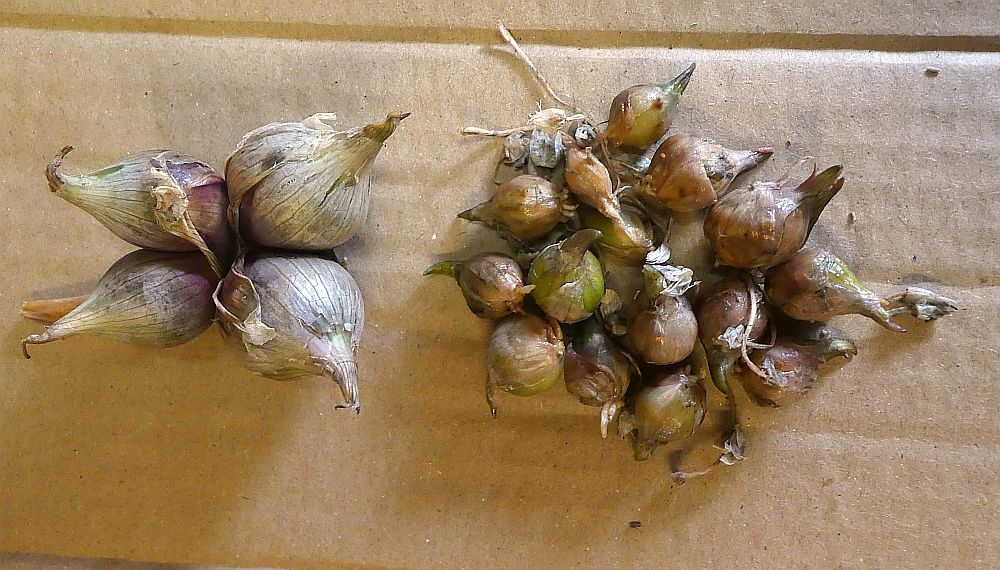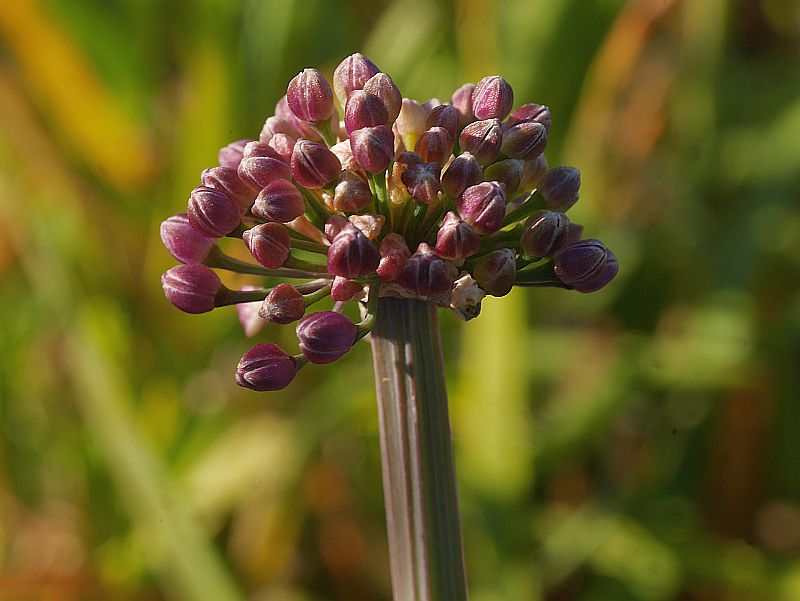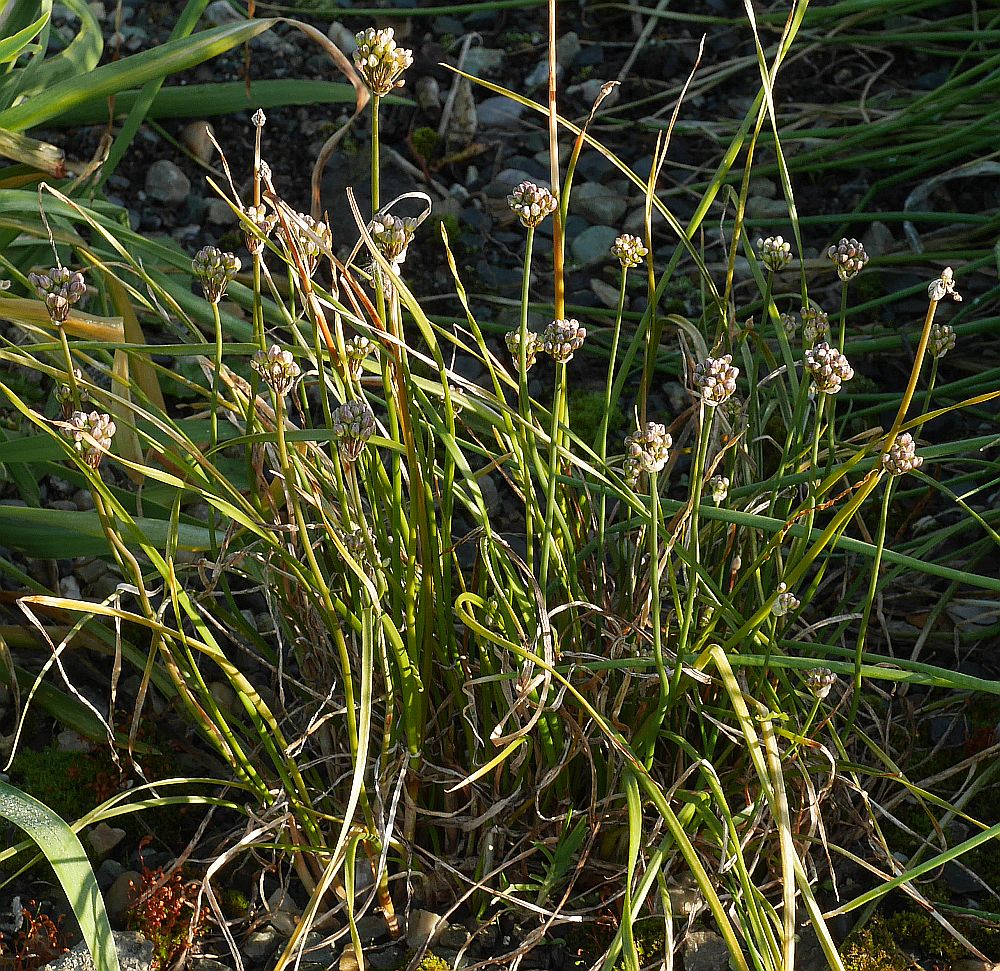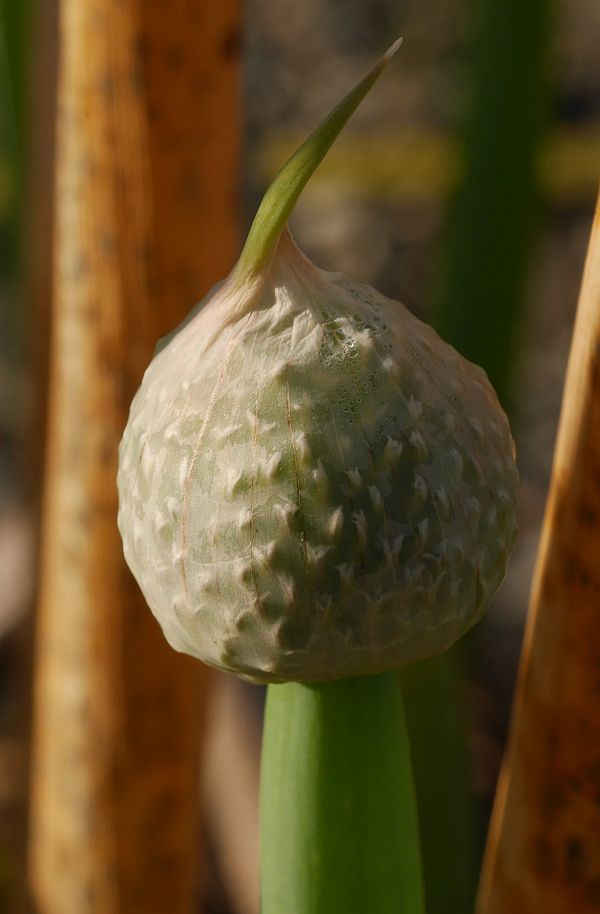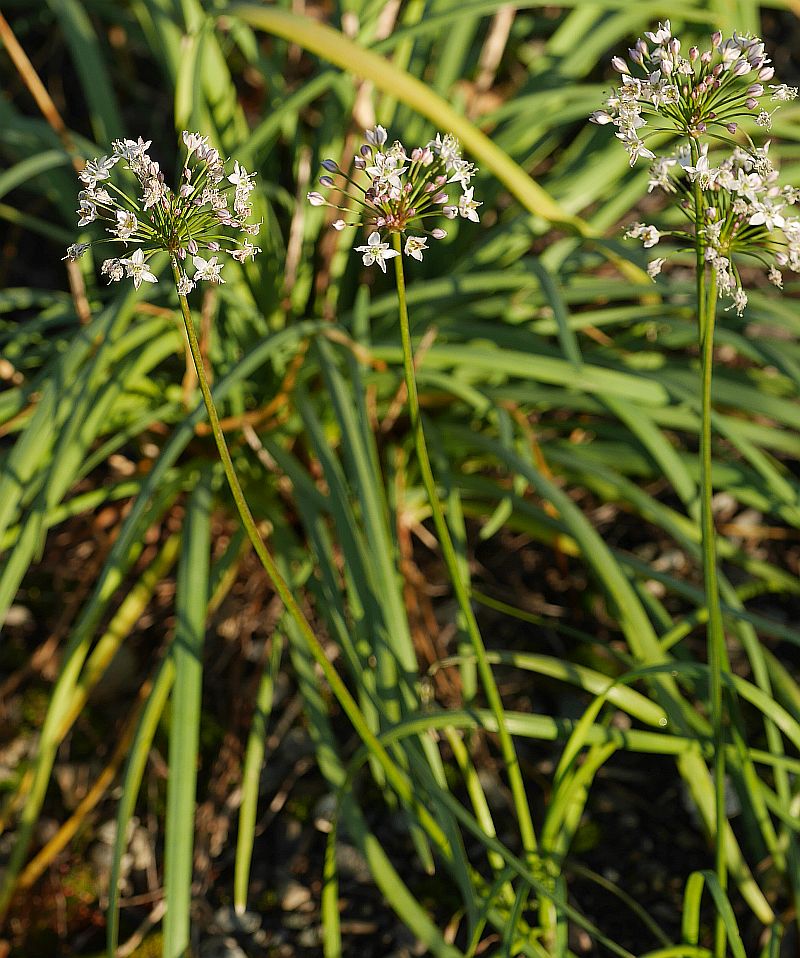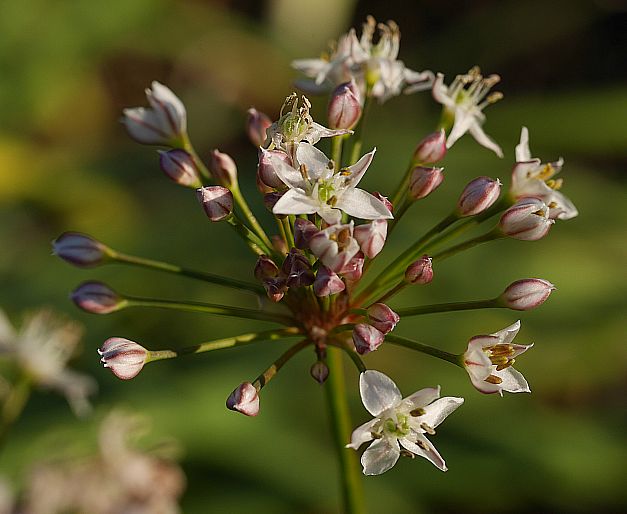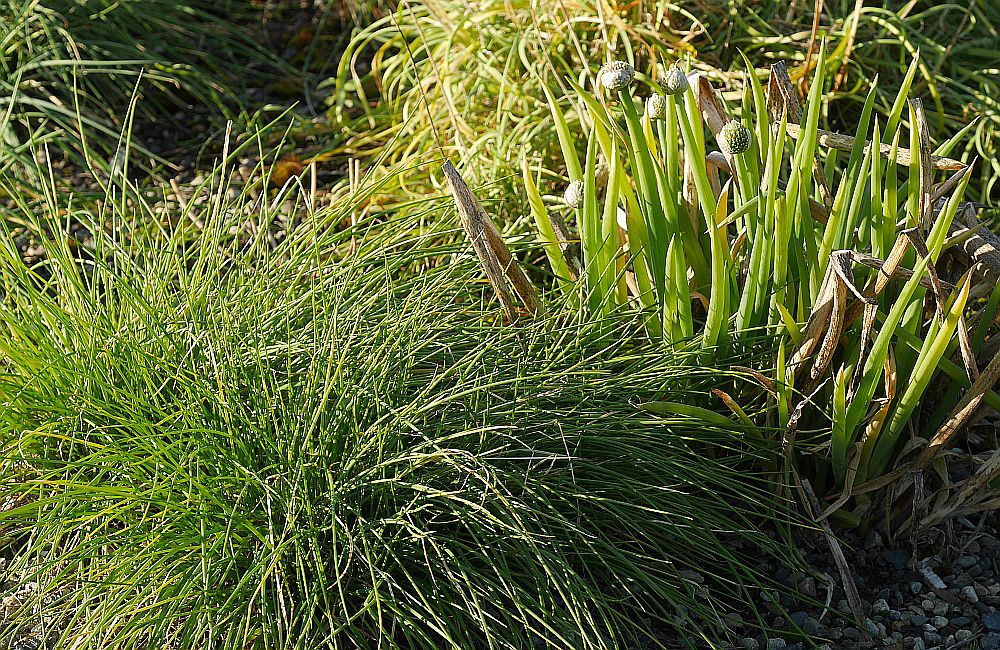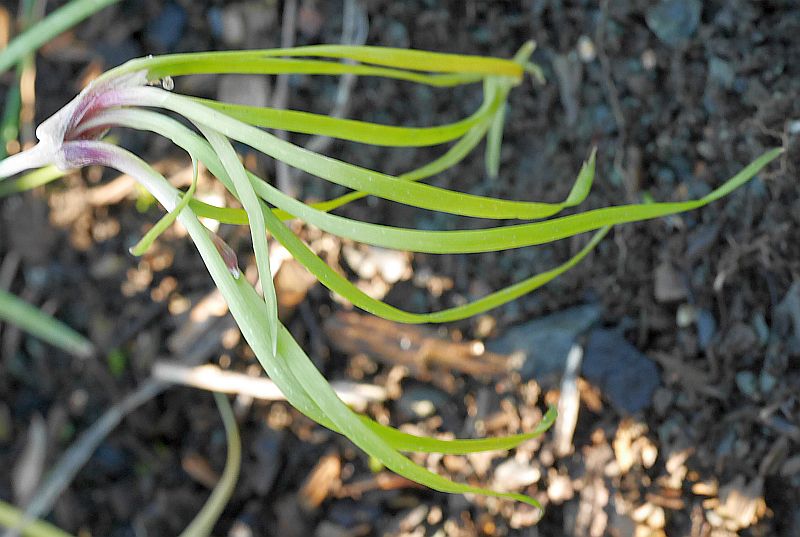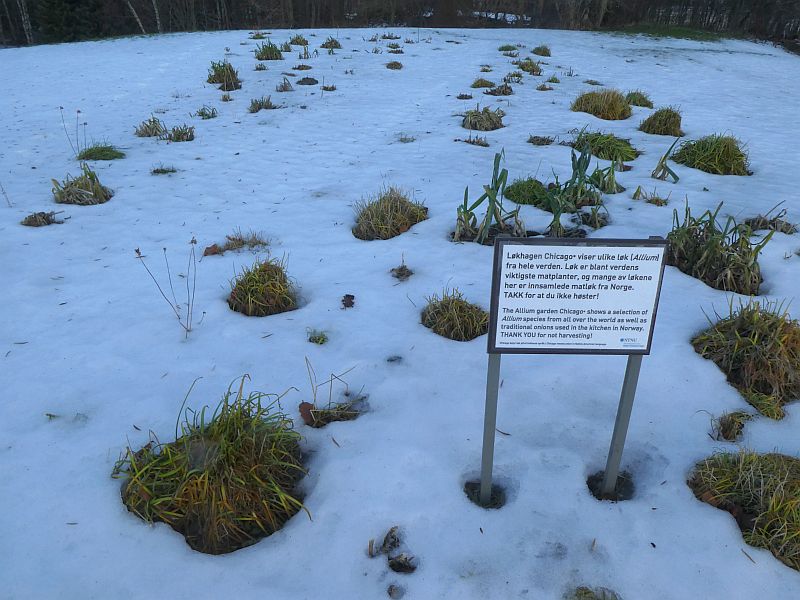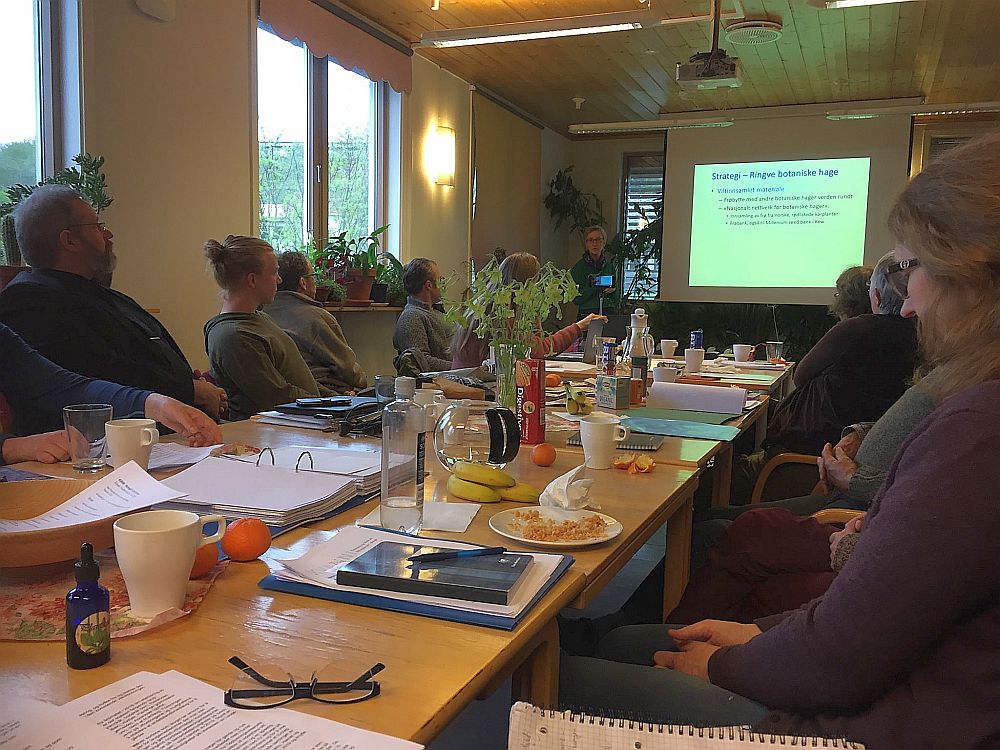Today at the Ringve Botanical Gardens I found the Allium garden was full of little workers eating the masses of birch seeds that had fallen during the winter….saving me a lot of work later. The first summer, there were thousands of birch seedlings in the garden…
Tag Archives: Ringve Botanical Garden
Tawny owl in the botanical garden

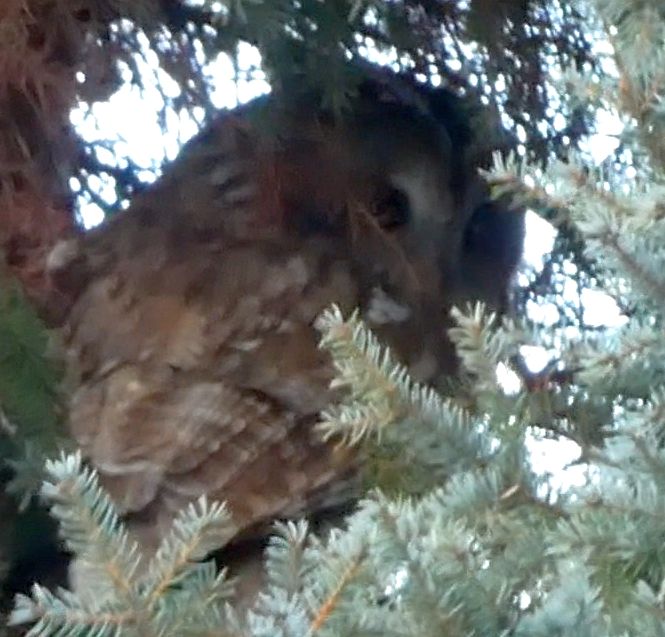
Cornelian Cherries and Polish Olives in Trondheim
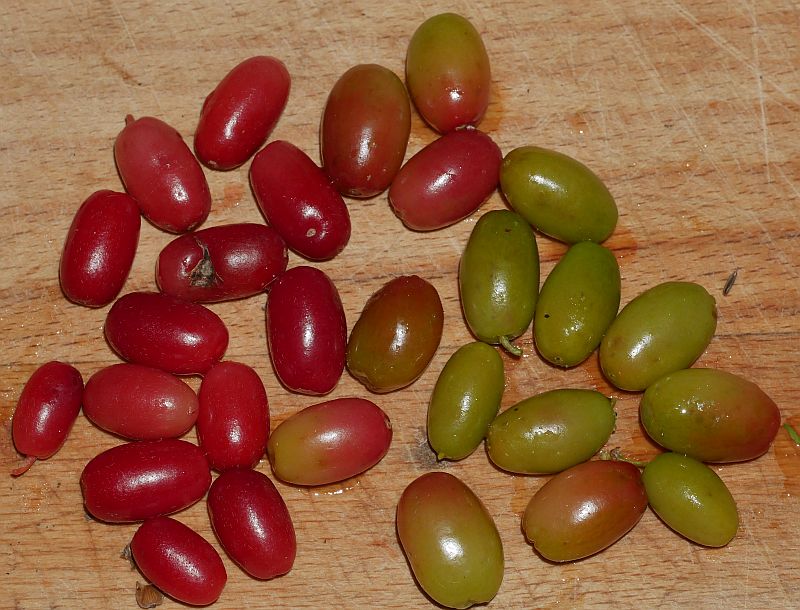
The bushes at Ringve, which were in a warmer and much sunnier spot than in my garden, were, on the other hand, laden with ripe fruit!
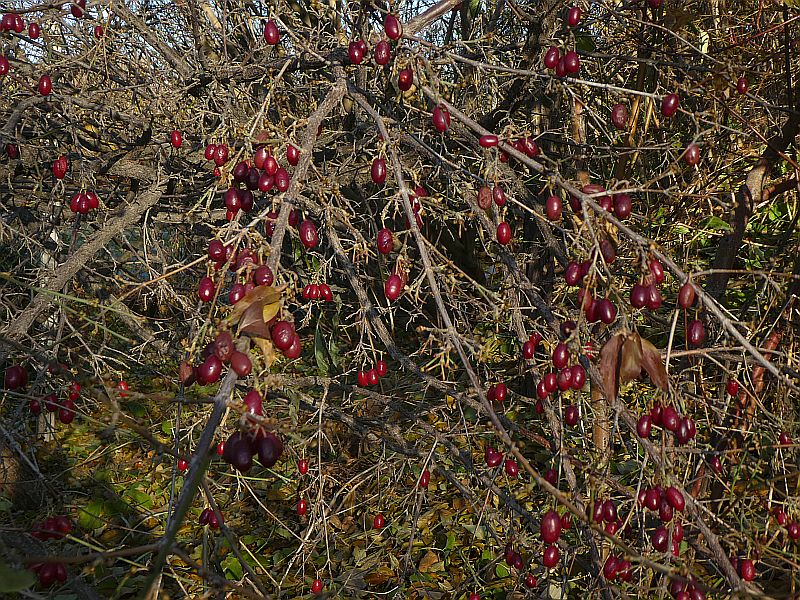

Although sour tasting raw, I was intrigued to see what they would taste like dried. My favourite dried fruit are sour cherries. Although not as good as those, I enjoyed the taste and they will this winter be part of my late winter dried fruit mixes that I eat every morning for breakfast once the fresh apples are finished.

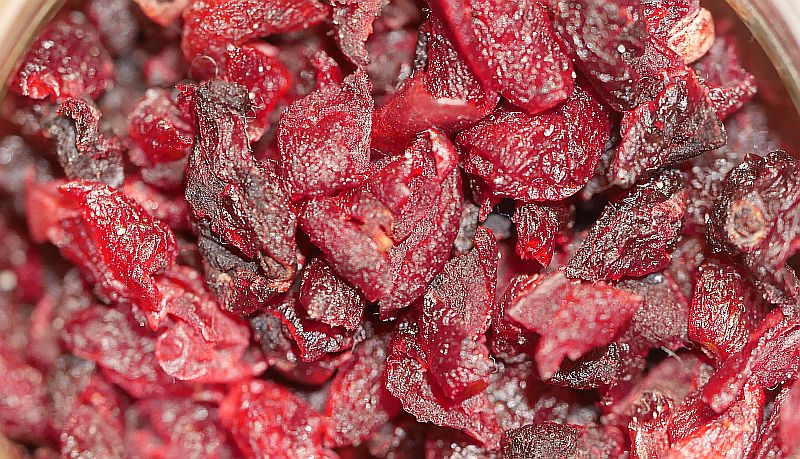
There are many varieties of cornelian cherry bred for bigger fruits, there are also pear shaped fruit varieties and yellow cultivars. (Edit: My friend Jesper Bay tells me that there’s also a black fruited variety!) There are also a number of ornamental varieties, such as the wonderful variegated form I once saw laden with fruit in the Oxford Botanical Garden (see the pictures below).
´Elegantnyj´, ´Jalt´, ´Kijevskij´, ´Lukjanovskij´, ´Vydubeckij´ are Russian in origin; ´Devin´, ´Olomoucky, ´Ruzynsky´, ´Sokolnicky´, ´Titus´ are from Czechoslovakia and Slovakia; ´Joliko´ and ´Fruchtal´ are Austrian and ‘Ntoulia 1’ and ‘Ntoulia 2’ are Greek.<
There are also partially self-fertile varieties.
Cornus mas has been cultivated commercially for centuries in the Caucasus and Central Asia. Turkey has today an important Cornelian cherry industry.
‘Kasanlaker’ is a large fruited cultivar which is available from nurseries in Western Europe.
I remember on a visit to Scandinavia’s oldest forest garden at Holma in Southern Sweden being shown a large Cornus mas in the centre of the city Lund on 1st September 2017! Here’s a picture of various forest gardeners harvesting the fruit (the tree was full):
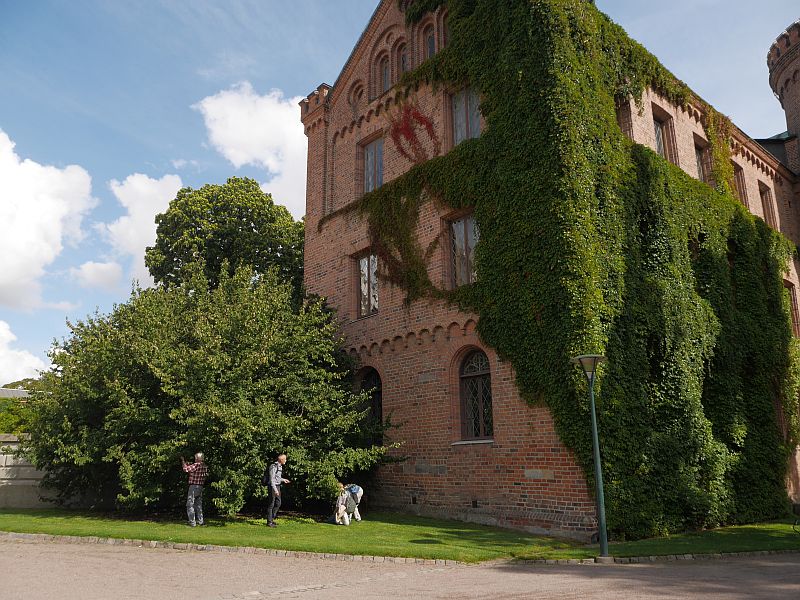
Reference
Oskar M. Szczepaniak, Kobus‑Cisowska, J., Kusek, W. and Przeo, M. 2019. Functional properties of Cornelian cherry (Cornus mas L.): a comprehensive review. European Food Research and Technology. 245:2071–2087
American chestnut at Ringve in Trondheim
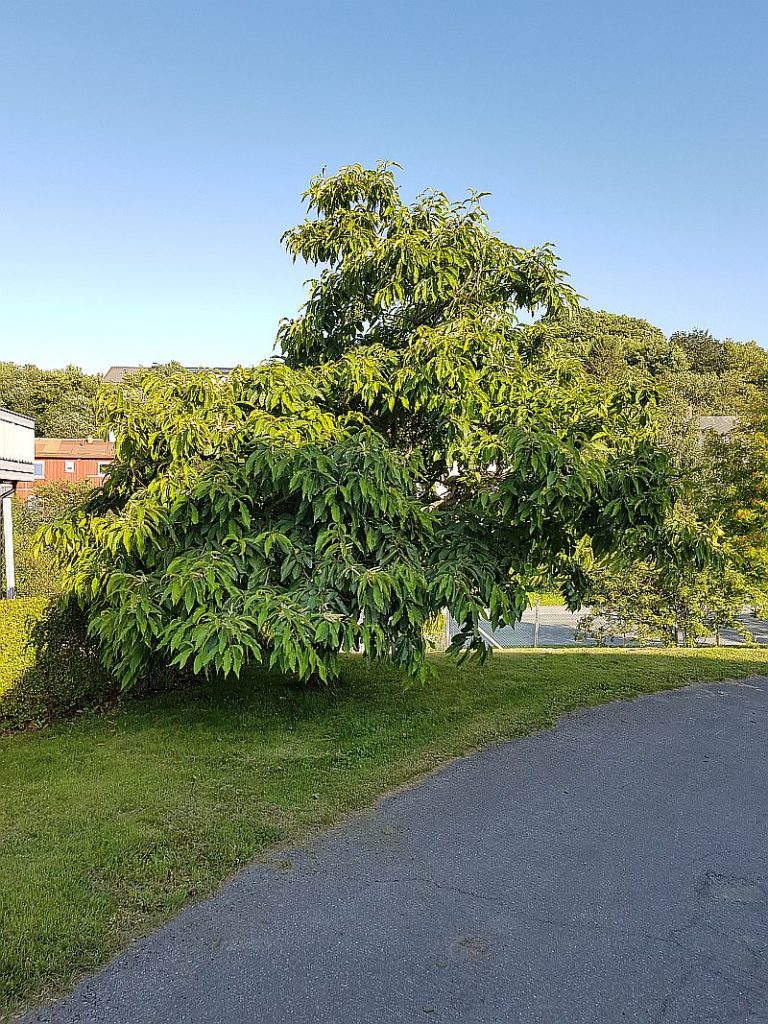
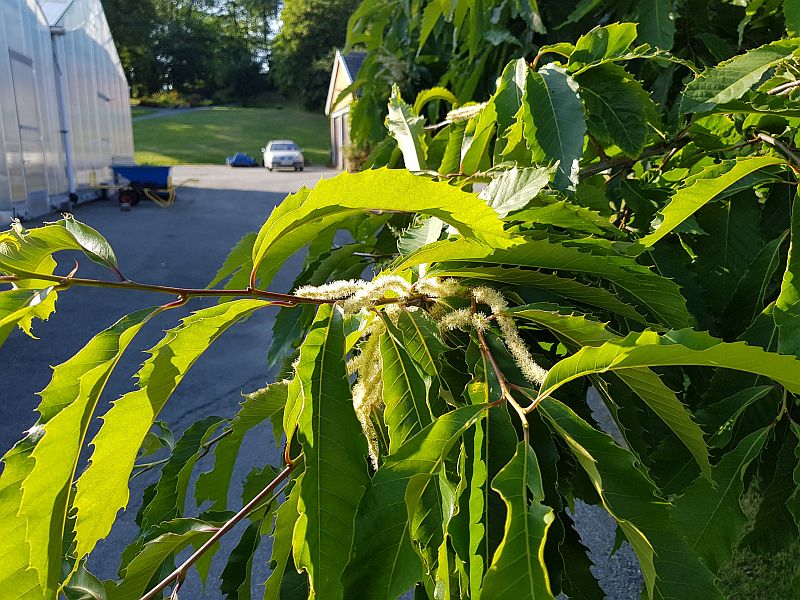
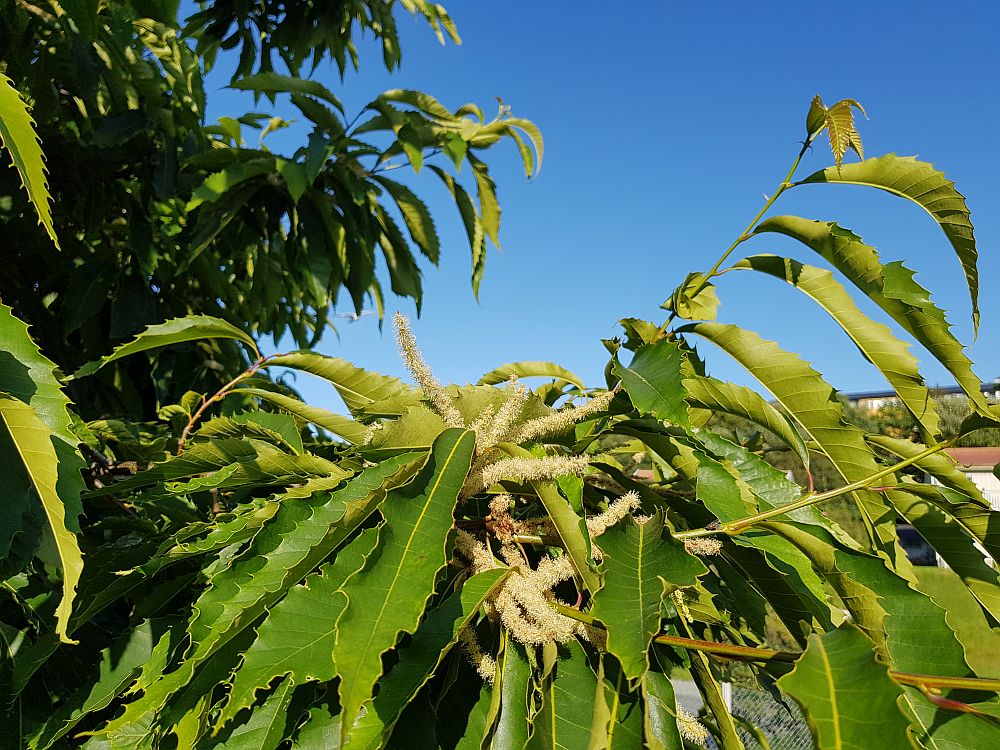
The tree has separate male and female flowers, but there has to be at least two trees for pollination ….
I have 5 one-year-old trees from a northern provenance, Jefferson County in Washington State (via Chris Homanics in Oregon) and hope that Ringve would like to plant more eventually….I would love to see if the nuts would ripen here… and also help to preserve a tree species that is threatened with extinction by an imported fungal disease where it grows wild in eastern North America. In its homeland, this is one of the quickest to produce nuts from seed (as early as 5 years!)
Chris, one of my food diversity / preparedness heroes, wrote in 2016:
“Last month was spent collecting many distinct types of chestnuts from about 30 separate sites throughout Western Washington and Oregon. Some were even from old naturalized forests full of chestnut trees. Amassed it represents a diverse foundation stock for planting up, far and wide. In the face of growing droughts and the woes of climate change, I believe this plant will play a significant role in feeding people in the future as it has gone far back into the deep past. My hope is to help foster a revival of interest with the chestnut as a viable sustainable food source by offering a diverse collection of these nuts to the public to select and adapt to their local environment. ”
My other plants I’d like to plant in KVANN’s garden at Væres Venner Felleshage!
Johannes’ Shallot
There is a special perennial onion which was traditionally harvested on this day in the Netherlands, which I believe to have a much large potential than its current status as a local food crop, as it is so much easier to grow, in particular in areas increasingly suffering from summer droughts and water shortages, along with many other perennial vegetables. If nothing else, it complements shallots and onions in that it is available much earlier in the year!
On a visit to the Utrecht Botanical Gardens in the Netherlands some years ago, I’d photographed an onion called Sint-Jansui and given the botanical name Allium fistulosum var. proliferum.

Botanist Gerard van Buiten at Utrecht later wrote to me “Ah, I see you have found our “St Jansuien! Yes, it is an old local variety, grown around Utrecht. One of our gardeners used to grow it on his nursery a long time ago. Every year on “St. Jansdag”, a box of onions was delivered at Paleis Soestdijk, where Queen Juliana and Prince Bernhard used to live. It is grown nowadays in some urban garden projects in the city”.
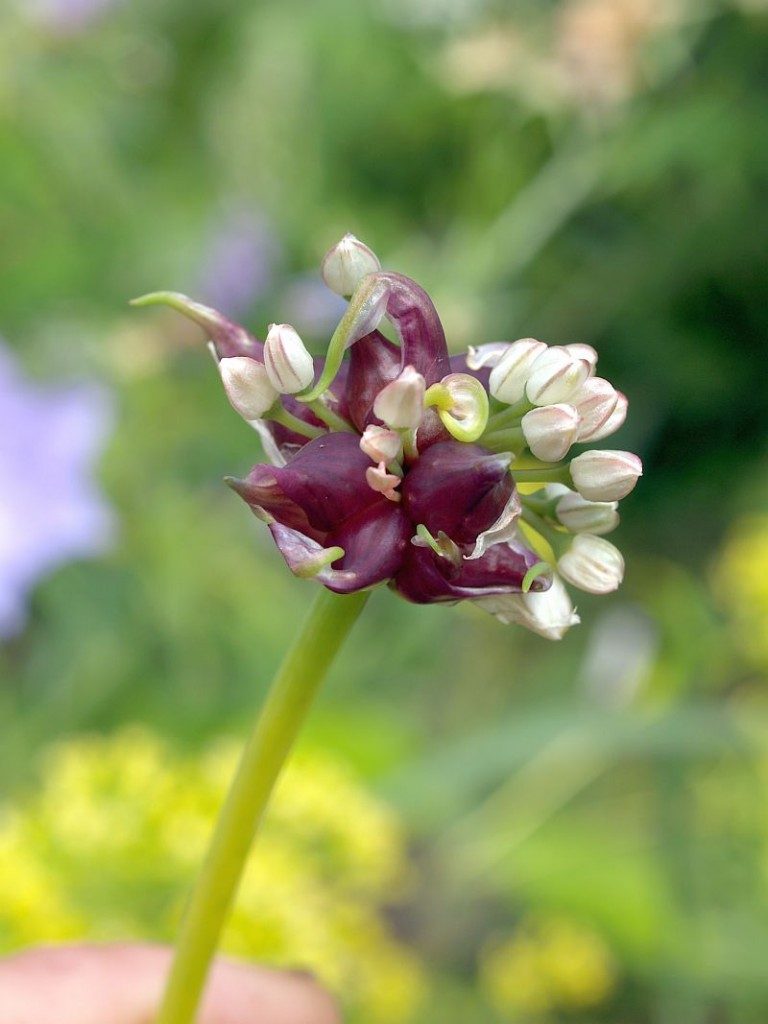
It turns out that this onion is not related to Allium fistulosum and is classified as a triploid hybrid onion Allium x cornutum which has been found both in Europe (Netherlands, France and Croatia) as well as India from where, it is speculated it may have originated. Like Egyptian onion / walking onion (Allium x proliferum), it is sterile and produces bulbils in its inflorescence. I’ve only experienced flowering of this once in 10 years of growing A x cornutum (see below). 10 years ago, Dr. Reinhard Fritsch had sent me 3 accessions from the German gene bank IPK Gatersleben, but only one of these has proven hardy here, although the French accession survived a few years. The other was from India and died the first winter.
In 2014, an open access paper appeared in the BMC Plant Biology journal (see https://bmcplantbiol.biomedcentral.com/articles/10.1186/1471-2229-14-24). This study combined molecular, phylogenetic and cytogenetic data and provided evidence for a unique triparental origin A. × cornutum with three putative parental species, A. cepa, A. pskemense, and A. roylei. Hardiness is probably bestowed by Allium pskemense which has been growing in the Ringve Botanical Gardens in Trondheim for many years.
I had planted the Croatian accession in the new Allium garden at the botanical gardens in Trondheim a couple of years ago and I started harvesting it the other day as it starts to die back at this time of year and looks untidy:
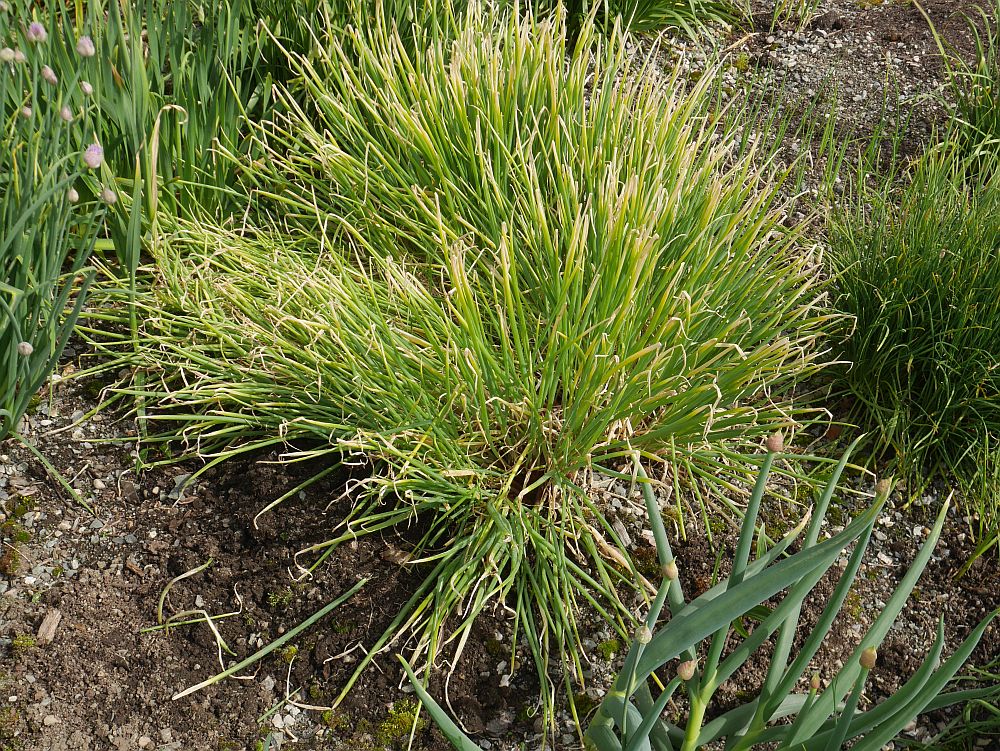
In this little patch, there were an enormous amount of onions, admittedly a bit on the small size, but relatively easy to peel and far outyielding shallots here! I will now harvest these and replant to see how well these yield after one year of growth (I am unsure as to exactly when these were planted, but this may be two years of growth).
I decided to use a small part of this harvest in making bhajis (see http://www.edimentals.com/blog/?p=21561)…and they were delicious!
In Croatia, Puizina, 2013 says: “The term ‘shallot’ in Croatia denotes three genetically and morphologically different, vegetatively reproduced relatives of the common onion, Allium cepa, which are mainly traditionally cultivated for consumption and as a spice: A. cepa Aggregatum group, A. × proliferum and A. × cornutum”. Further, the triploid shallot is “traditionally cultivated in South and coastal Croatia under the name ‘Ljutika’ and it is very popular as a spice and condiment due to its tasty bulbs and leaves”….and “In contrast to most flowering species of Allium in which the leaves are already dying back at flowering time, triploid shallots are perennials, their leaves remain green and suitable for use during entire year”. Ban (2019) shows morphological comparisons of all three types of “shallot” and demonstrates that there are different forms of Allium x cornutum in cultivation, differing in leaf cross-section, bulb shape and leaf waxiness. Bulbs are traditionally preserved in vinegar (Puizina, 2013) as they are difficult to store, resprouting after harvest. It is also stated that A. x cornutum is tolerant of drought and poor soil, enabling it to persist in wild habitats. In fact my own accession of the Croatian shallot originates from such a habitat:
Plant passport data from IPK Gatersleben: “SOURCE – Croatia: Jugoslawien 1985 Dr Hanelt Nr. YUGHAN-85: 5, weedy: Tal zwischen Male Grablje und Milna, offengelassene Olivenpflanzung” (valley between Male Grabje and Milna, open olive plantation). This area has a very different climate than Trondheim, indicating that this is also a very adaptable onion.
The real St. Jansuien shallot from the Netherlands has now also been planted in the onion garden in Trondheim.
I will be making Johannes’ shallots (Sankthans-sjalott) available to members of Norwegian Seed Savers (KVANN) through our autumn catalogue (membership can be had by signing up here: https://kvann.no/bli-medlem . My grandson will also get a packet of onions for his birthday (but, don’t tell him yet…I want it to be a surprise ;) )
References
Ban, S.J., 2019. Samples included in DNA analysis. SafeAlliDiv meeting, Olumuc, April 2019 (Symposium presentation).
Puizina, J., 2013. Shallots in Croatia – genetics, morphology and nomenclature. Acta Bot. Croat. 72 (2), 387–398.
KVANN at the Ringve Botanical Garden Open Day
Thanks for Meg and Elizabeth for helping out on the stand!
We could have doubled the number of ramsons (ramsløk) plants which sold out quickly!
Thanks also to all the members who came along! Plants were half price for members!
Oslo Allium Raid
12th June: Added pictures of a few more edibles!
The Allium garden at Ringve
The Allium garden at the Ringve Botanical Garden (Chicago) in Trondheim contains a collection of old Norwegian onions used for food from all over Norway including Allium fistulosum (Welsh onion), A. x proliferum (Egyptian and Catawissa onions), A. oleraceum, A. vineale, A. ursinum, A. scorodoprasum and A.victorialis (the last four are wild or naturalised species that have been moved into gardens in the past for food and, in the case of ursinum and victorialis are currently being domesticated in a big way!
In addition, a collection of wild species and ornamental cultivars have been planted to demonstrate the diversity of the Allium family!
I’ll be adding pictures to the album below on a regular basis.
See more pictures on my FB album here: https://tinyurl.com/y489yldy
Norsk:
Allium hagen ved Ringve Botaniske Hagen (NTNU) i Trondheim inneholder en samling av gamle norske matløk samlet fra hele Norge i perioden 2008-2019. Dette inkluderte Allium fistulosum (pipeløk), A. x proliferum (luftløk), A. oleraceum, A. vineale, A. ursinum, A. scorodoprasum og A.victorialis (de fem siste er vill- eller naturaliserte arter som har blitt flyttet til hager som matplante før i tiden, og dette er fortsatt gjort når det gjelder ursinum (ramsløk) og victorialis (seiersløk) i økende grad!
I tillegg kan man her se en samling av ville arter og pryvarianter plantet for å demonstrere mangfoldet av Allium-slekten!
Hagen er støttet finansielt av Landbruksdirektoratet, og Genressurssenteret.
3 videos of Painted Ladies (Tistelsommerfugl) on Allium schoenoprasum on 11th June 2017
300719:
160819: Allium cernuum x stellatum?
160819: Allium wallichi
KVANN’s Annual Meeting Weekend: Days 1 and 2
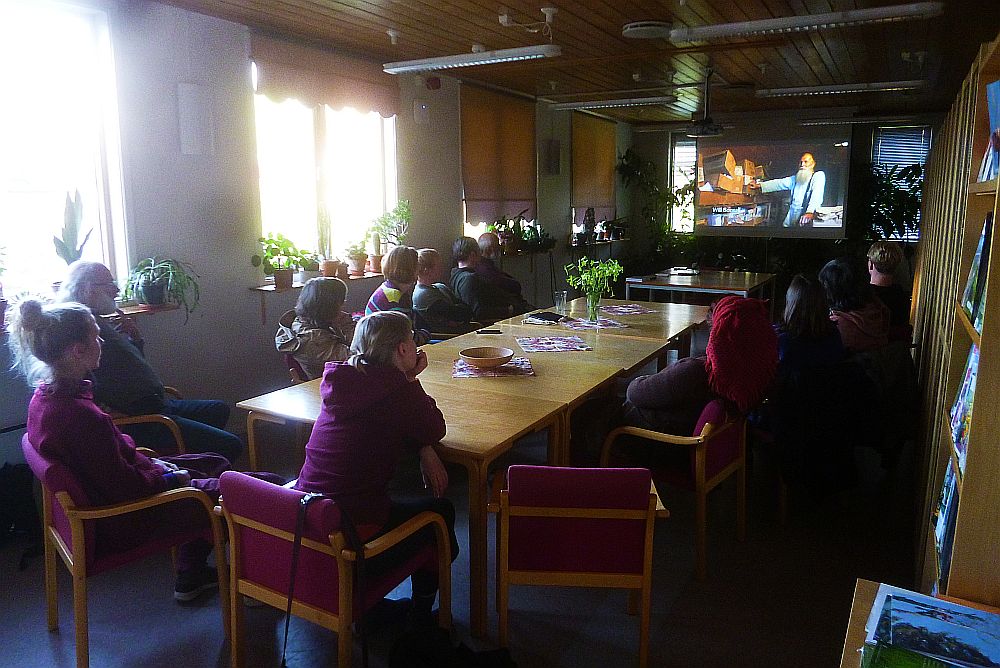
During the first weekend in May 2019, about 30 members of KVANN (Norwegian Seed Savers) assembled in Trondheim for our Annual meeting weekend!
Thanks to Kjell Hødnebø, Bell Batta Torheim, Lone Dybdal, Berit Børte, Ane Mari Aakernes and Anders Nordrum for providing pictures!
On the Friday evening, we showed the film Seed: The Untold Story, a thought provoking film about the importance of diversity, the tragedy of industrial agriculture and multinational seed companies and hope! The picture on the screen shows one of the most important seed savers in the history of Seed Savers Exchange (SSE) in the US, Will Bonsall! In my 2003 SSE Year Book, he offers a staggering 2,133 different grains and vegetables including 80 Jerusalem Artichokes, 503 potatoes, 76 radishes, 55 barley and 279 beans! This is Mr. Diversity (see below for his full listings in 2003)!


Saturday morning was KVANN’s Annual Meeting, again in the meeting room of the Administration building at the Ringve Botanical Garden (Trondheim) where I have an office:
After lunch, we had a series of talks, first from Vibekke Vange, leader of the Botanical Garden, a general introduction to the garden and work done on conservation of plant genetic resources.
After a great veggie lunch delivered by Persilleriet,
Bell Batta Torheim from Landbruks- og matdepartementet (Ministry of Agriculture and Food) gave an informative talk about international work in FAO with the International Treaty on Plant Genetic Resources for Food and Agriculture and the Commission on Genetic Resources for Food and Agriculture:
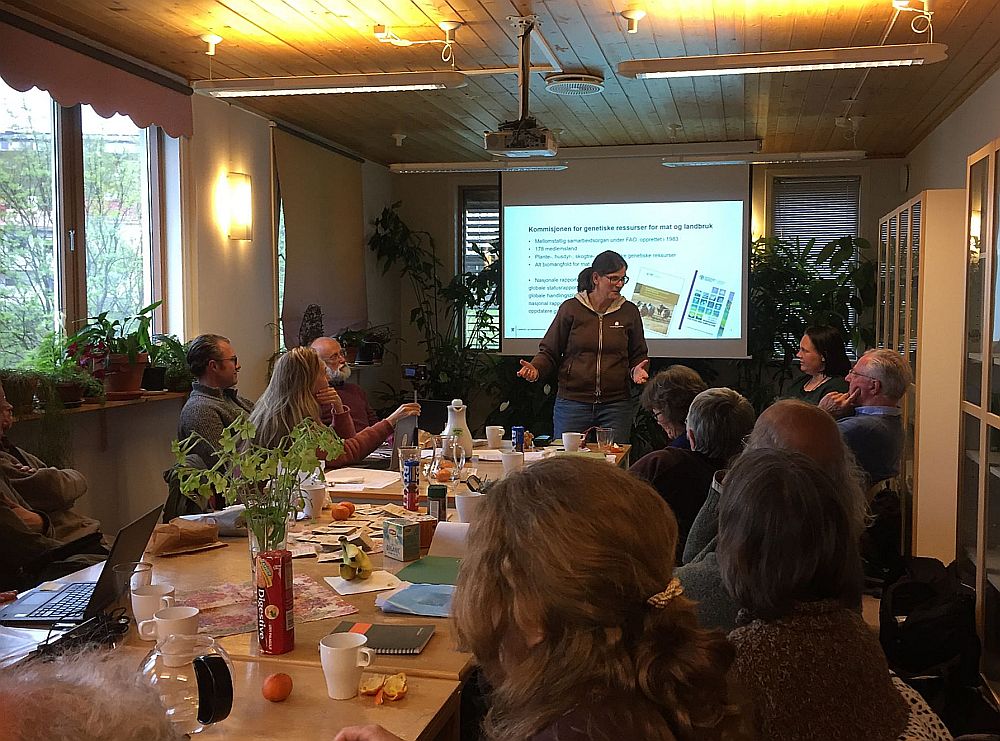
Next up was Anders Nordrum of datsja.no, who gave an engaging talk about the almost total lack of food preparedness in Norway and what each of us can do about this. To learn more about Anders who lives in the Norwegian mountains in Valdres, I’ve written about his Preparedness garden here (in Norwegian): http://www.edimentals.com/blog/?p=22065
Anders is one of two leaders in KVANN’s group (laug) working on garlic and has also just started testing how well a selection of perennial vegetables grow at his mountain summer farm at over 900m above sea level (he has successfully grown garlic here).
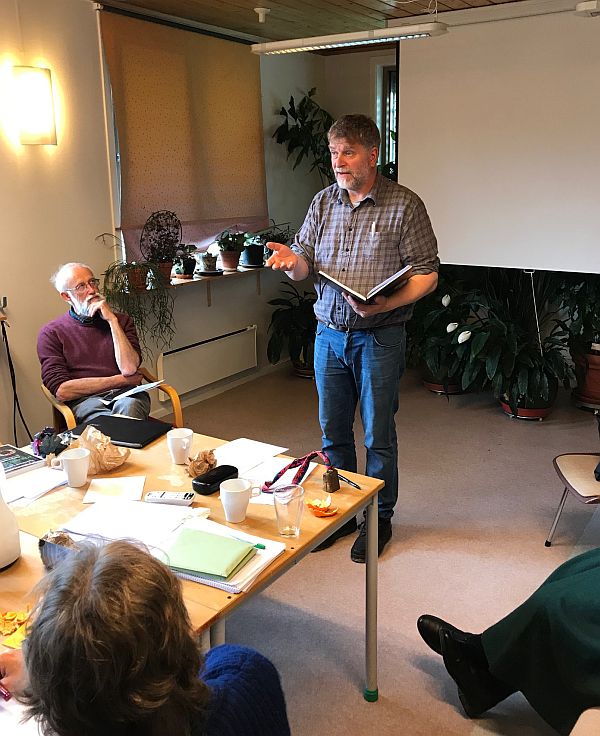
The final talk was by Morten Rasmussen of the Norwegian Genetic Resource Centre who KVANN collaborate closely with…in fact it was they that founded the movement back in 2005 (Planteklubbene; a series of plant clubs dedicated to saving old traditional varieties of useful plants). He gave an update on national work on plant genetic resources.
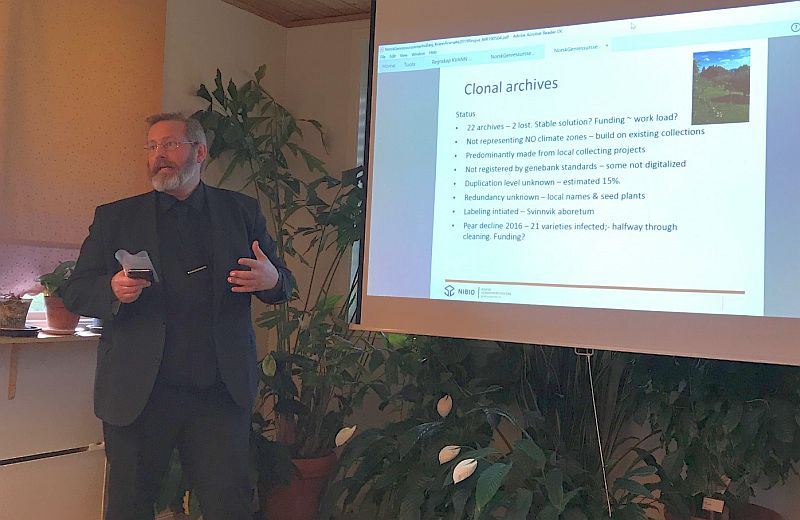
After the talks, Vibekke guided us around the botanical garden with focus on their work on plant genetic resources including the collection of old ornamentals and herbs from mid-Norway, the Renaissance Garden, containing only plants mentioned in Norway’s first gardening book Horticultura from the 1690s and the new Allium garden which I have the responsibility for and gave an introduction to in just about the worst weather our area can provide at this time of year, see https://www.facebook.com/beritboslo/videos/10219078174126065/
After the walk, the Annual meeting dinner was also provided by Persilleriet and for many of us the “short” presentations made by each of the participants after dinner was the highlight of the day! What was planned to be a quick half an hour around the table presentation turned into two hours, illustrating what an amazing diverse group of people that were present!

